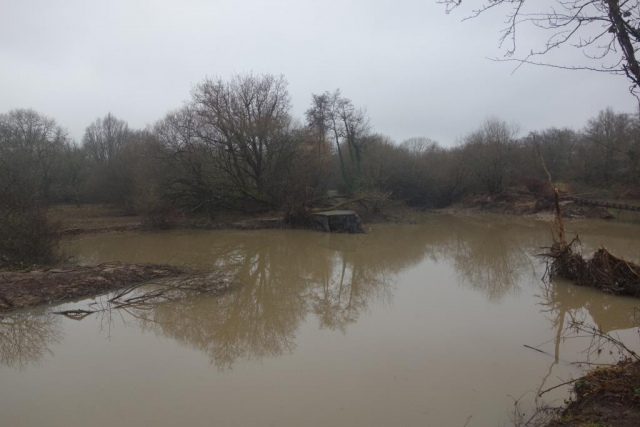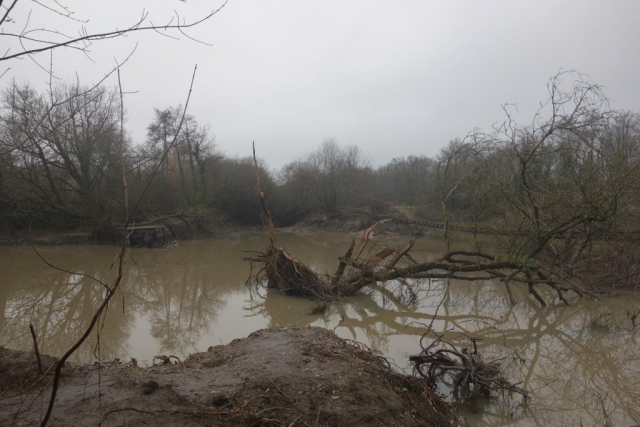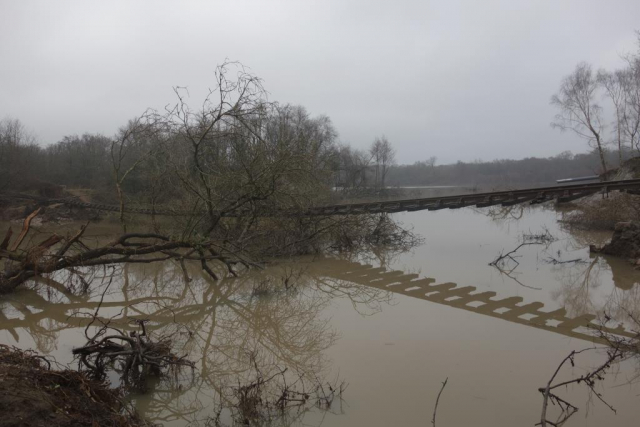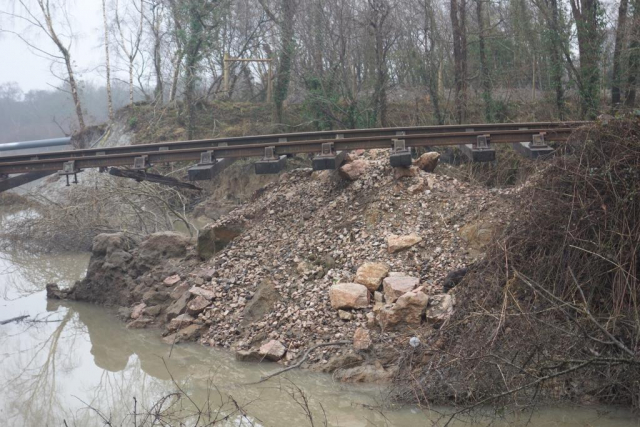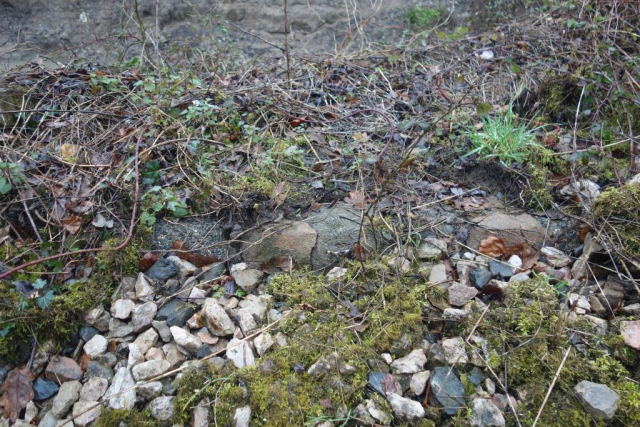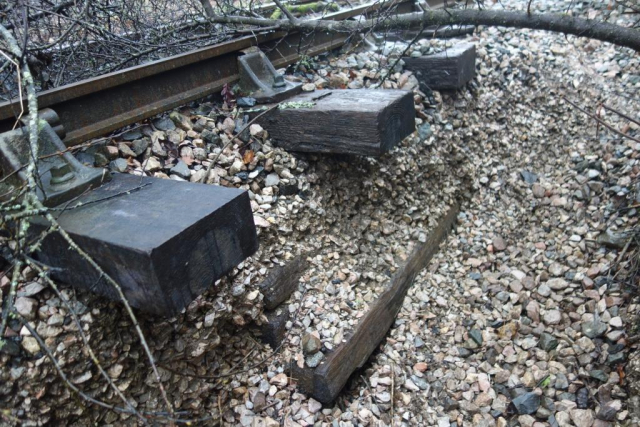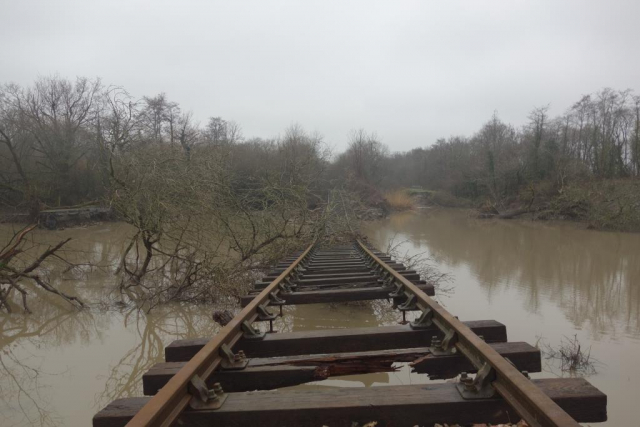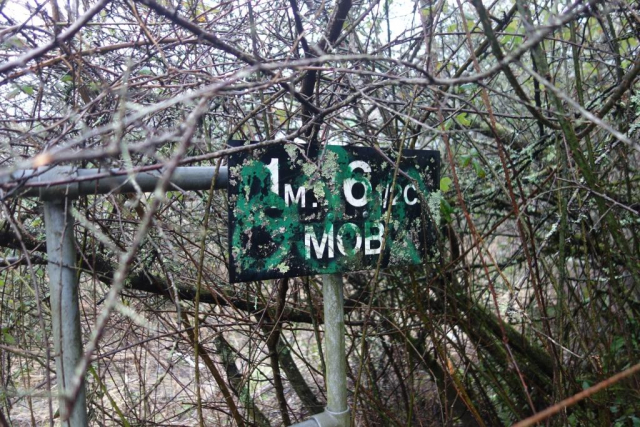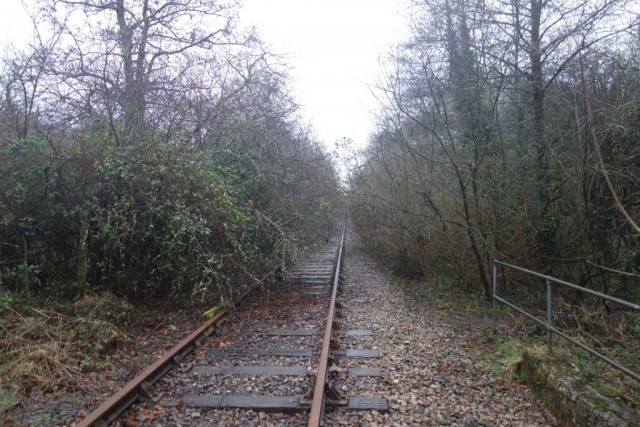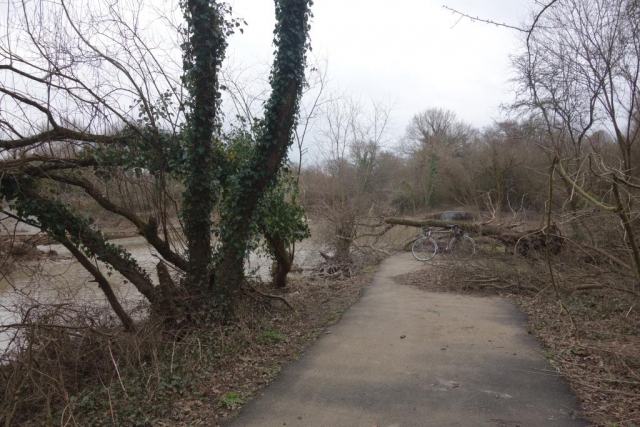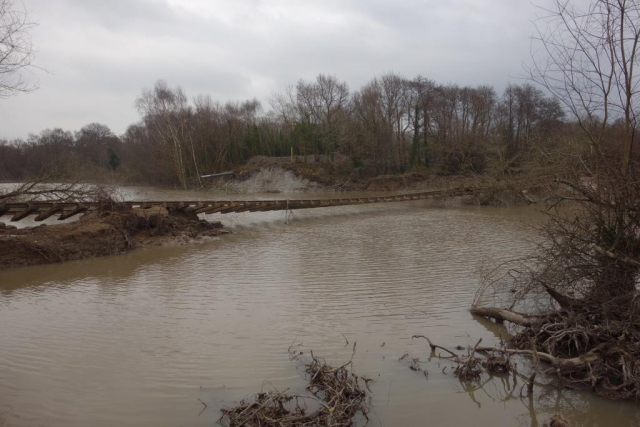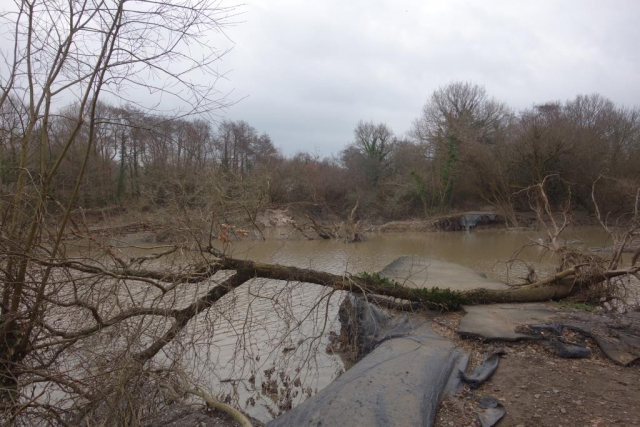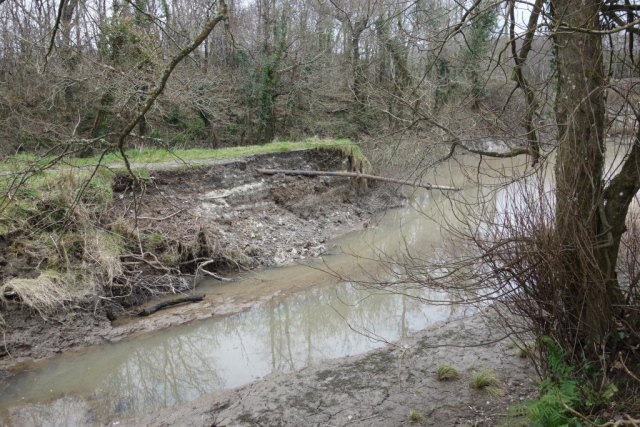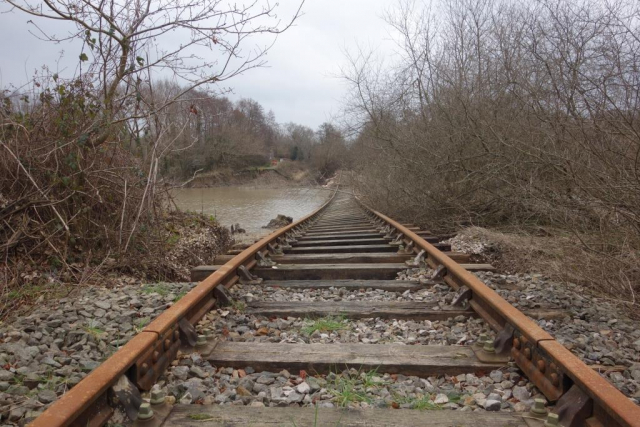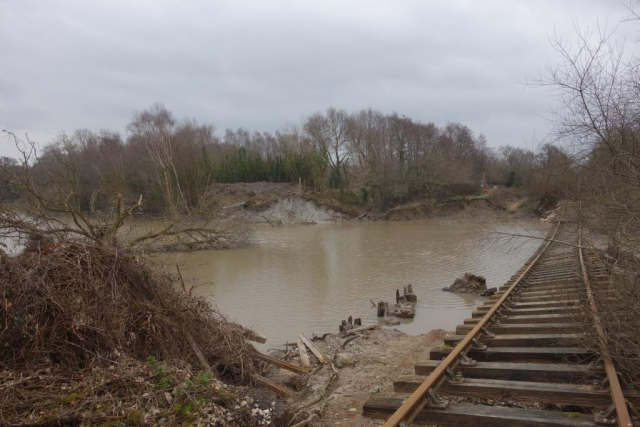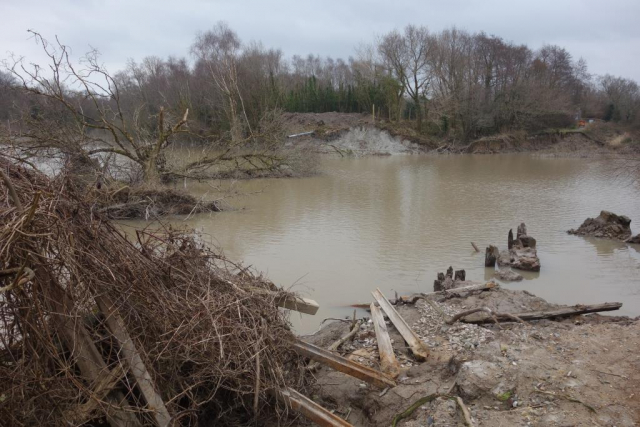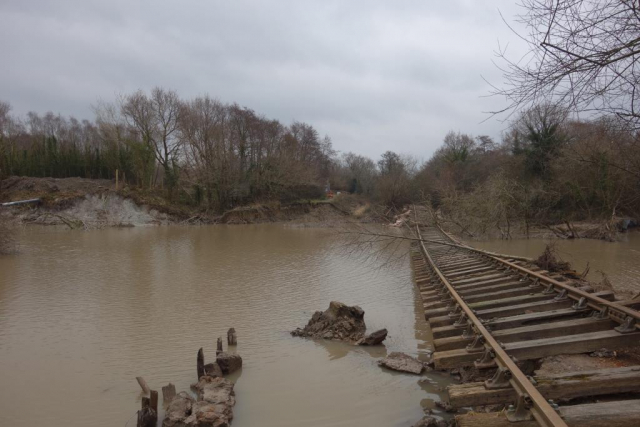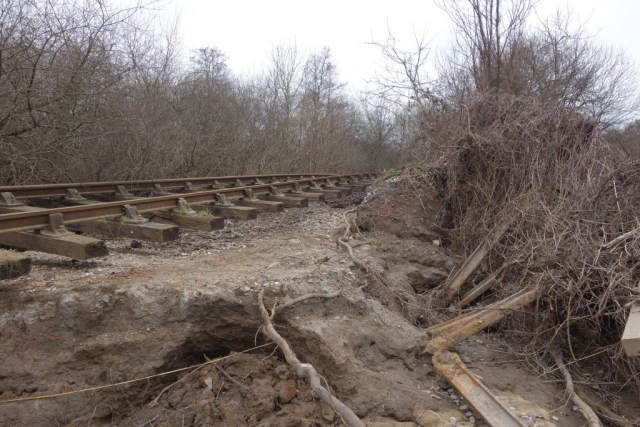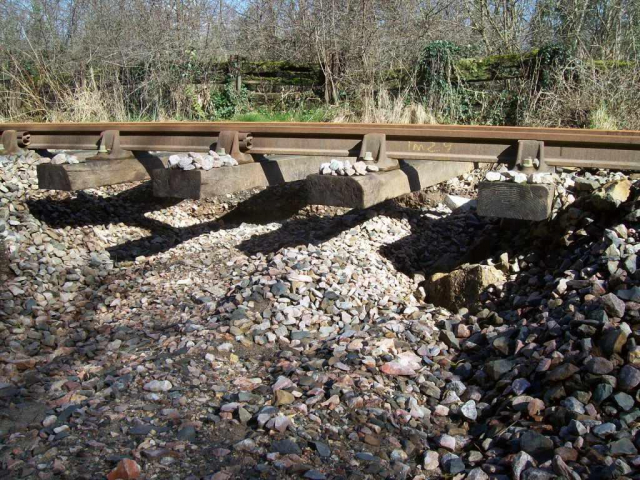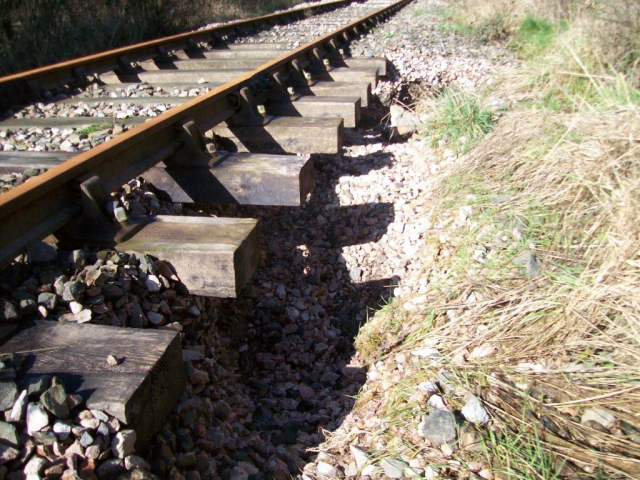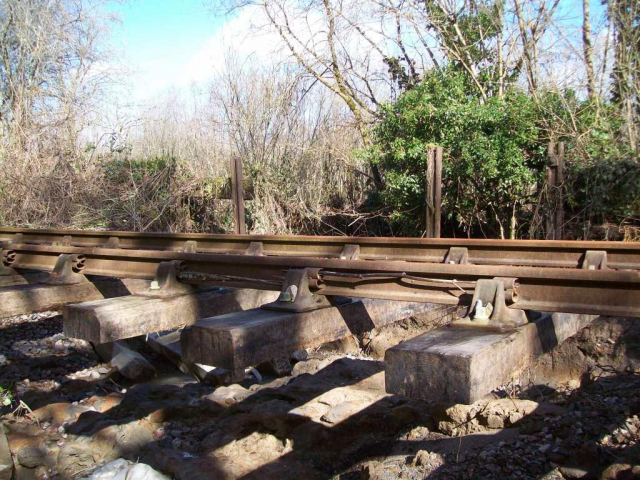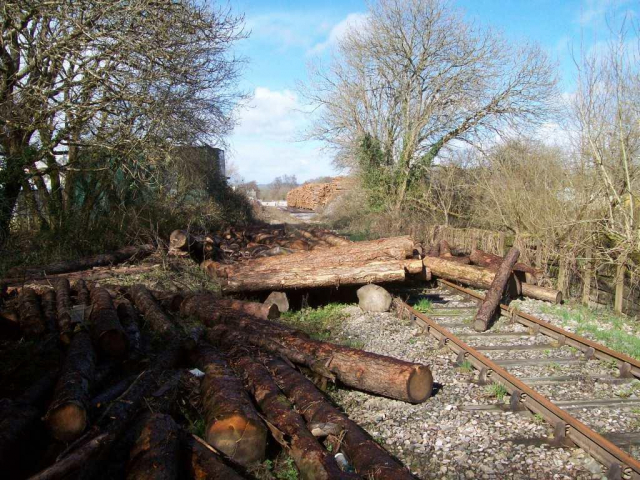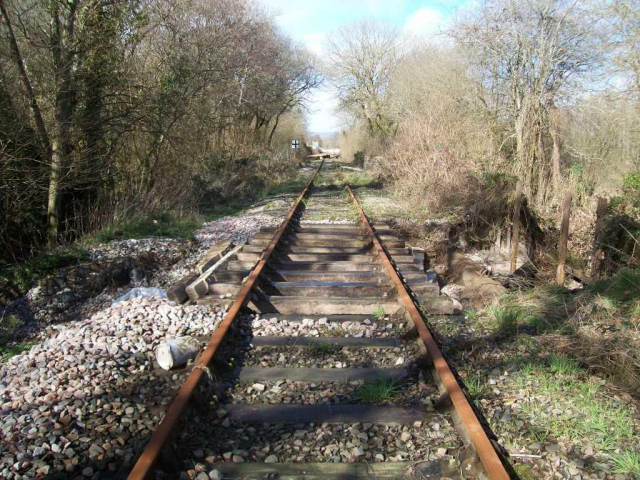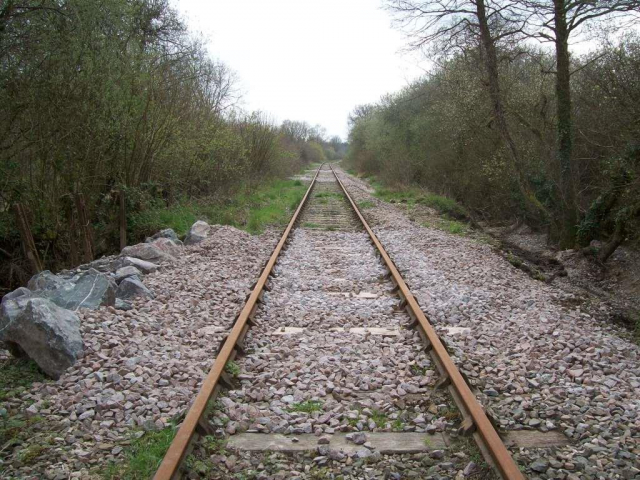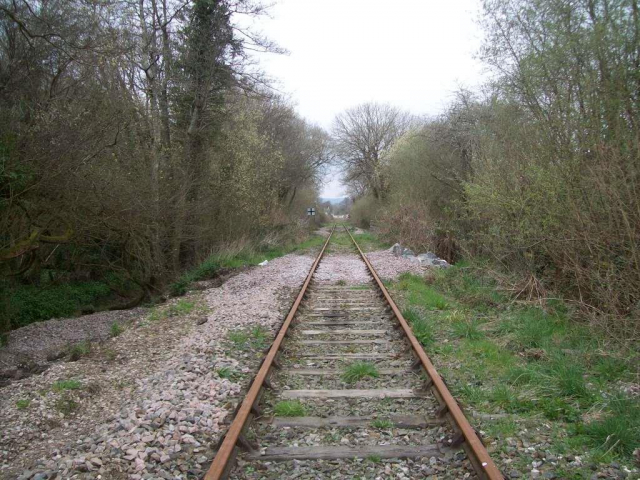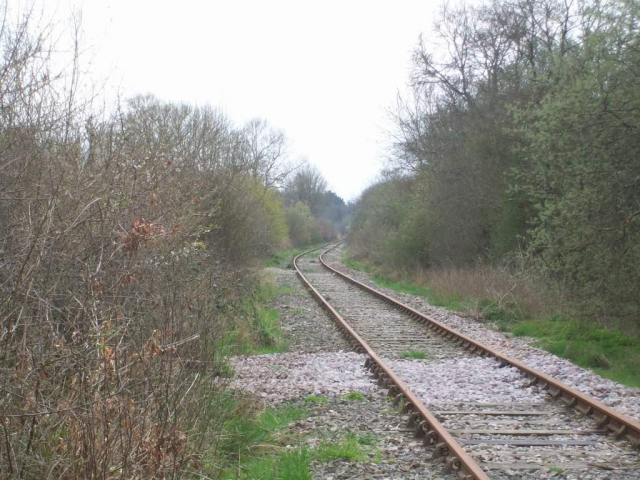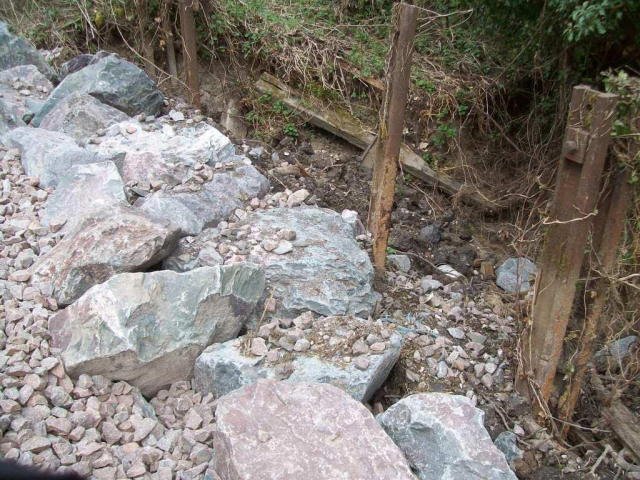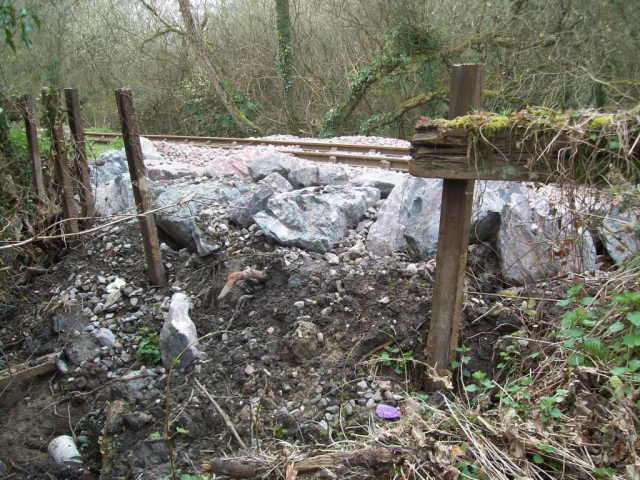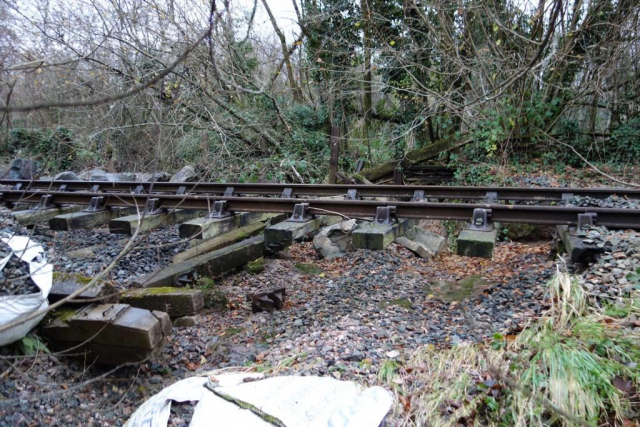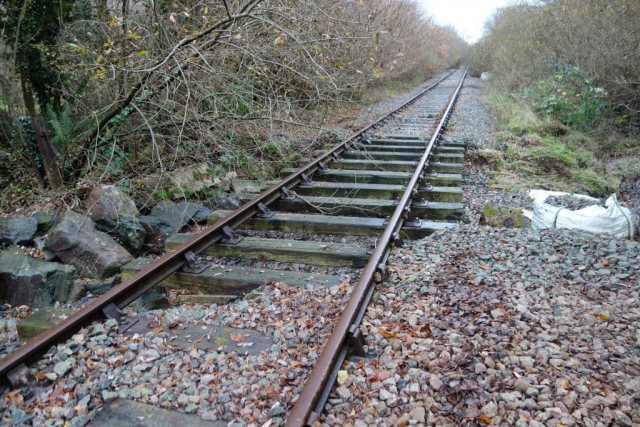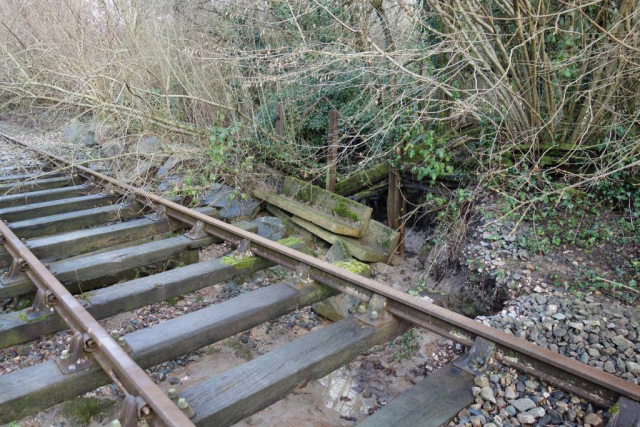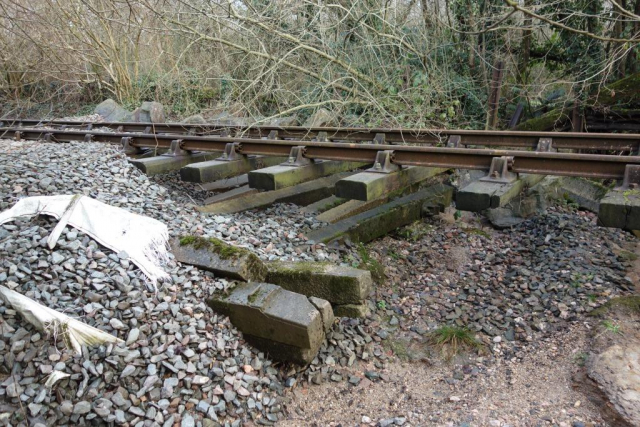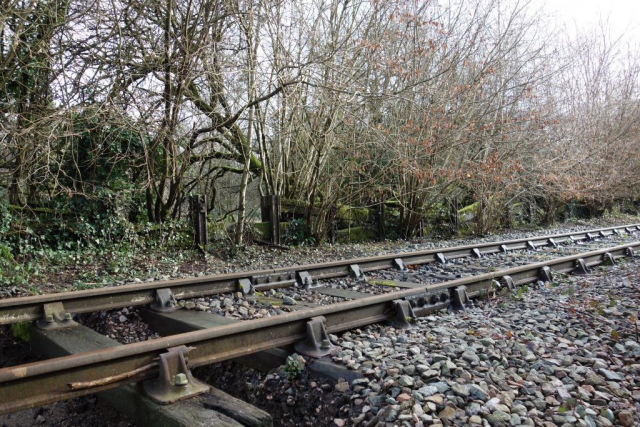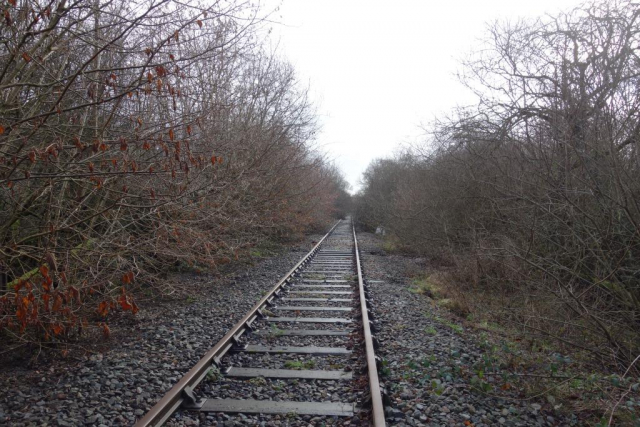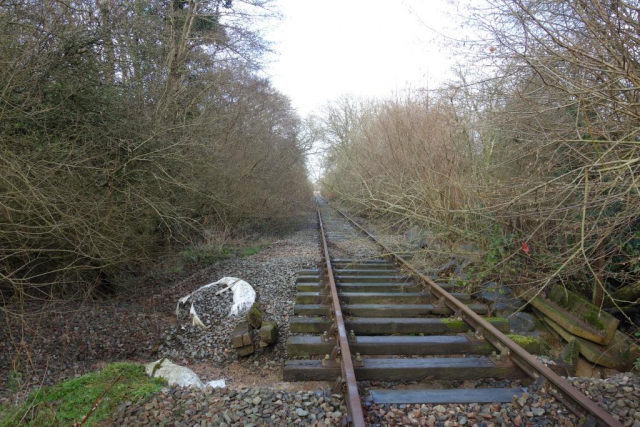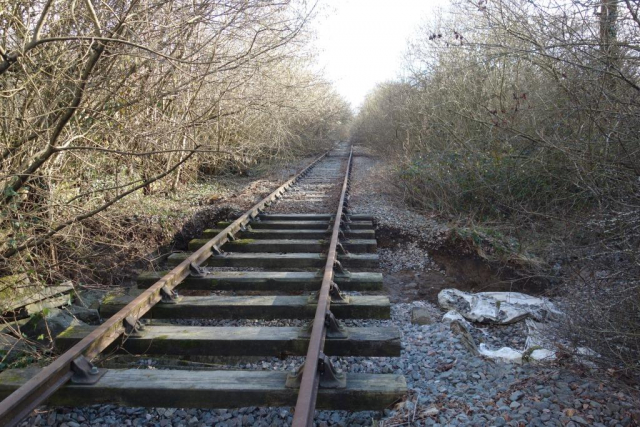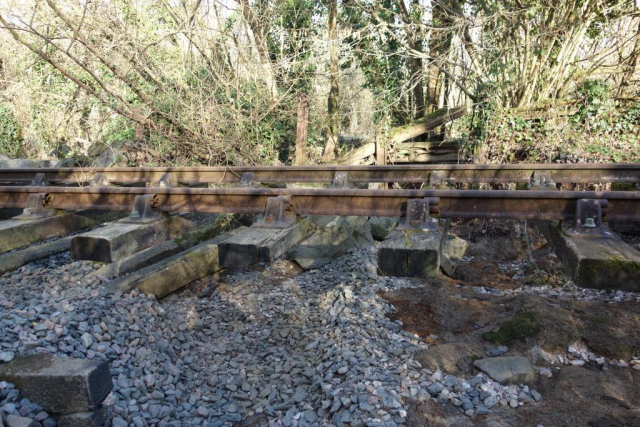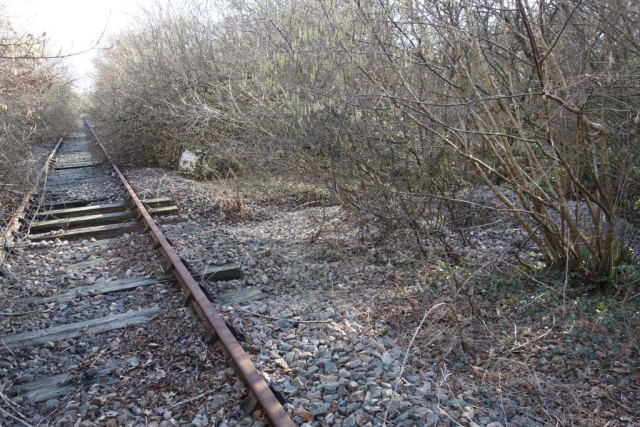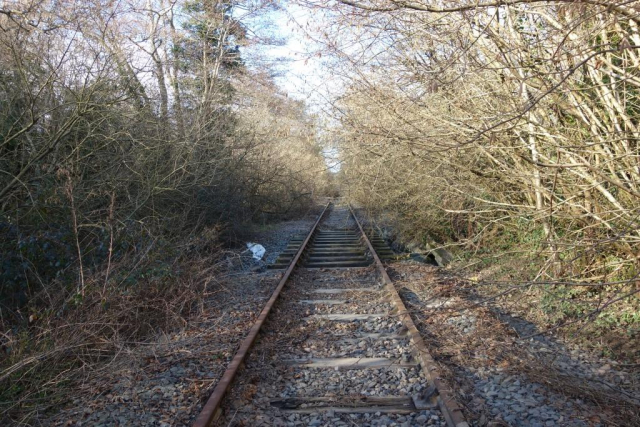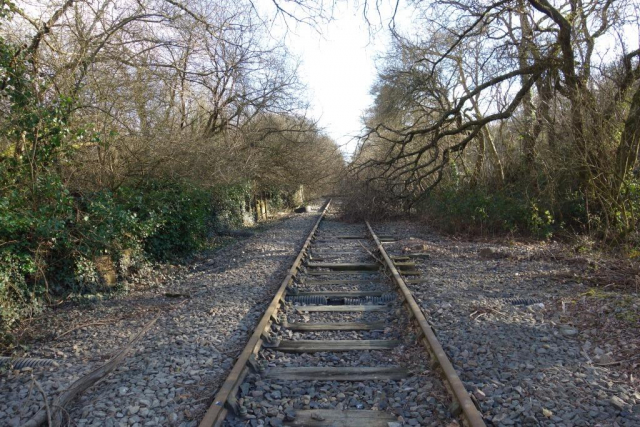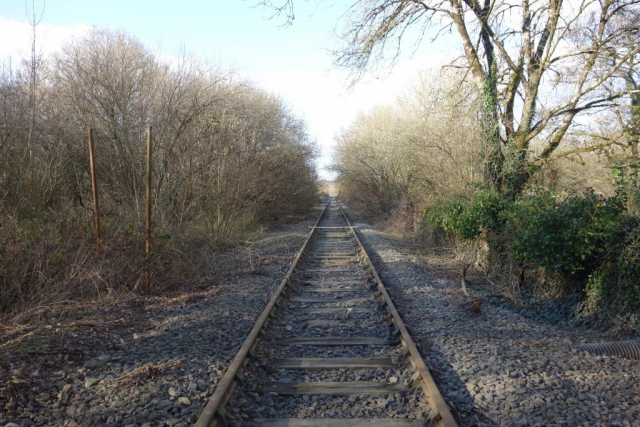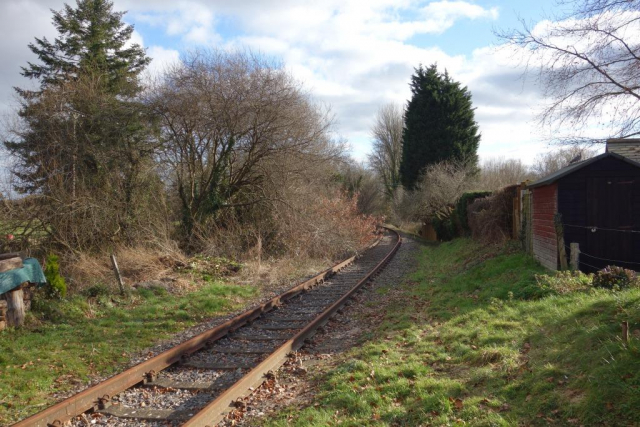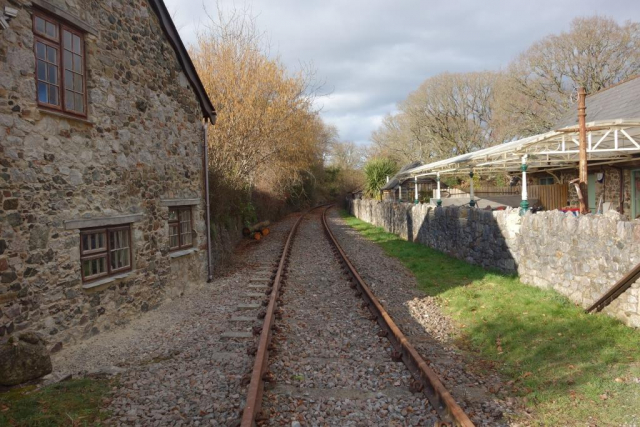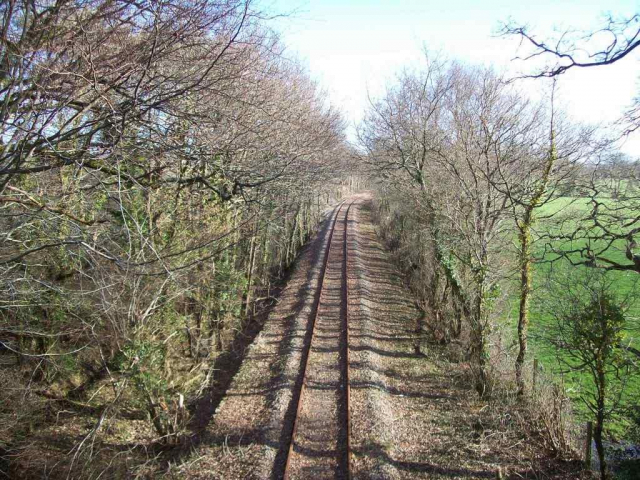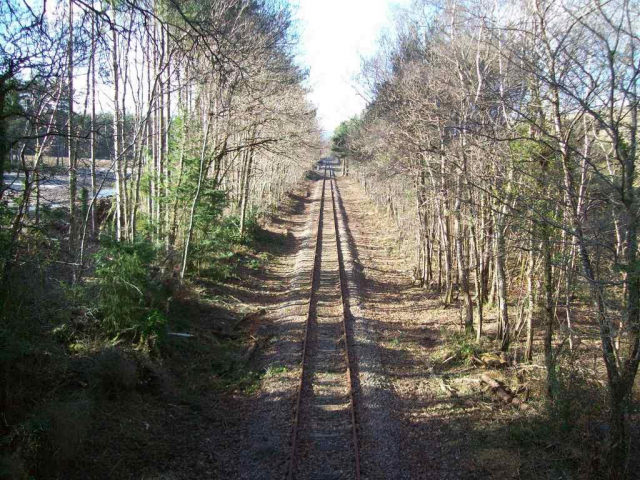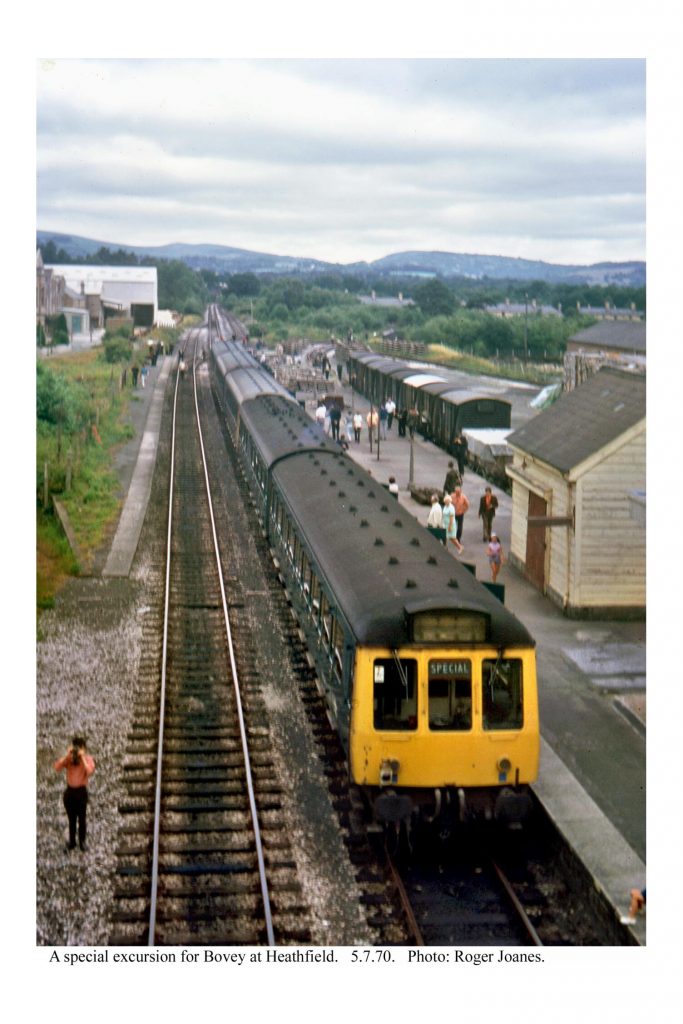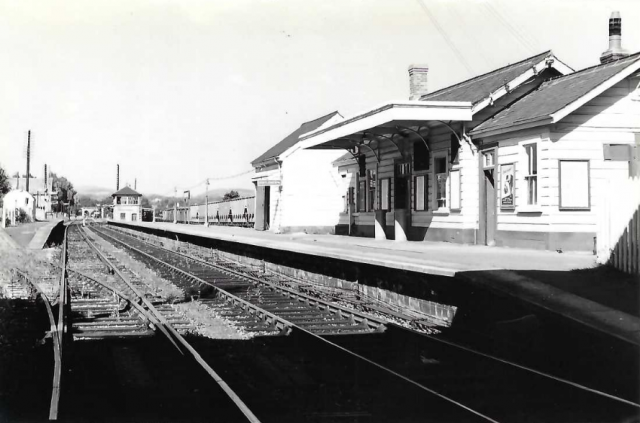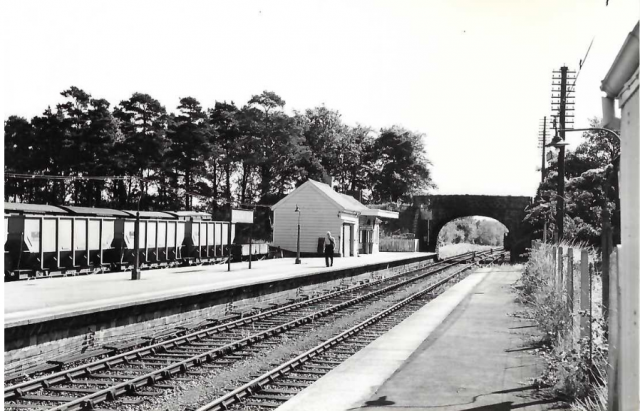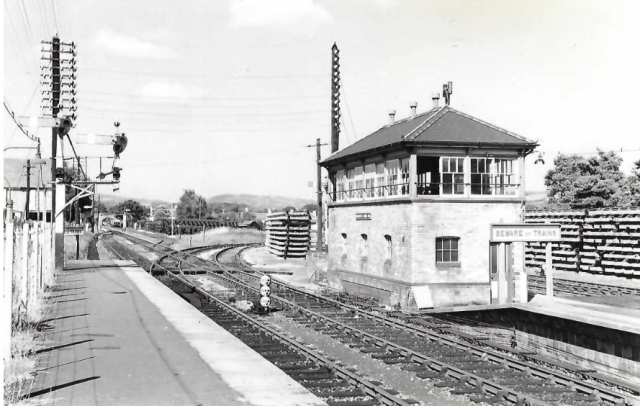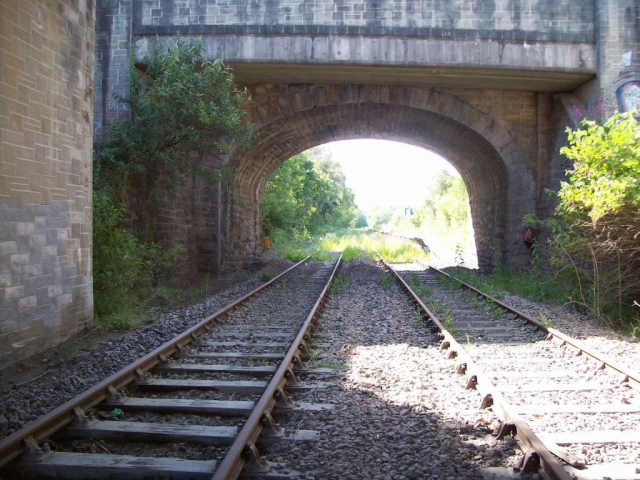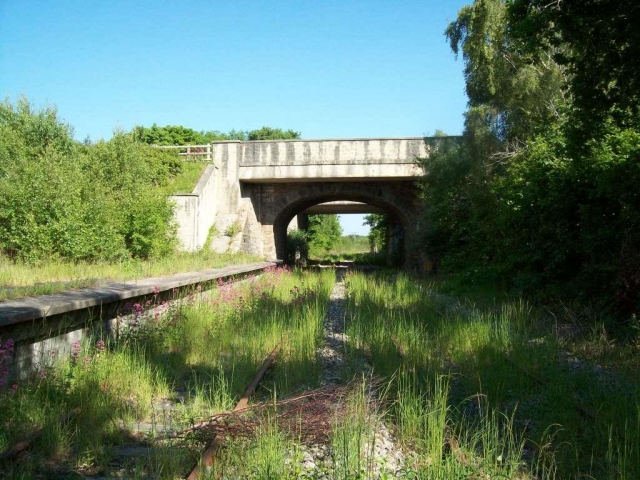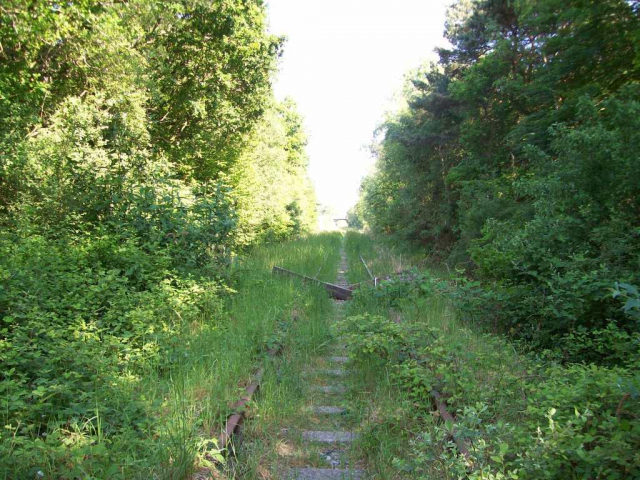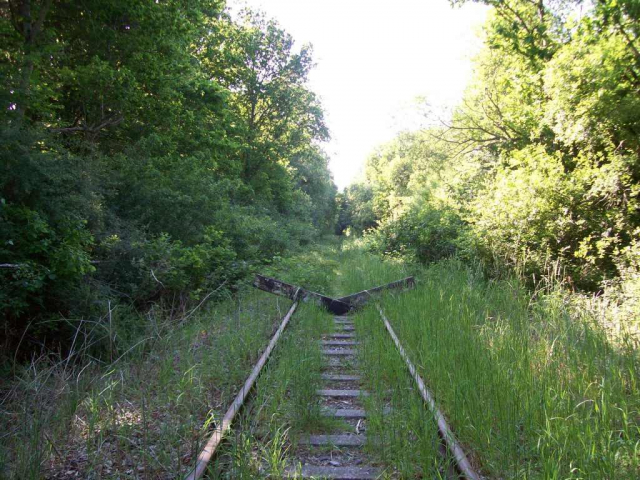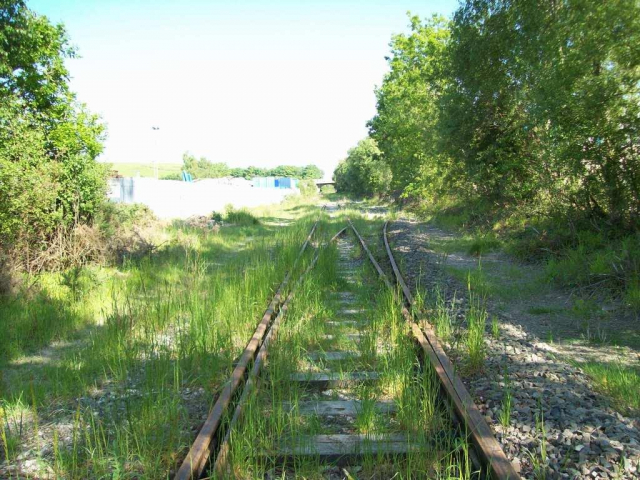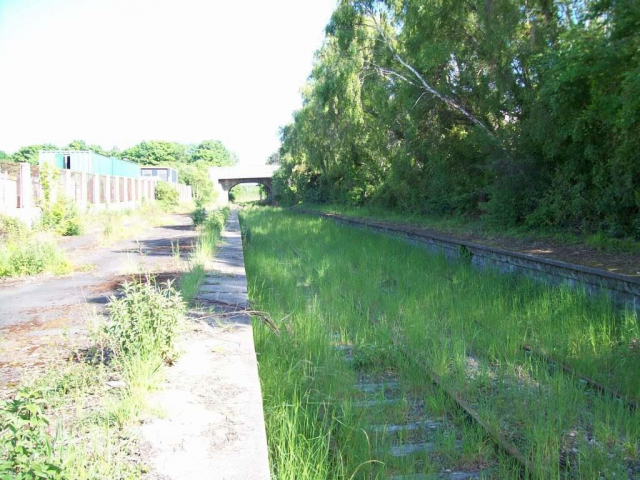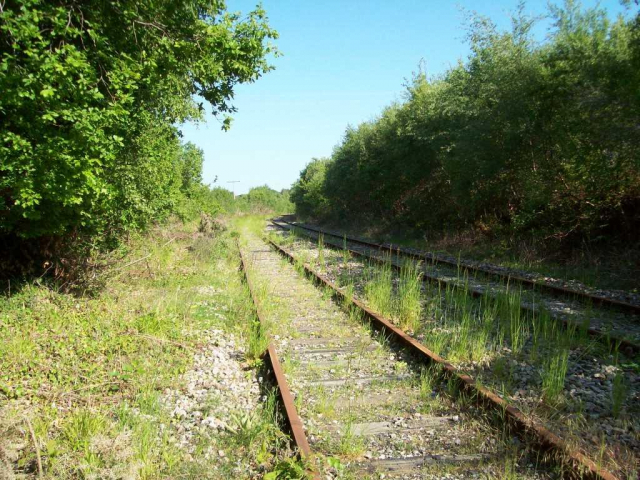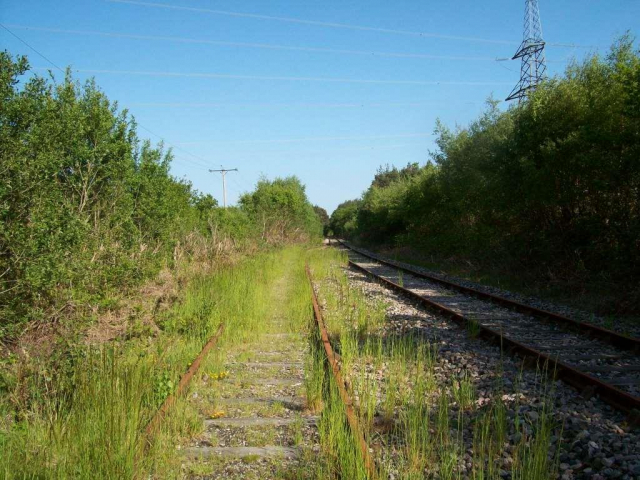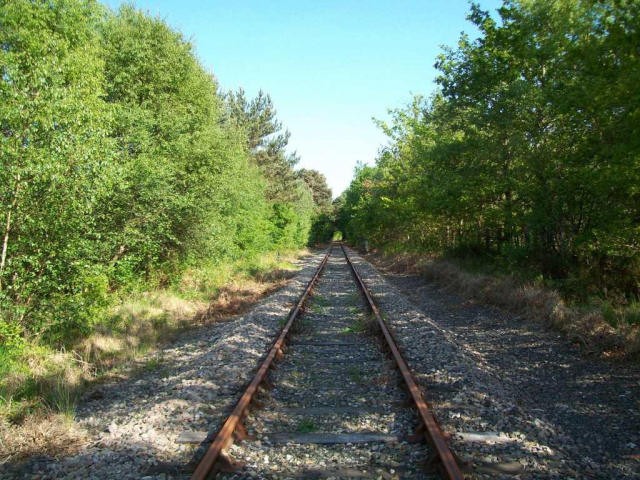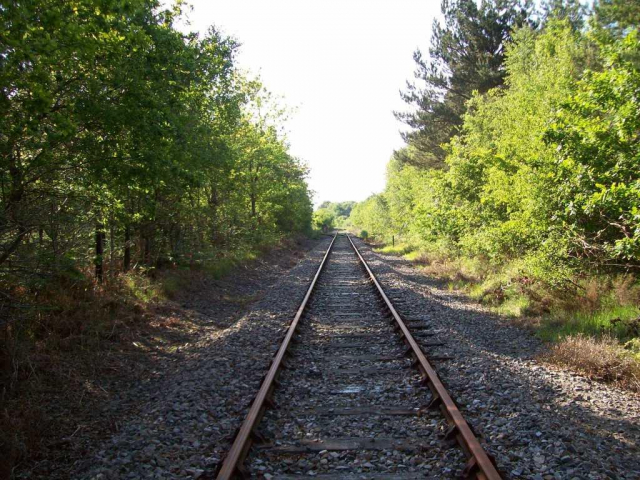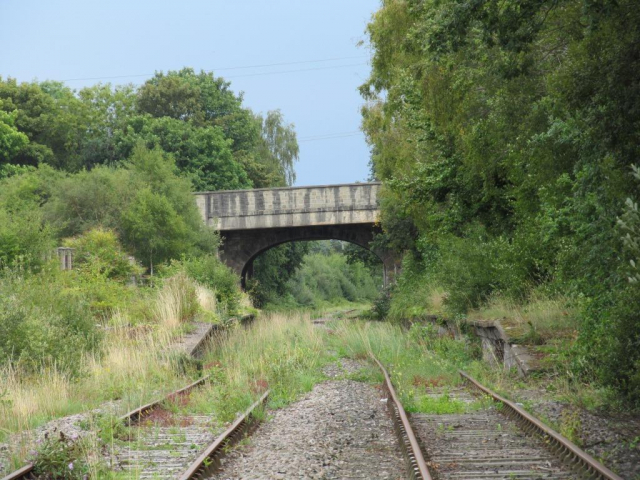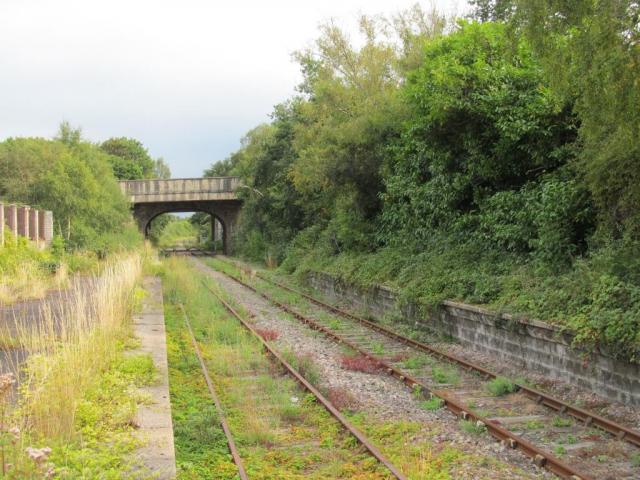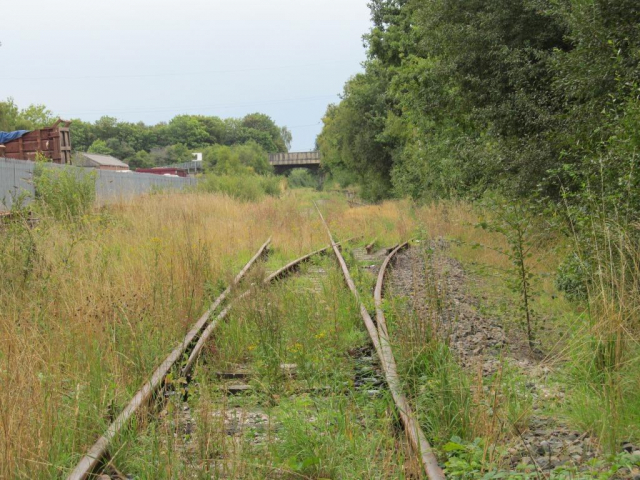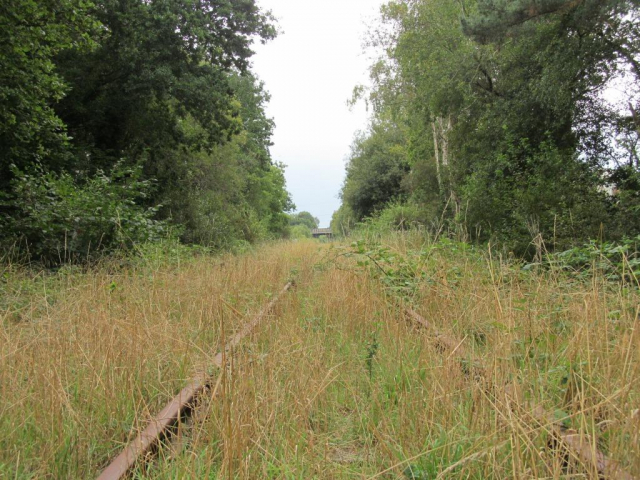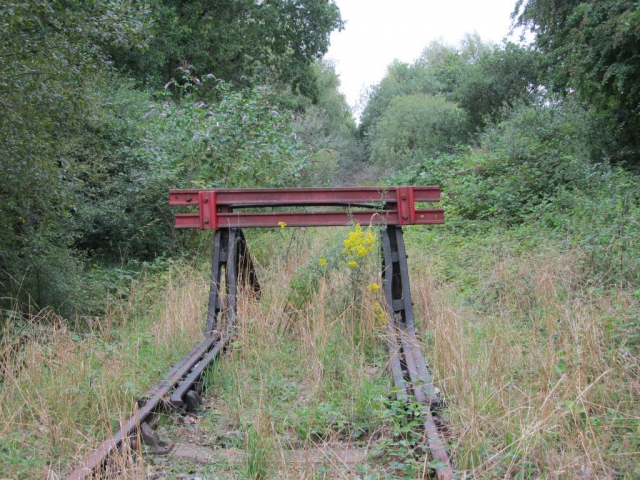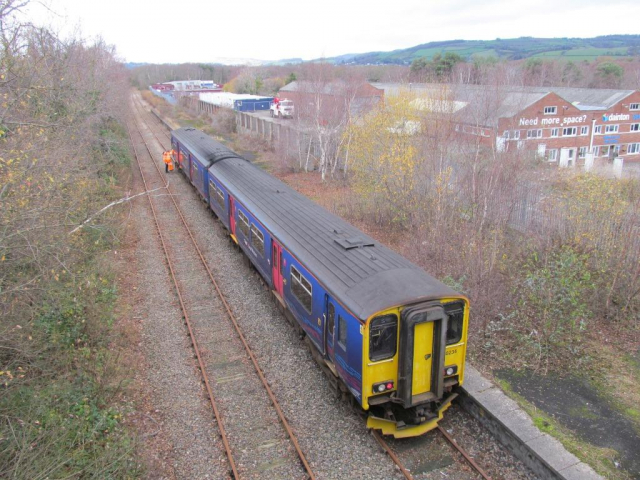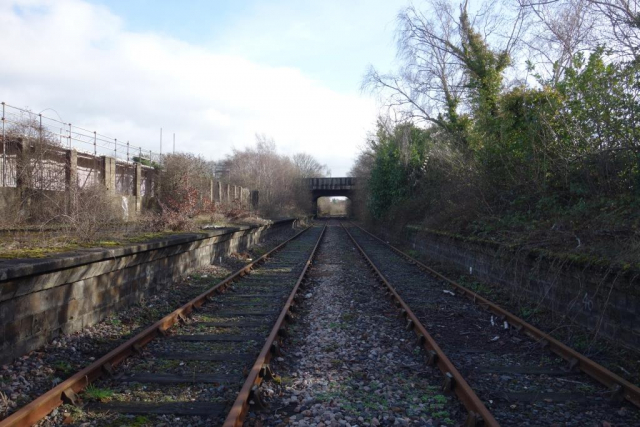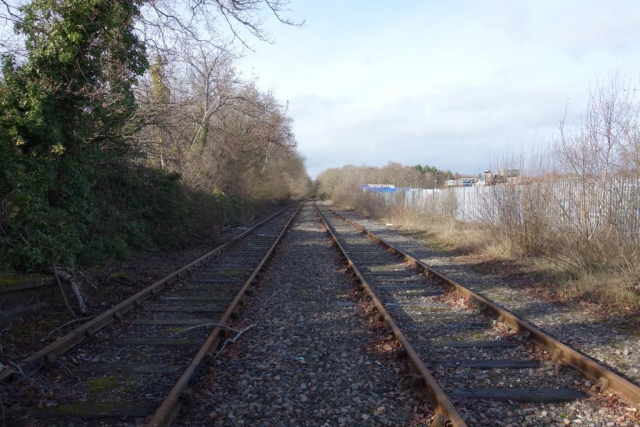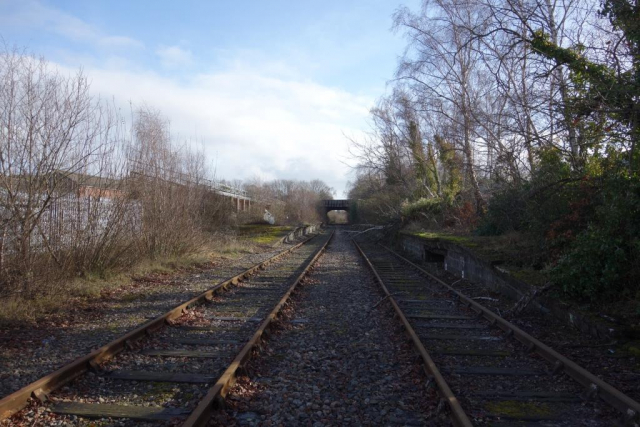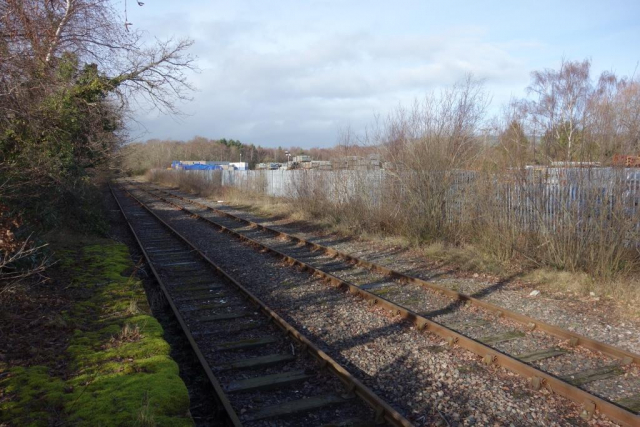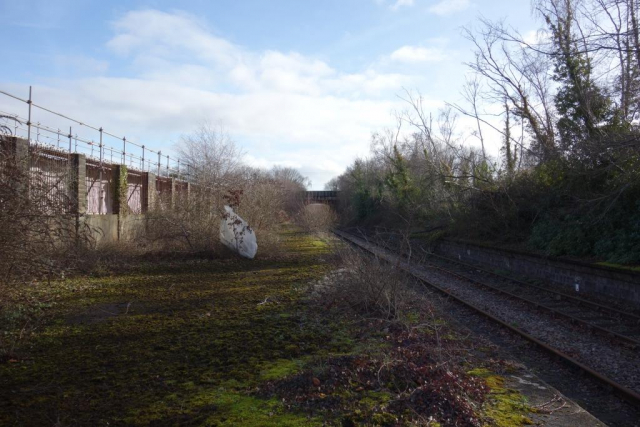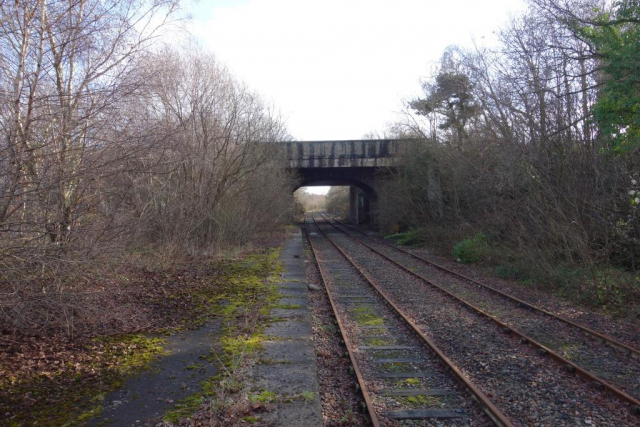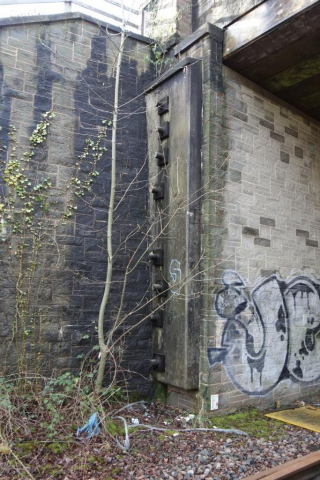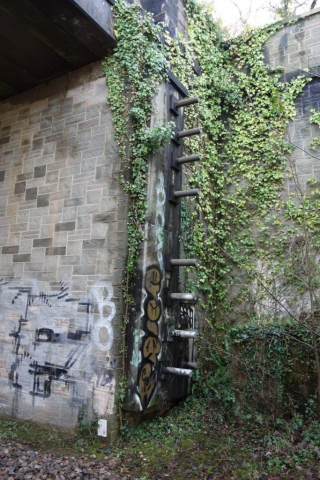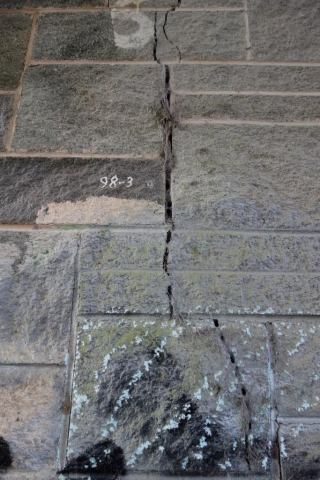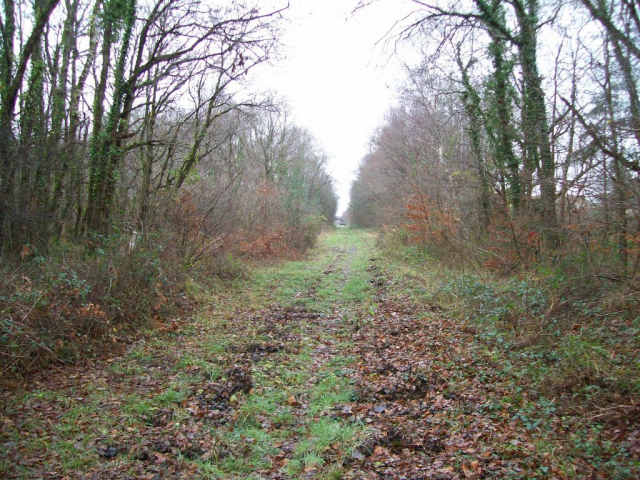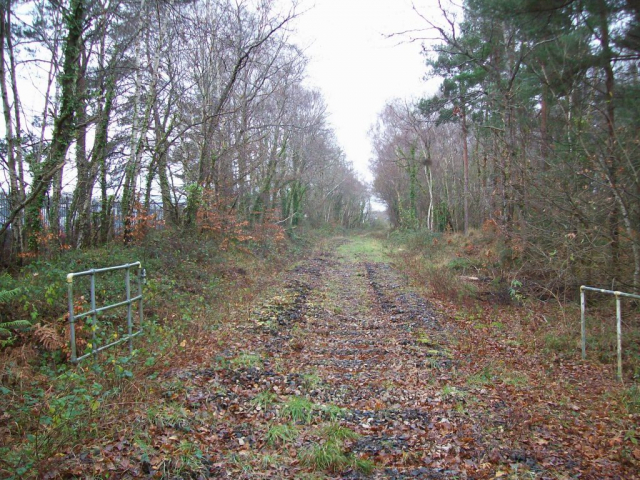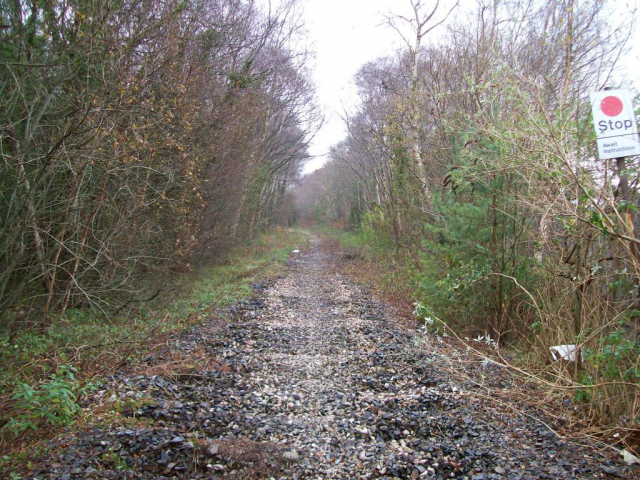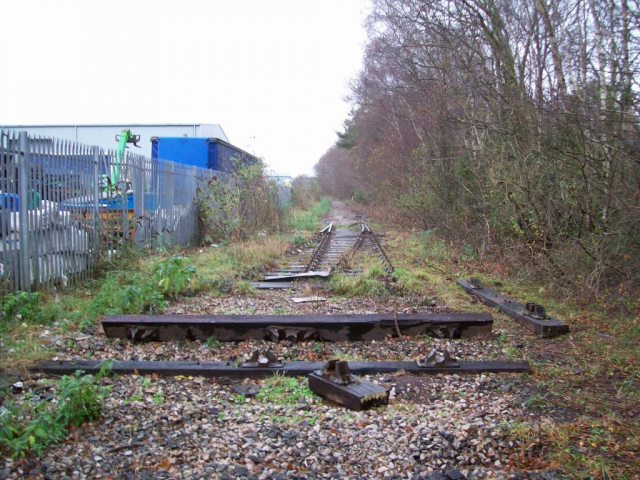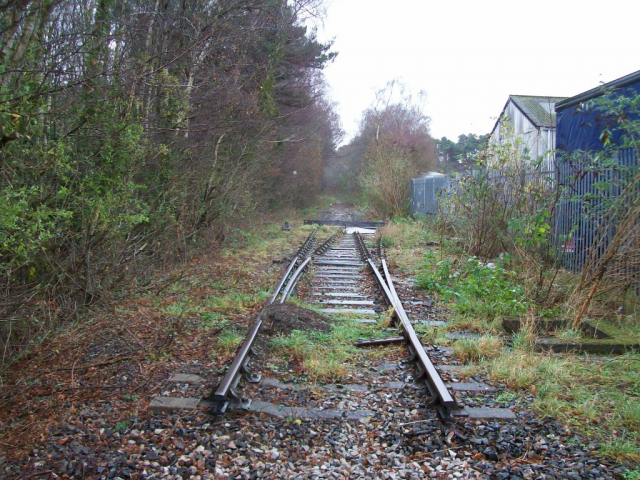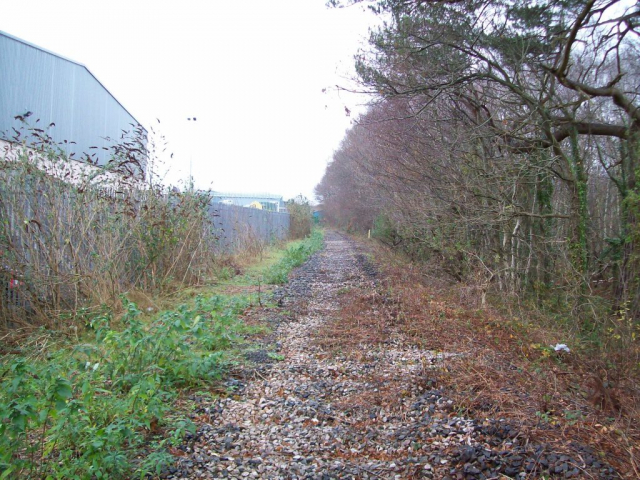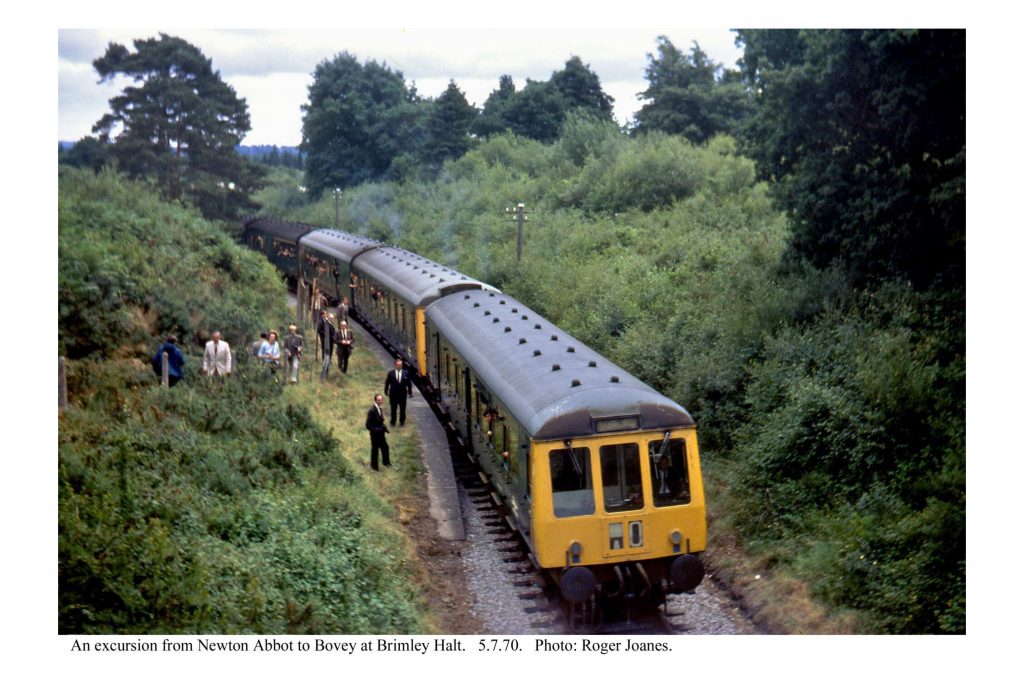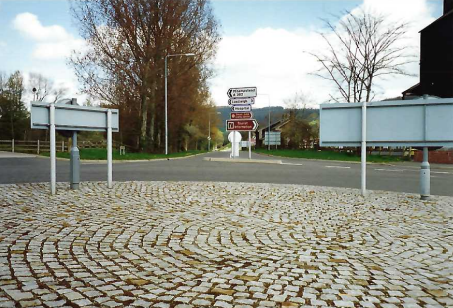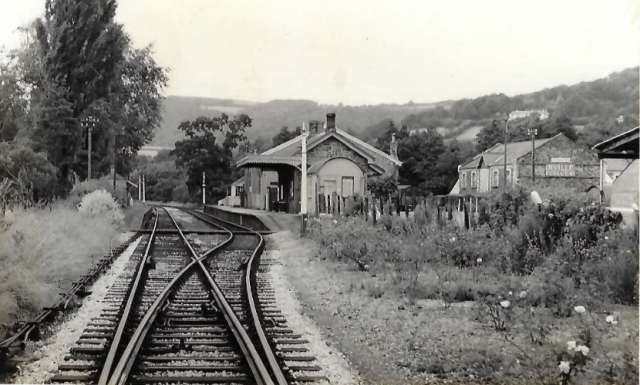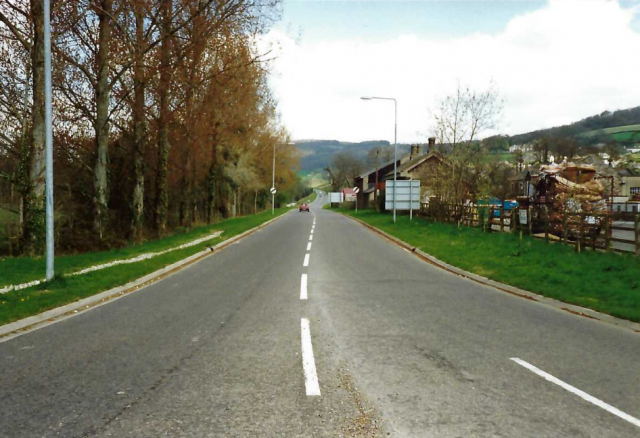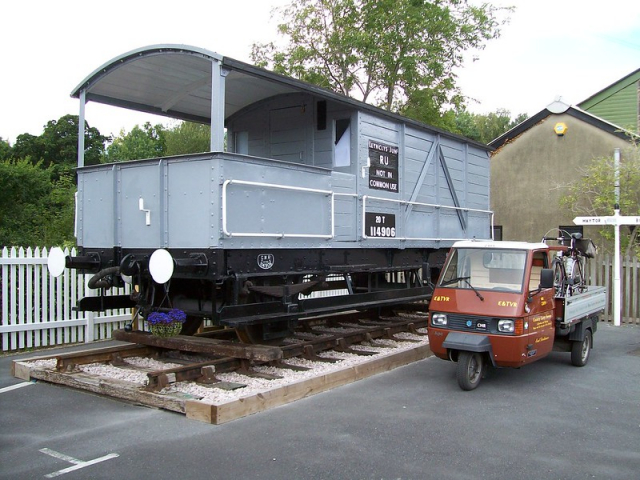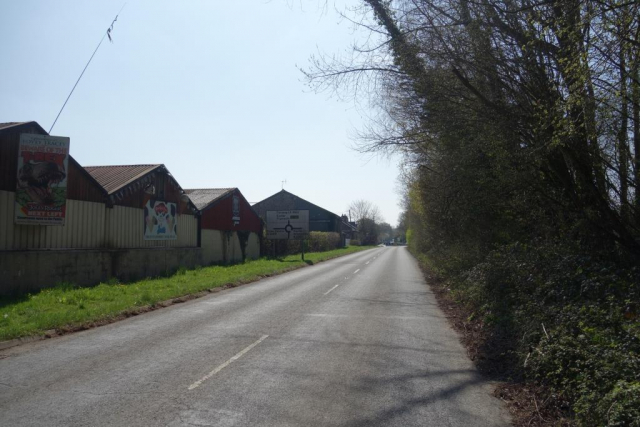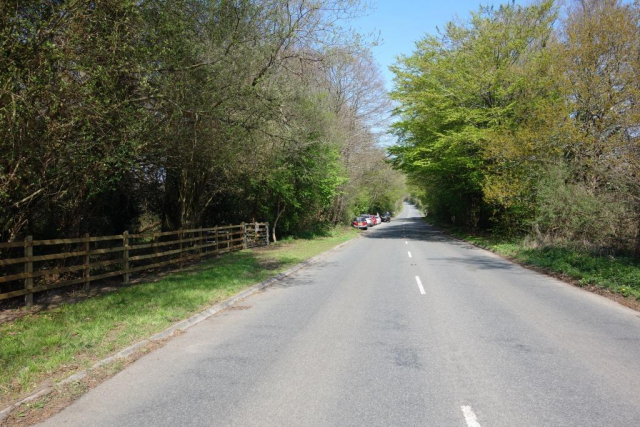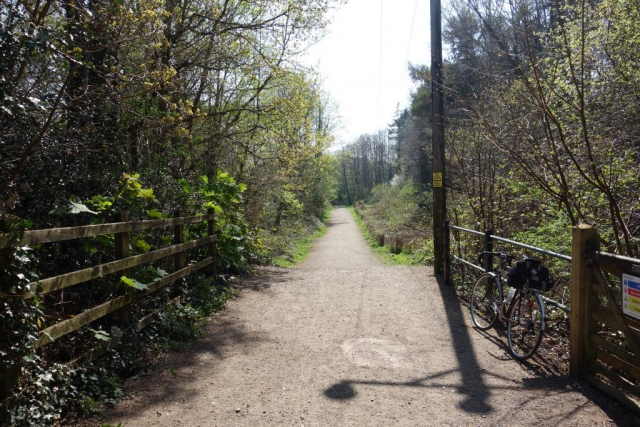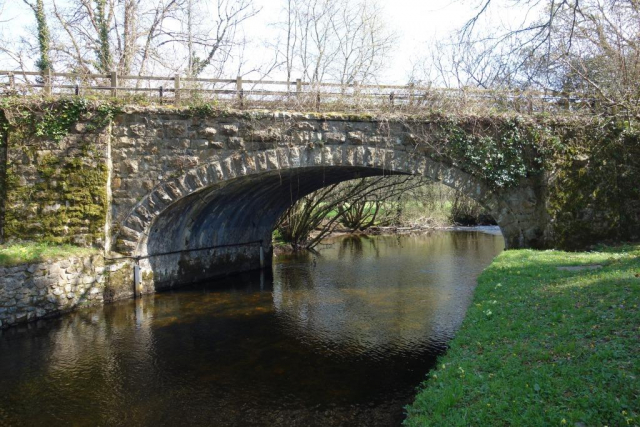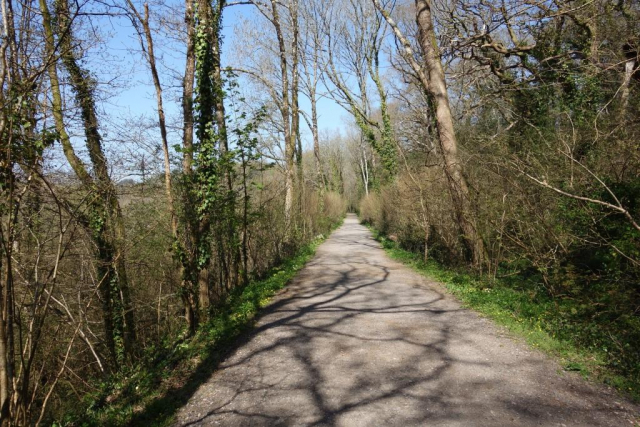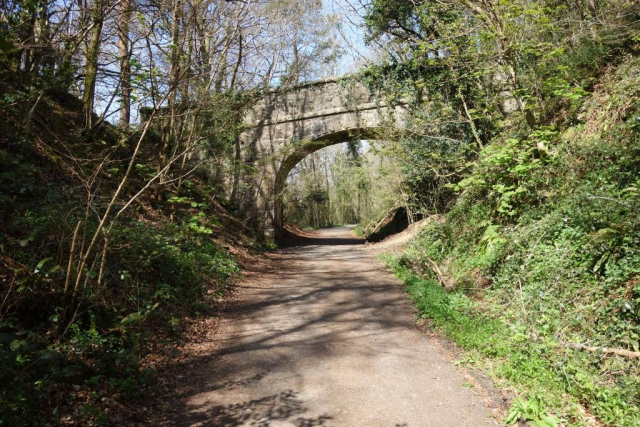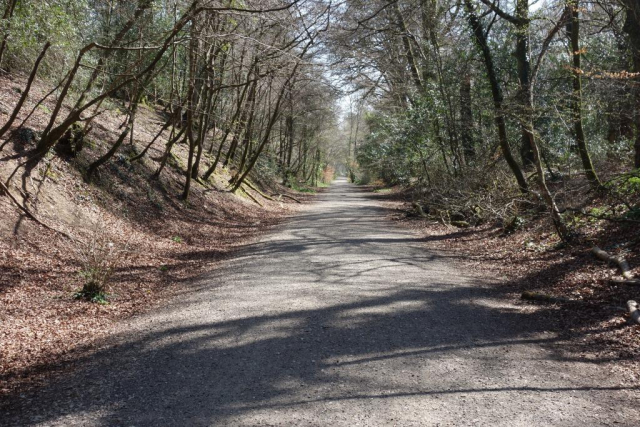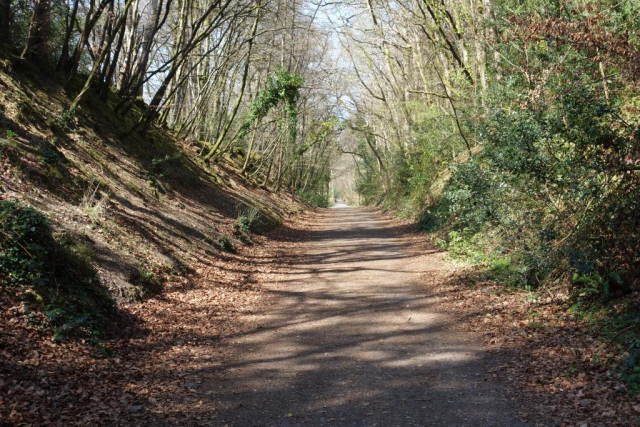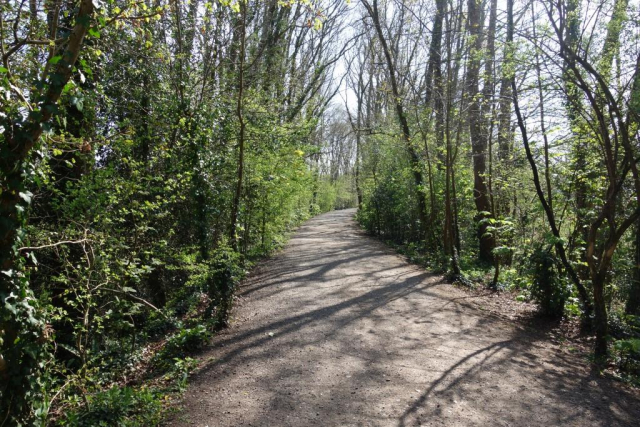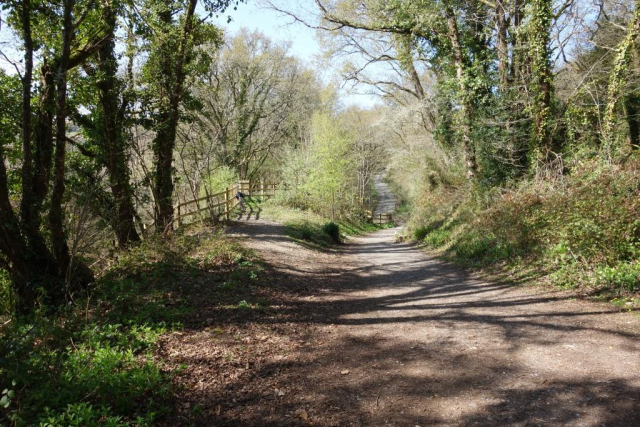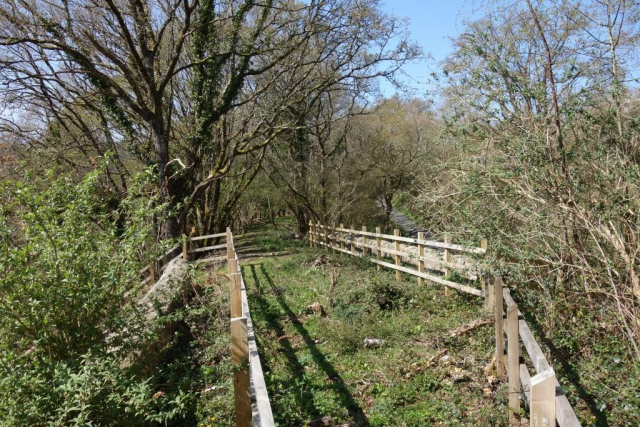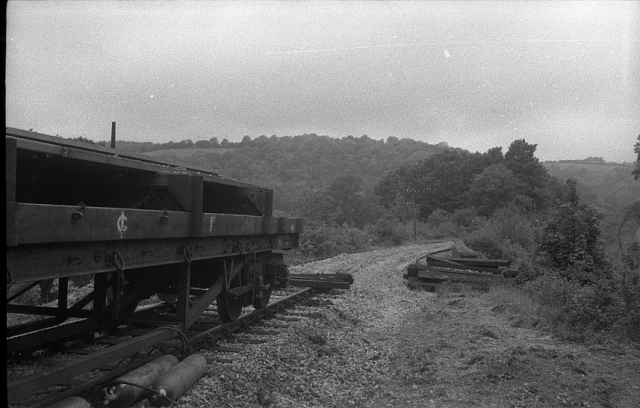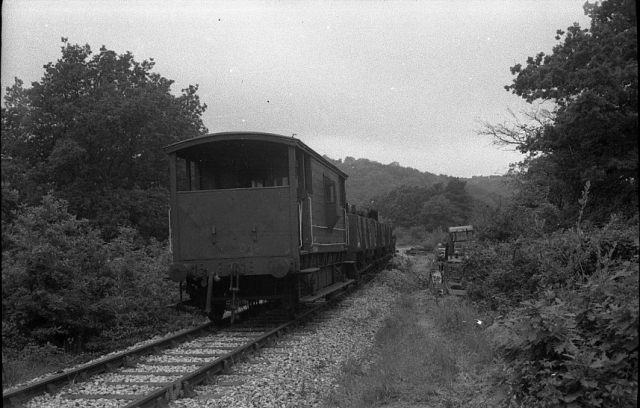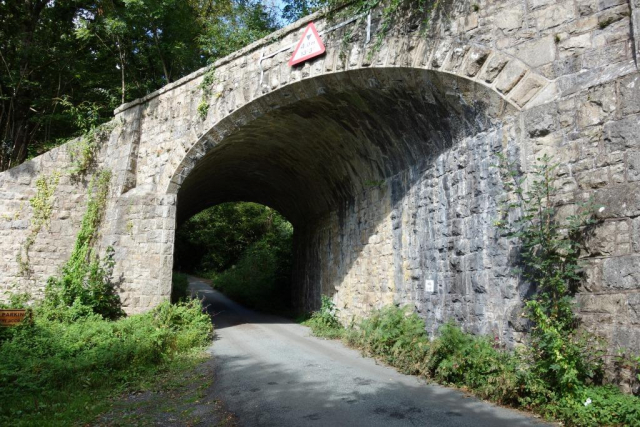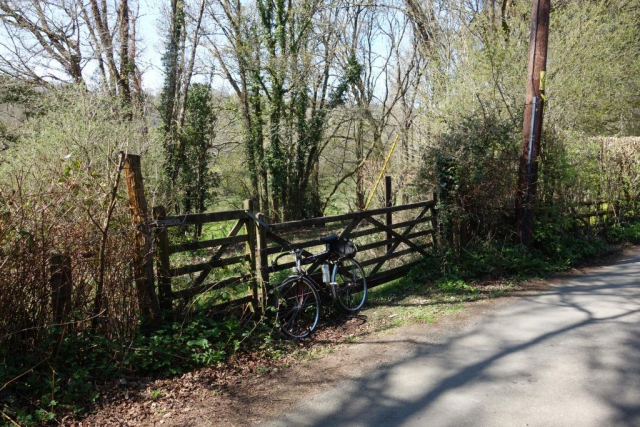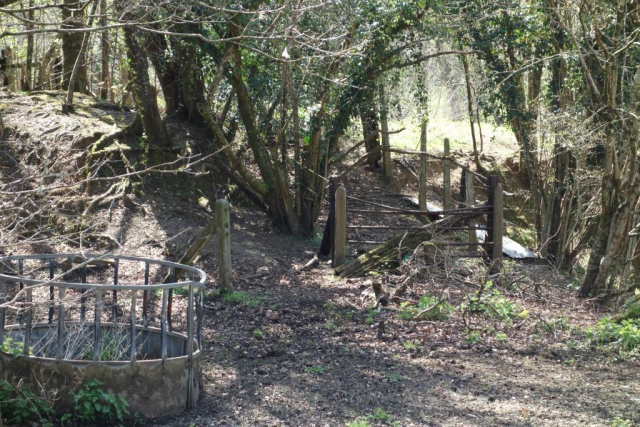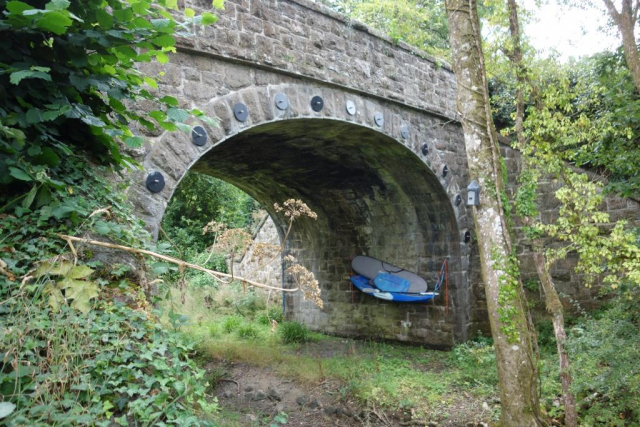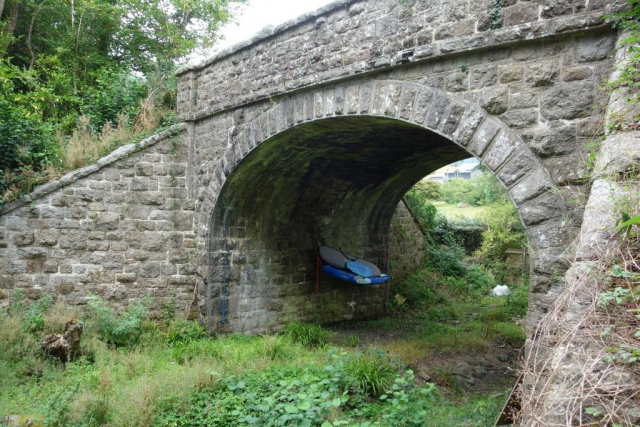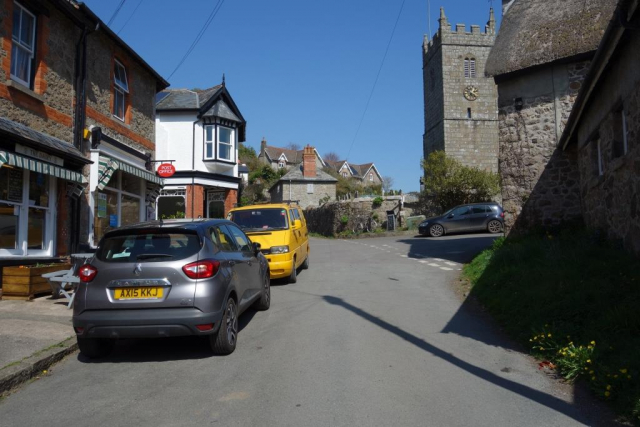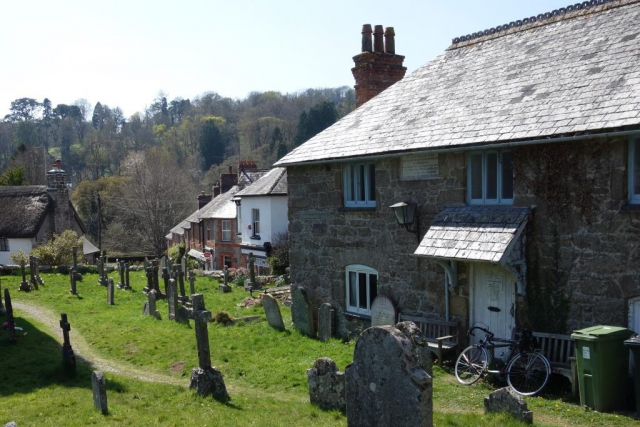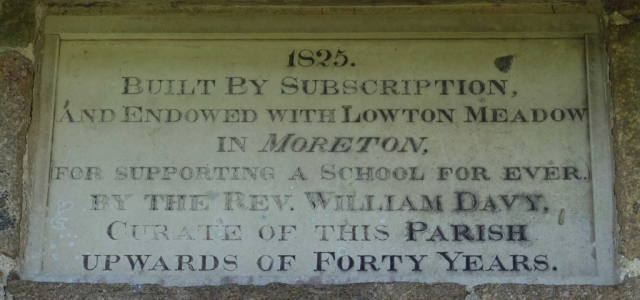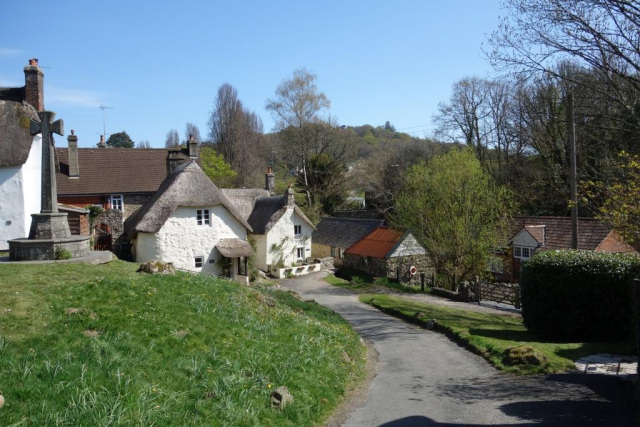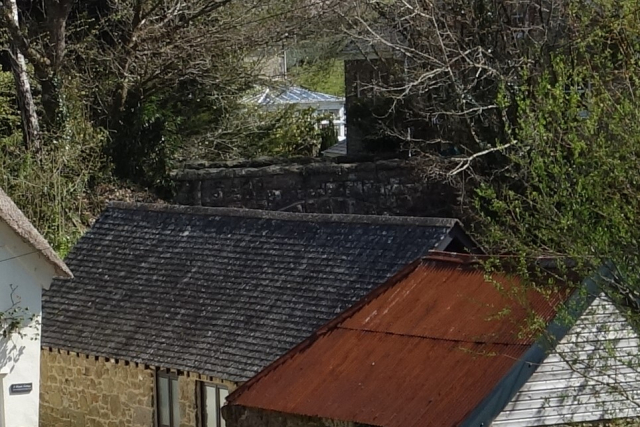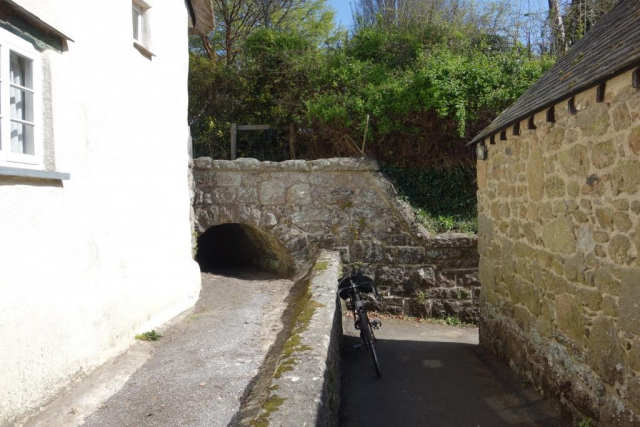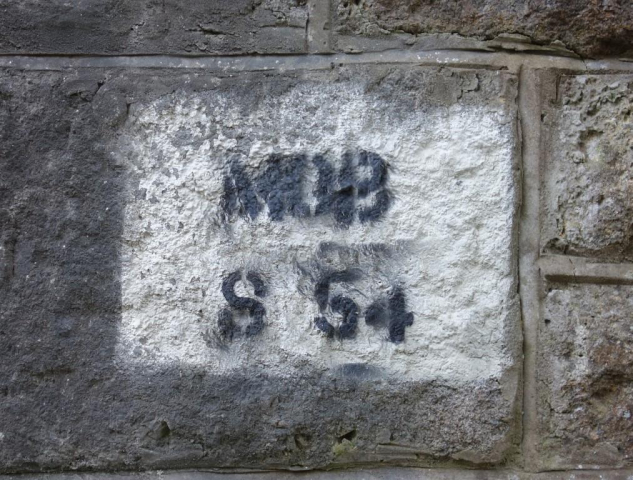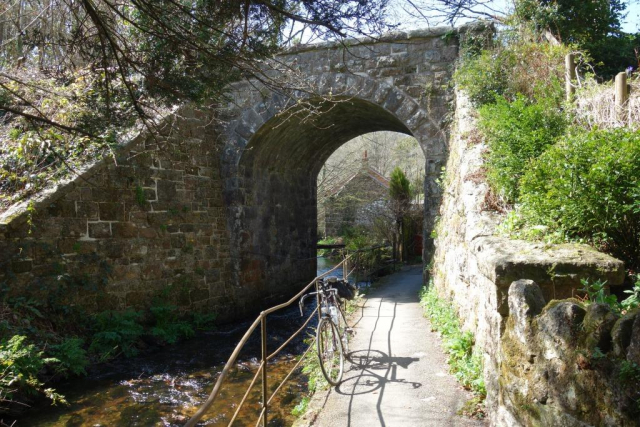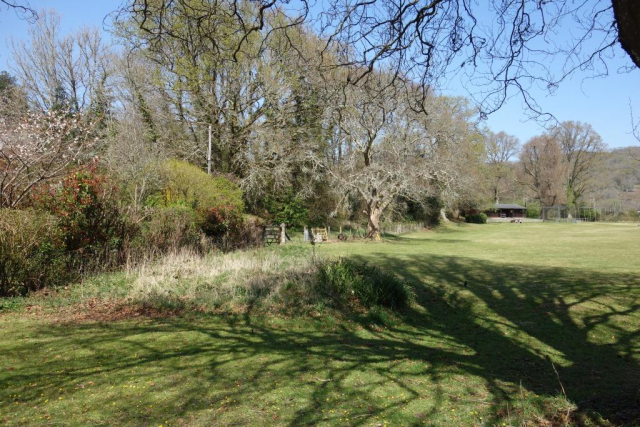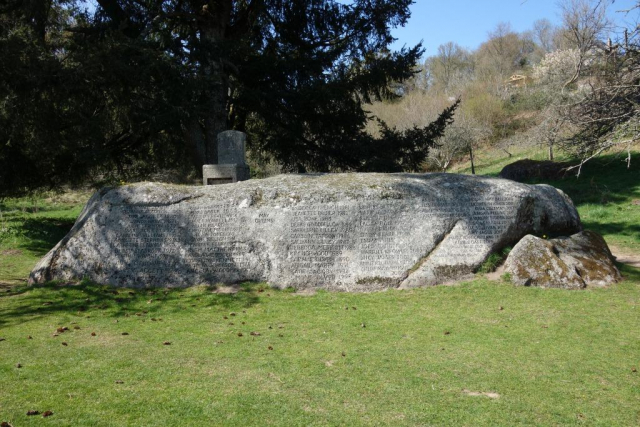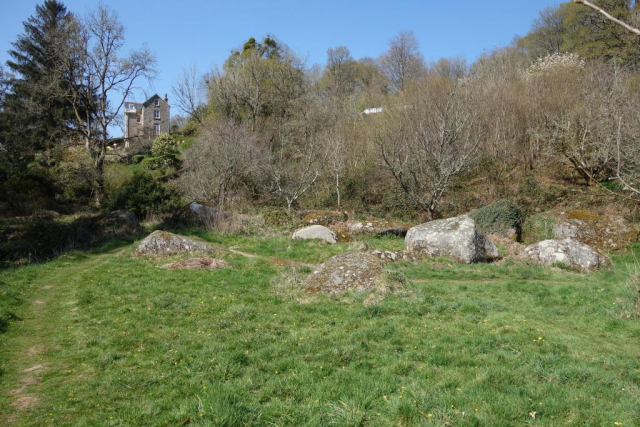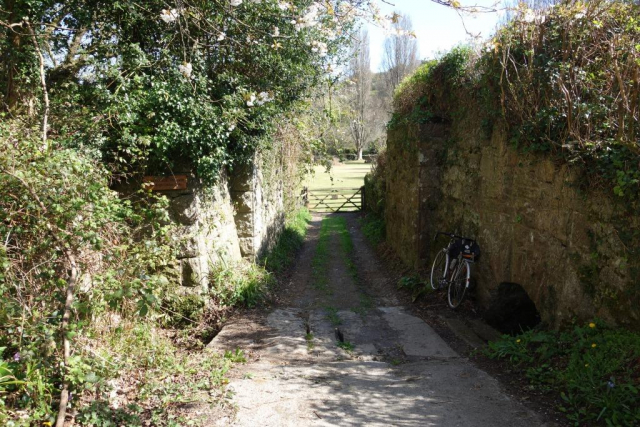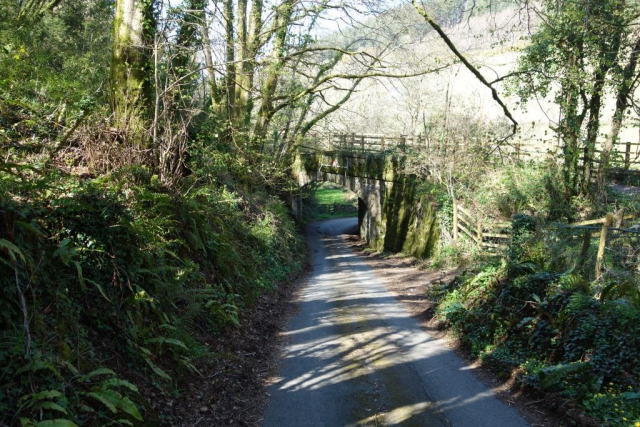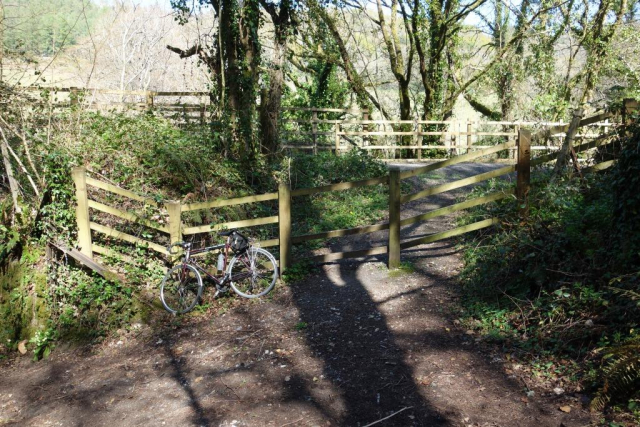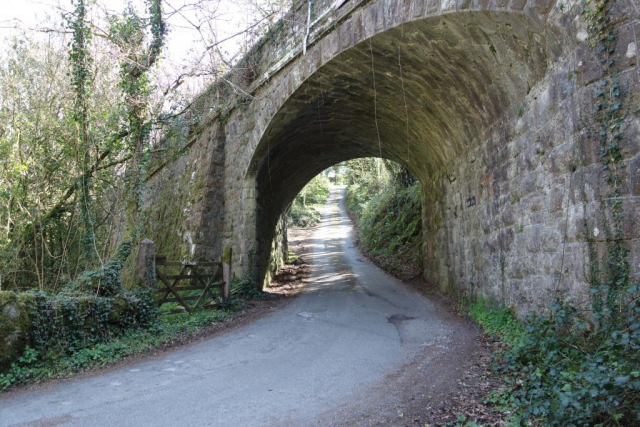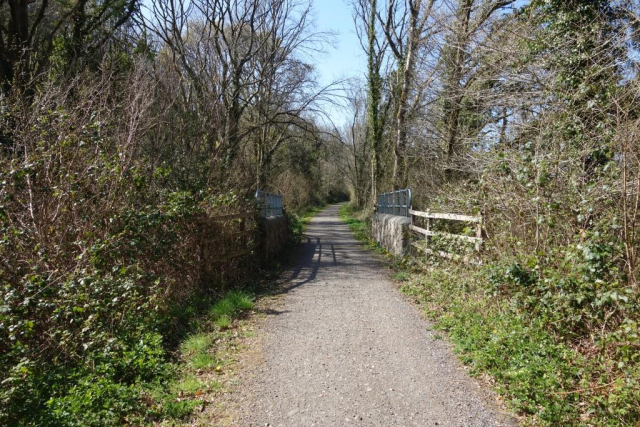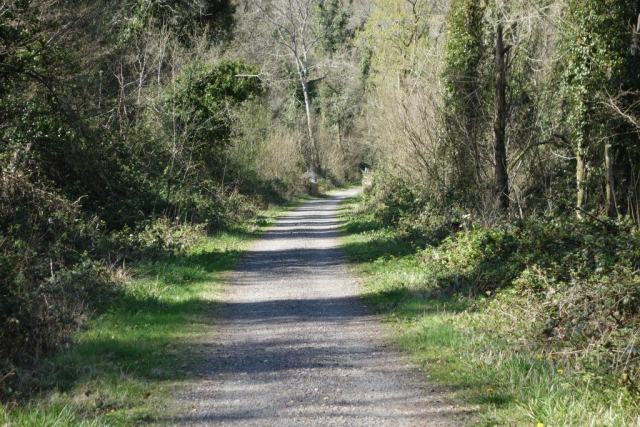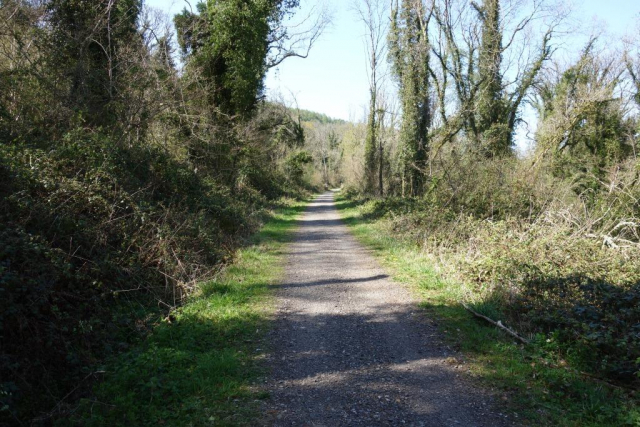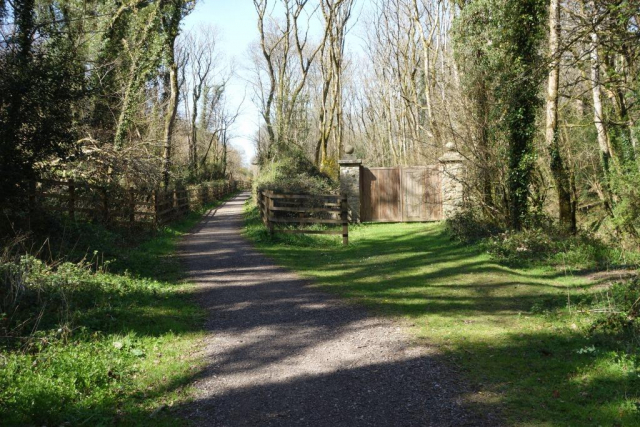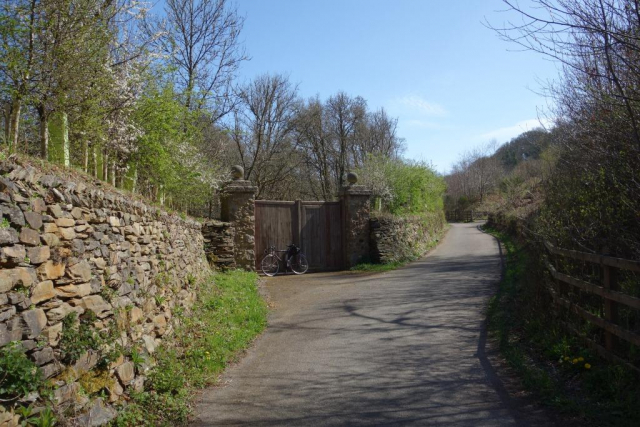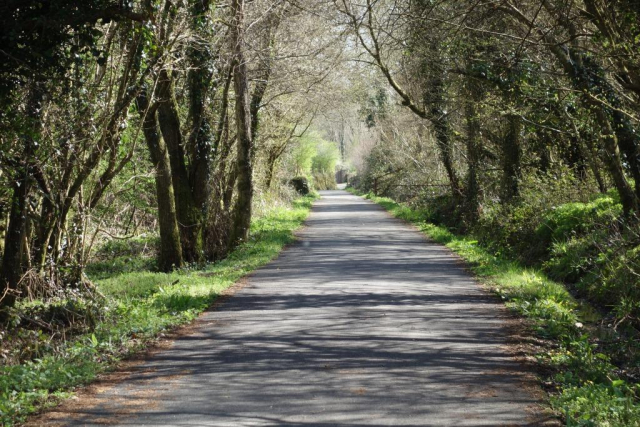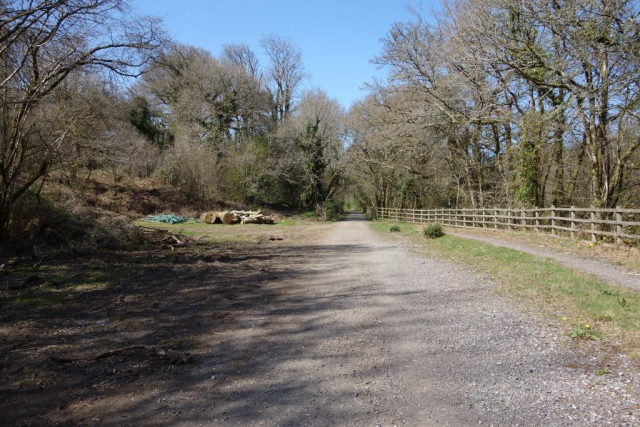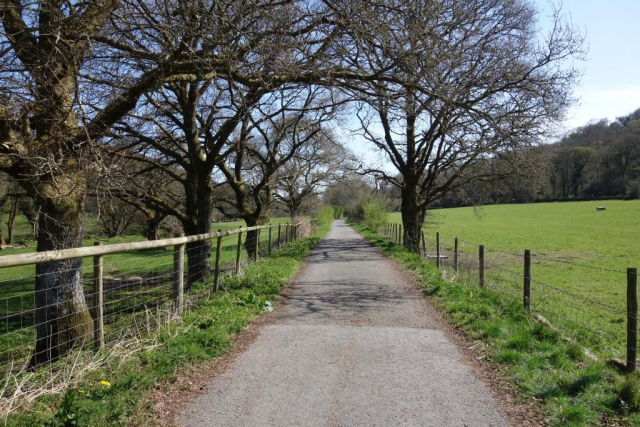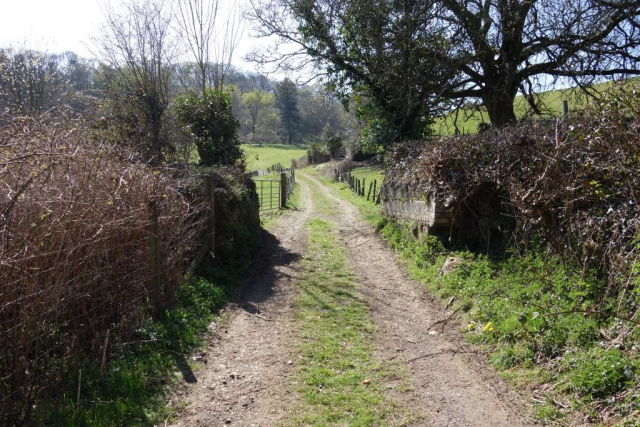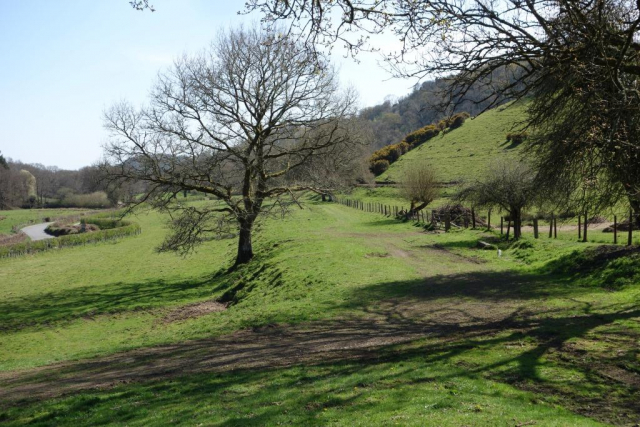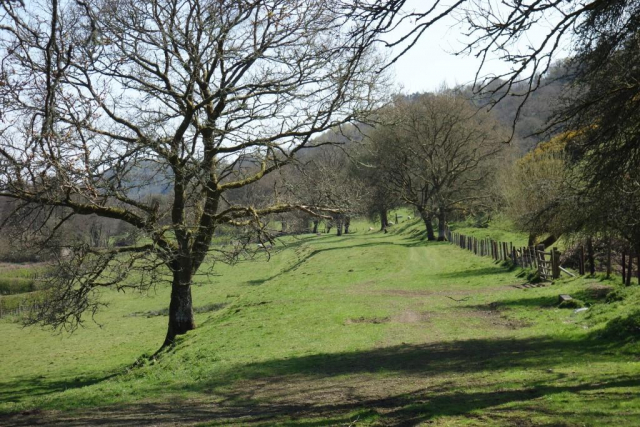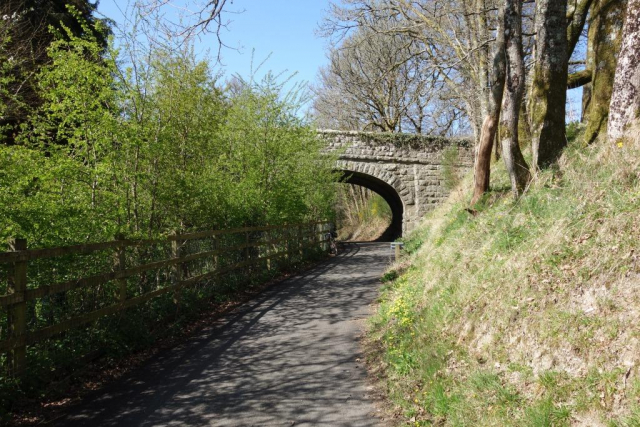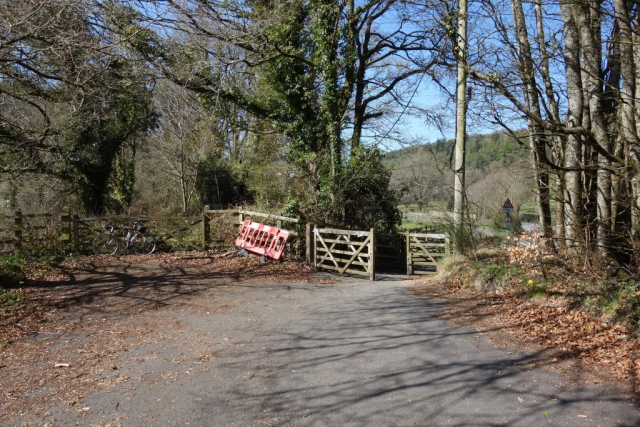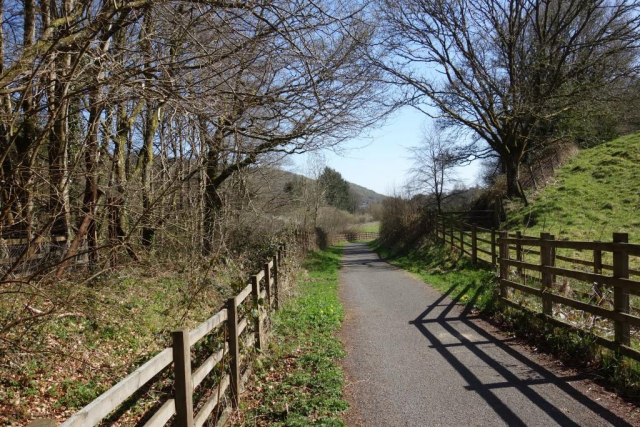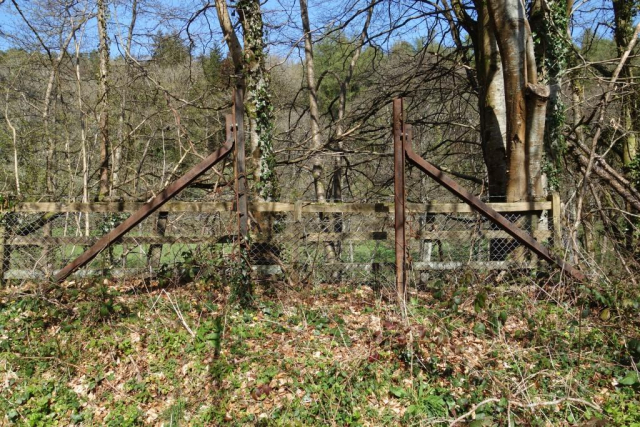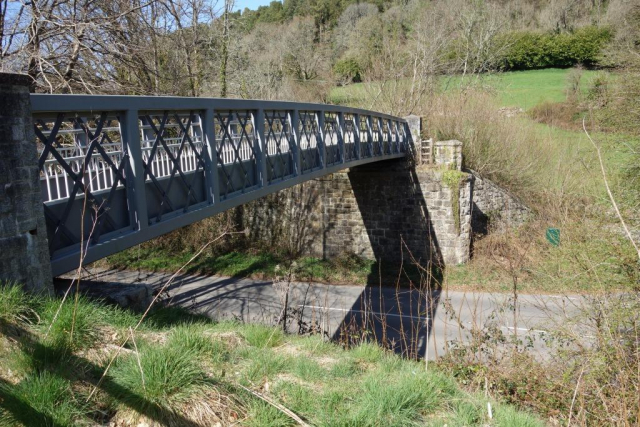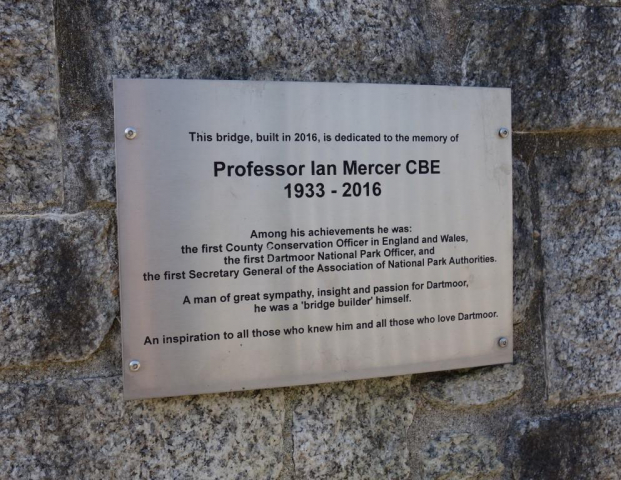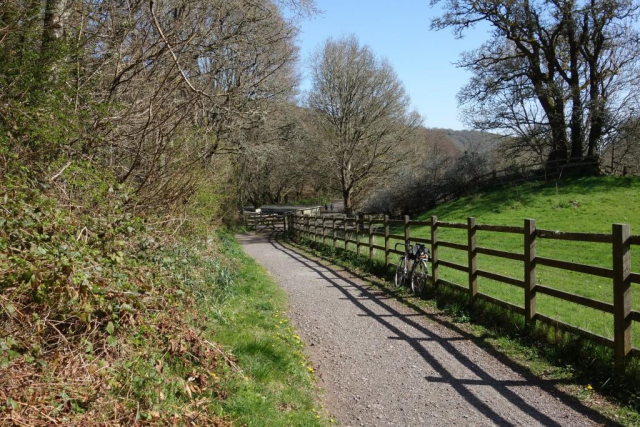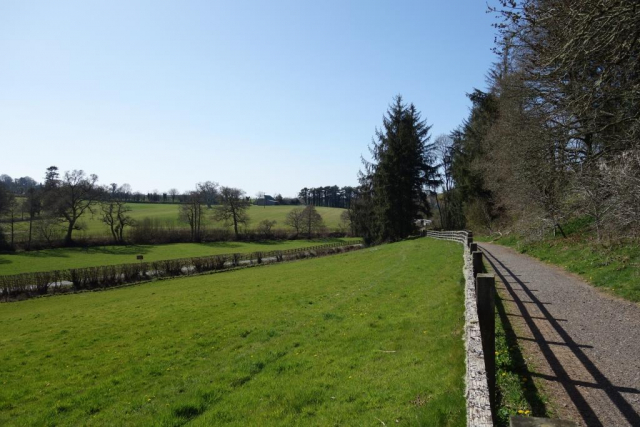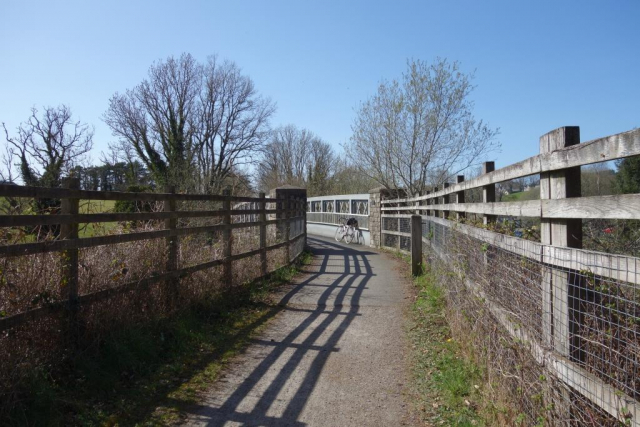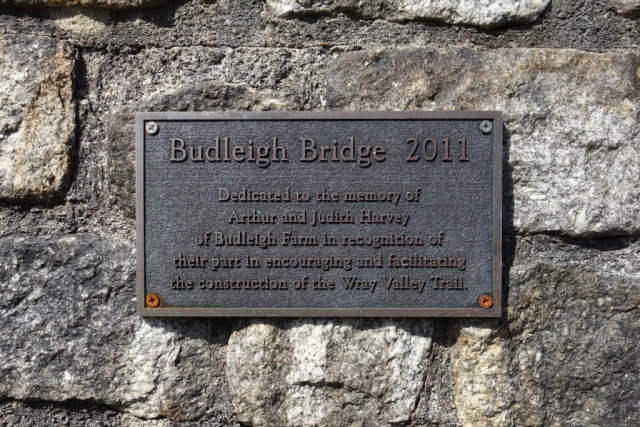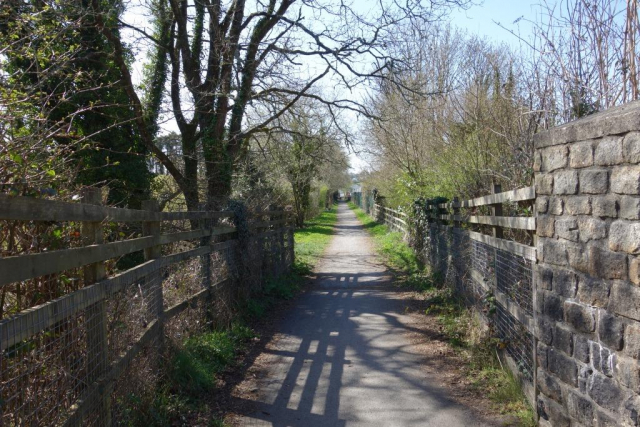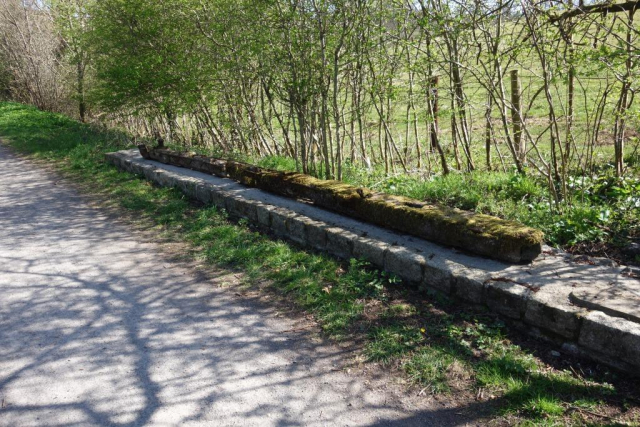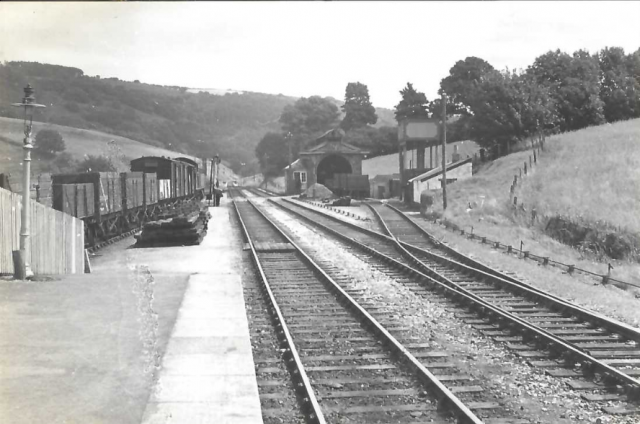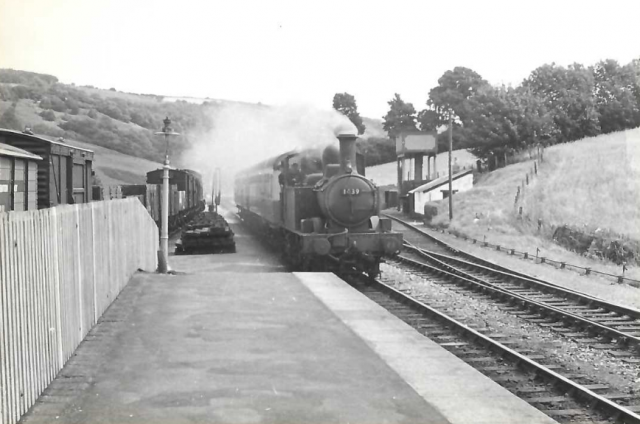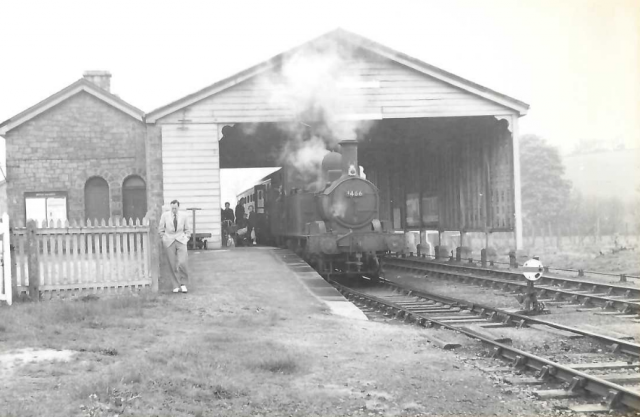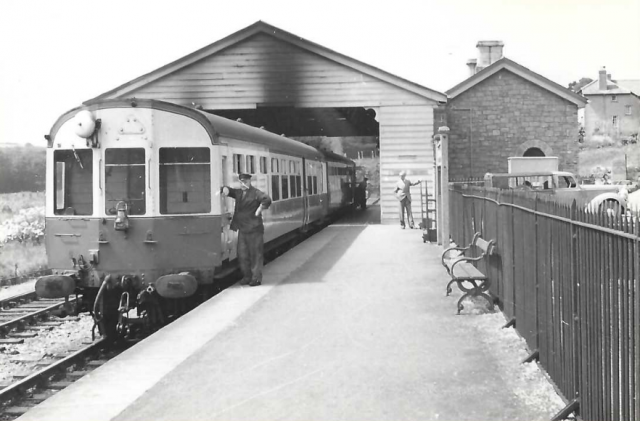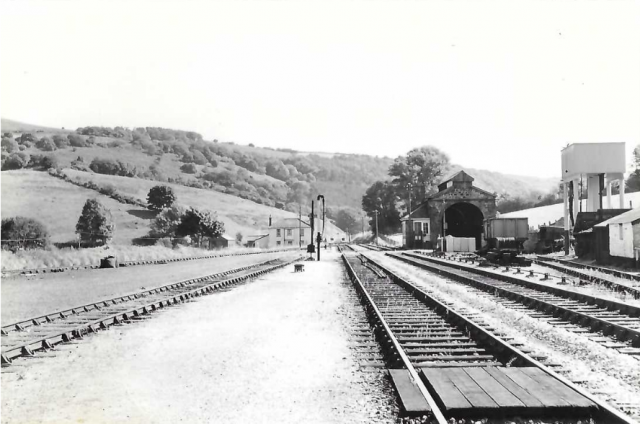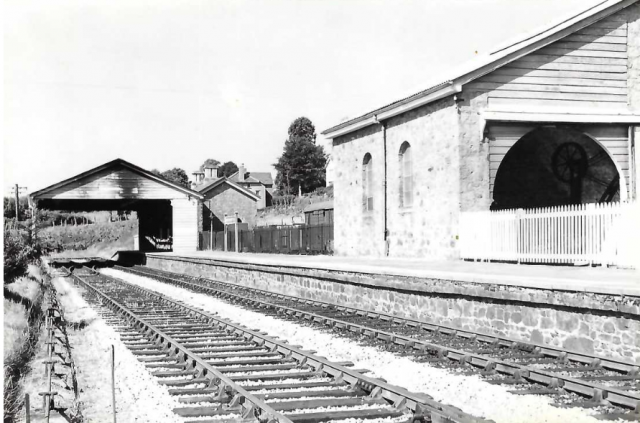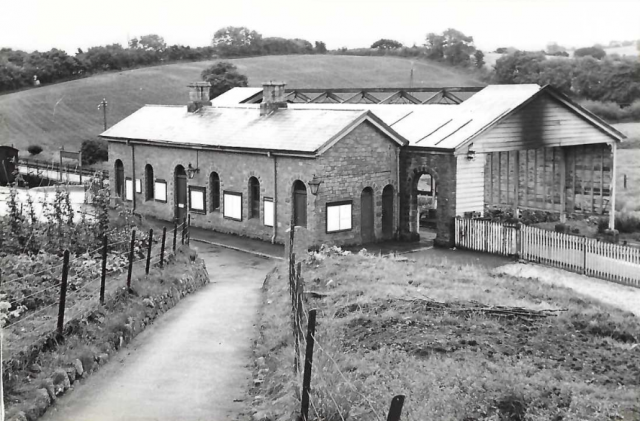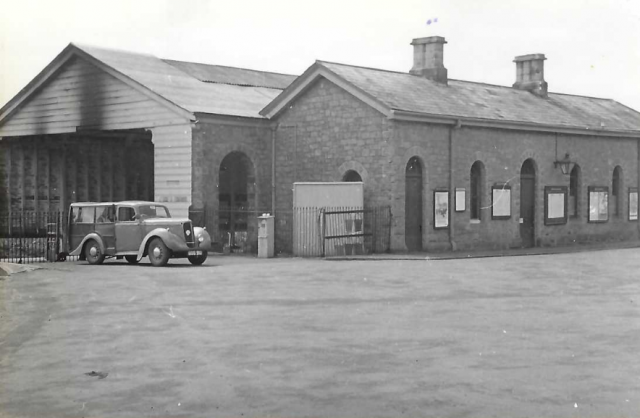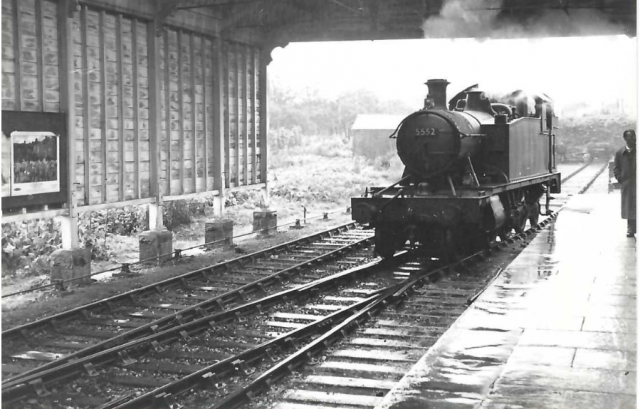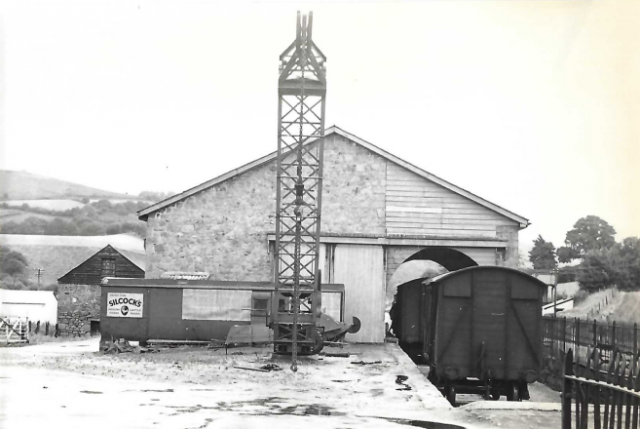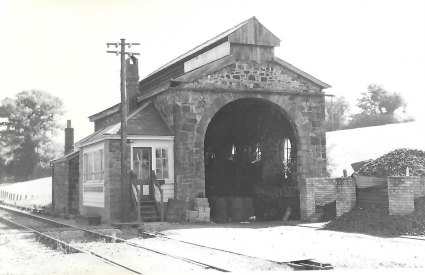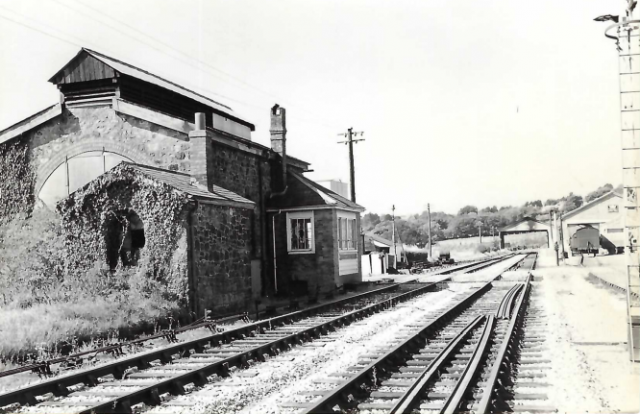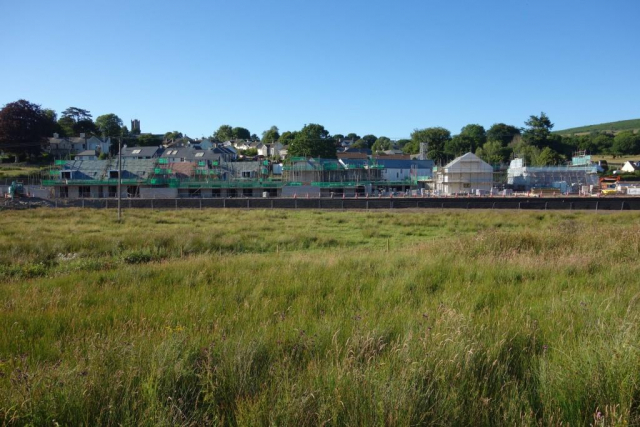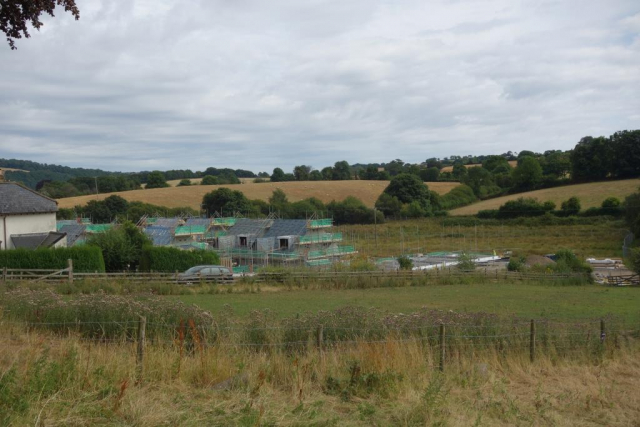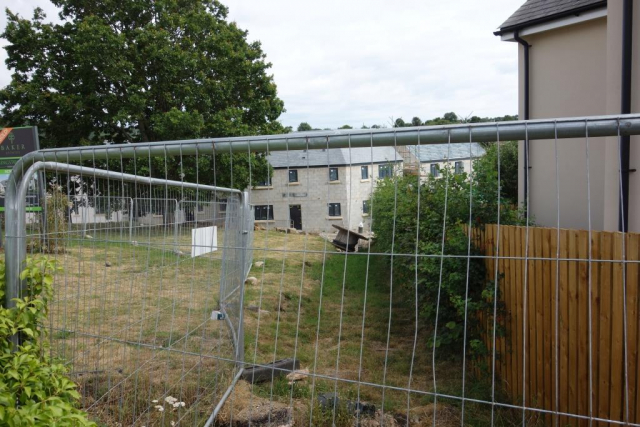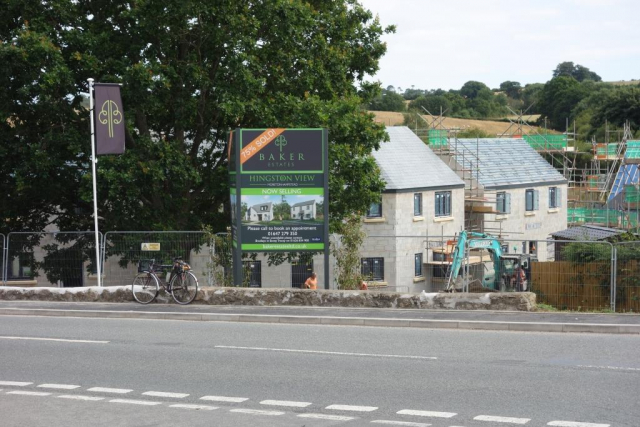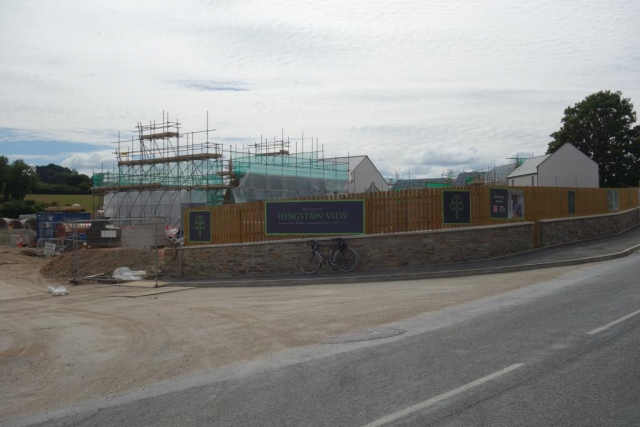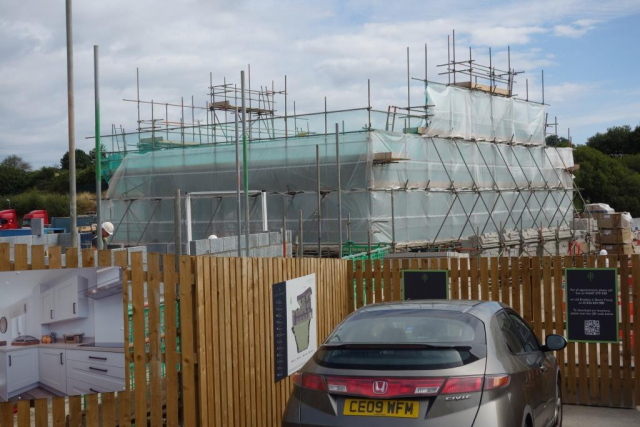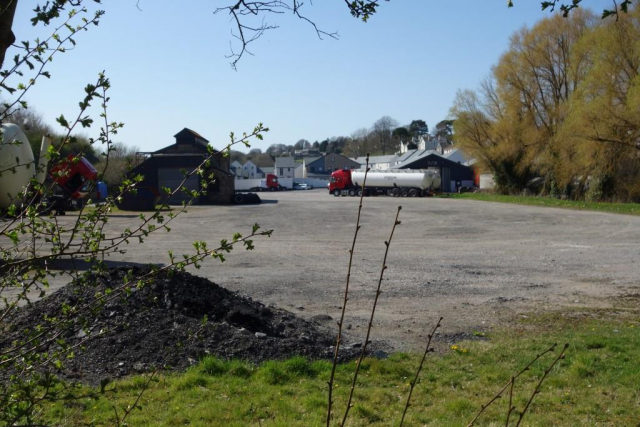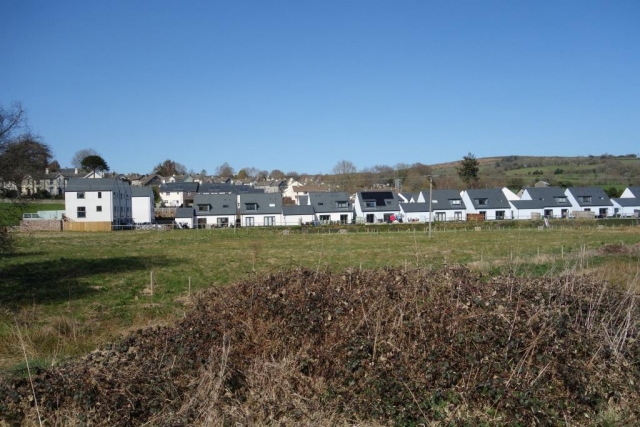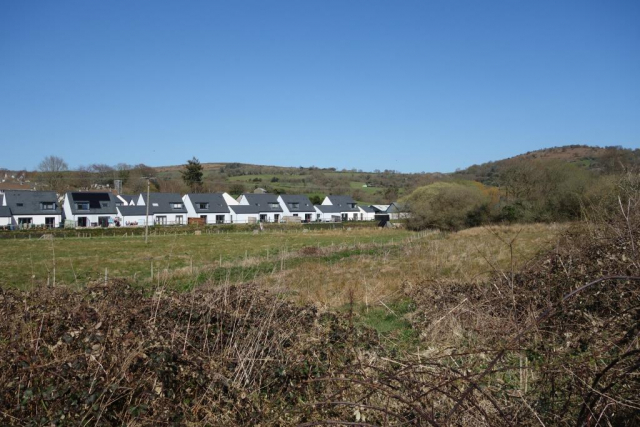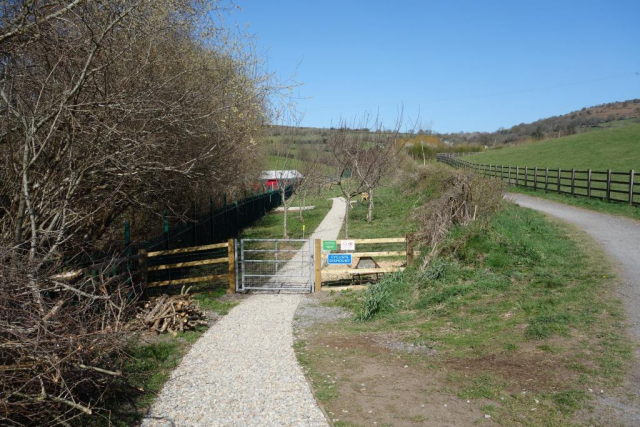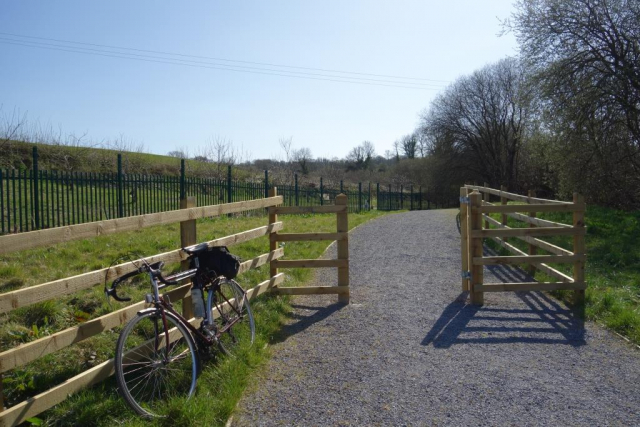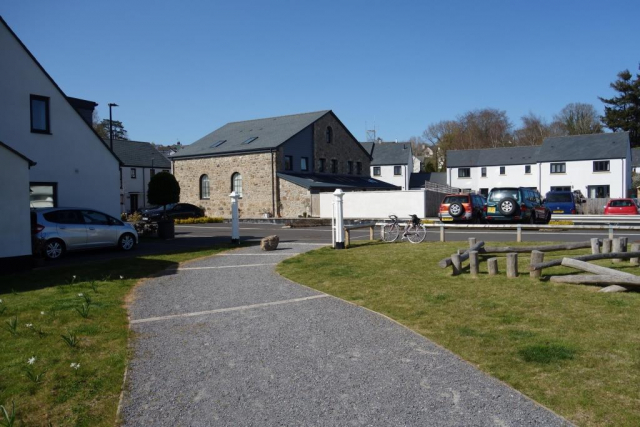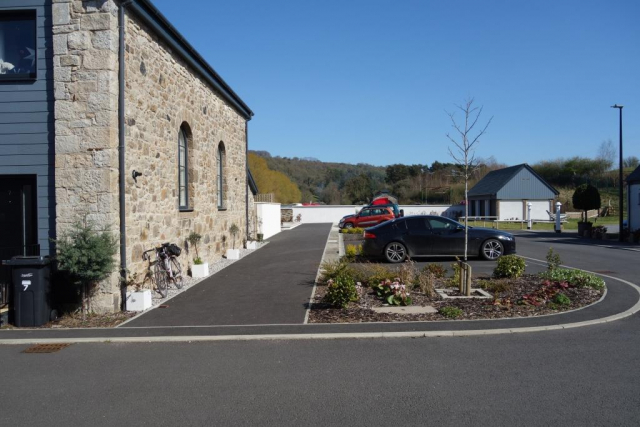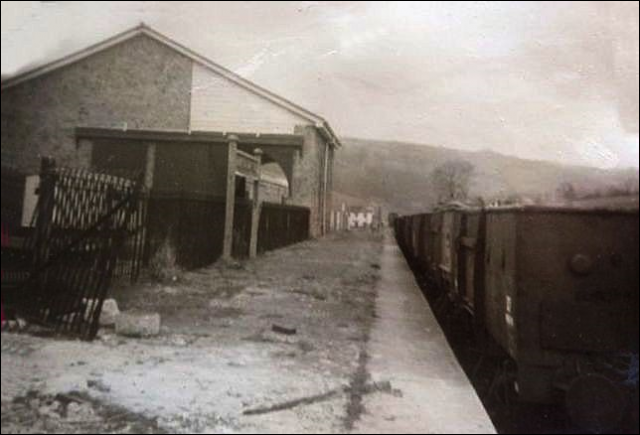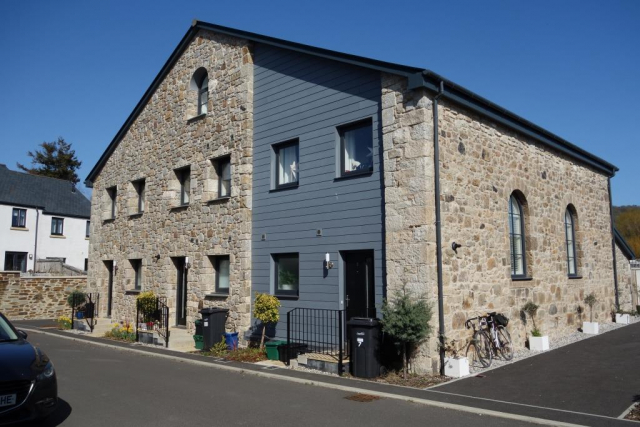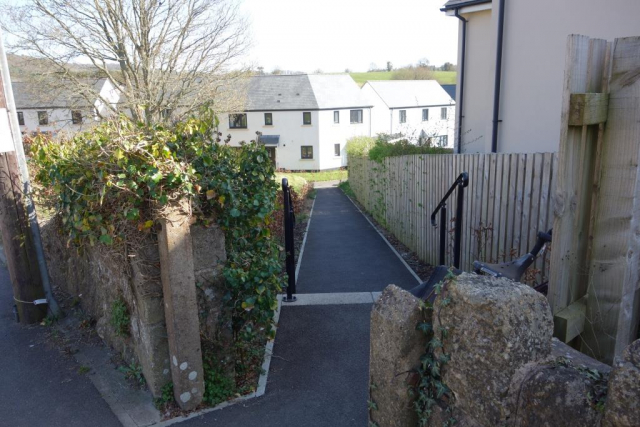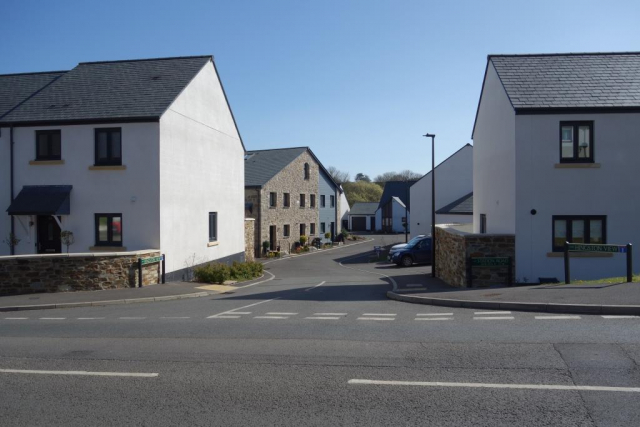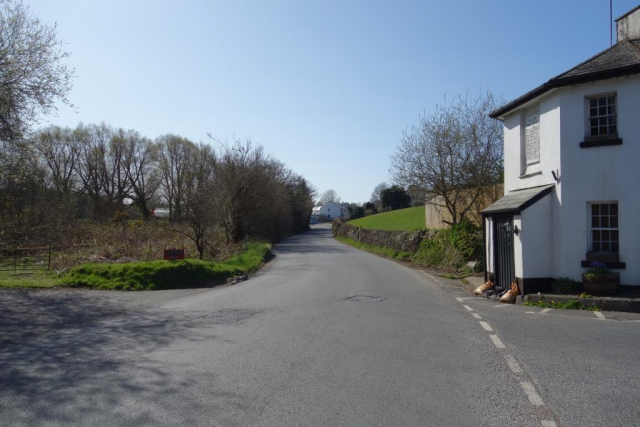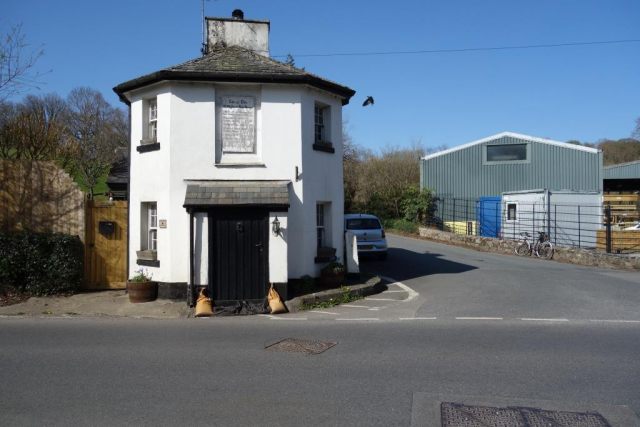Again, photographs kindly lent by Richard Holladay have prompted the scribe to go through the files and the scout to saddle up, this time to prepare a feature on the other East Dartmoor branch line.
Richard has provided a set of photographs of the “South Devon Phoenix,” which are marked “Copyright C. [Cedric] H.S. Owen.” They have been added to the C.R.S. Moreton Branch collection but without the inscriptions on the reverse of each photo, which have been included here (in italics).
The following extract from “The Moretonhampstead Branch: A Railway from Shore to Moor,” by John Owen, published by Waterfront, describes the event.
“Undaunted [by B.R’s. intransigence], the Society [South Devon Railway Society] continued with their campaign from their new headquarters at Teigngrace Halt, and planned a further major publicity Special for the following Whit Monday (11th June 1962).
“To advertise and promote the event, the SDRS held a competition to find a suitable name for the excursion; the winning title of ‘South Devon Phoenix’, suggested by a lady in Kingskerswell, being most appropriate given its intention. The ‘Phoenix’ left Newton Abbot at 1.18pm, with motive power being provided by ‘large Prairie’ 5153, and six carriages carrying 200 or so occupants – one of whom was W.N. Ayliffe, chairman of Newton Abbot Rural District Council. Stops were made at all the stations and halts along the Line, the train again receiving a particularly enthusiastic welcome at Lustleigh, the villagers having decorated the station as they had done two years previously. At the terminus, a ‘pilgrimage’ was made to the granite memorial stone inscribed with the names of the original M&SDR directors. After a stop-over of an hour and a quarter, the excursion set off for the leisurely amble back to Newton Abbot – there being a 15mph speed limit in force over the Branch – arriving there at 5.30pm. Although the trip had been an undoubted success in terms of attracting local publicity and interest, not to mention a pleasantly nostalgic day out in its own right, this well-supported hint to the Railway Authorities once again fell on deaf ears and unseeing eyes. With the exception of a Sunday School Special run just two months later, the ‘Phoenix’ proved to be the swan-song for passenger-carrying trains over the full length of the Branch. It also marked a change in direction for the SDRS, which soon switched its attention to developments taking place in the Dart Valley.”
Newton Abbot Running Shed
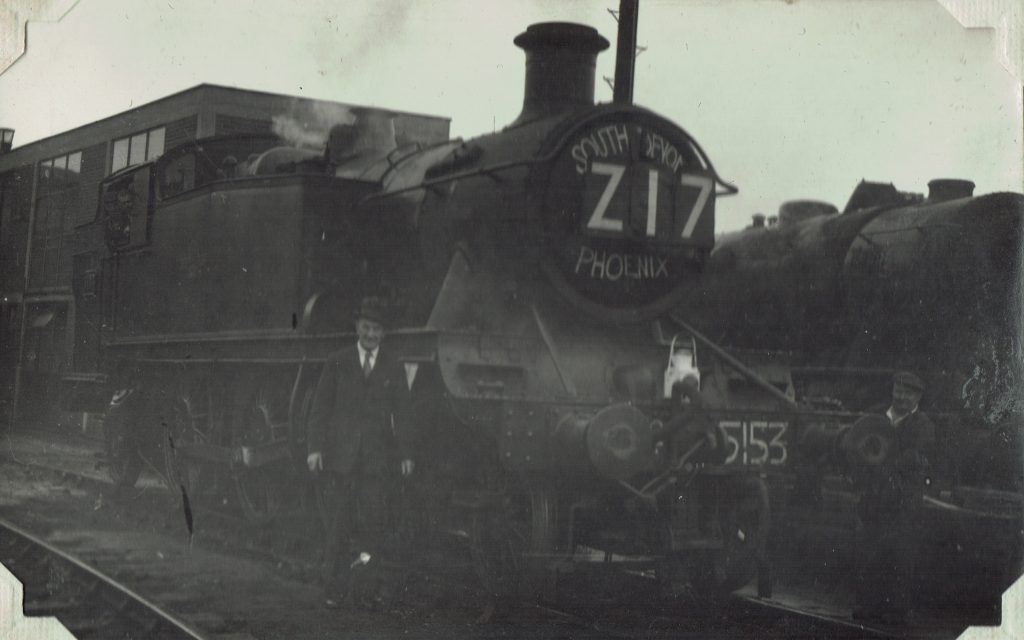
5153 for “South Devon Phoenix” at Newton Shed.
Inspector H.T. Cooke, Driver P. Stone & Fireman C. Vosper.
Whit Monday 11-6-62
The loco must have been turned at Goodrington for it is seen later running boiler first on the branch. It is not known whether this had been requested by the organizers or it was considered good practice with the maximum load being taken.
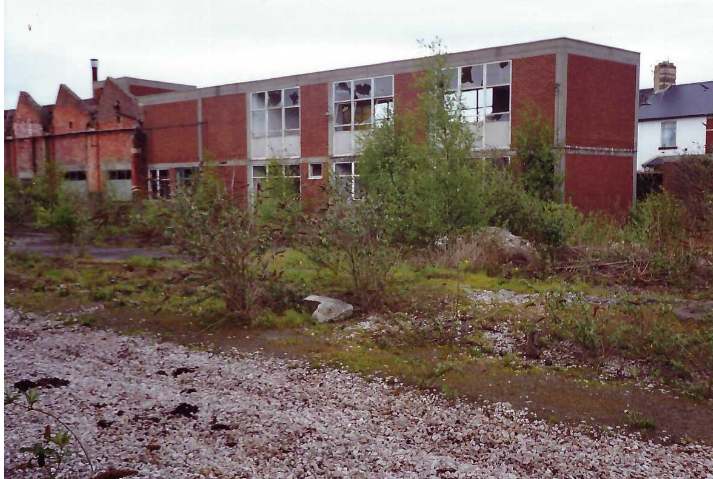
Newton Abbot, “Moreton Bay”
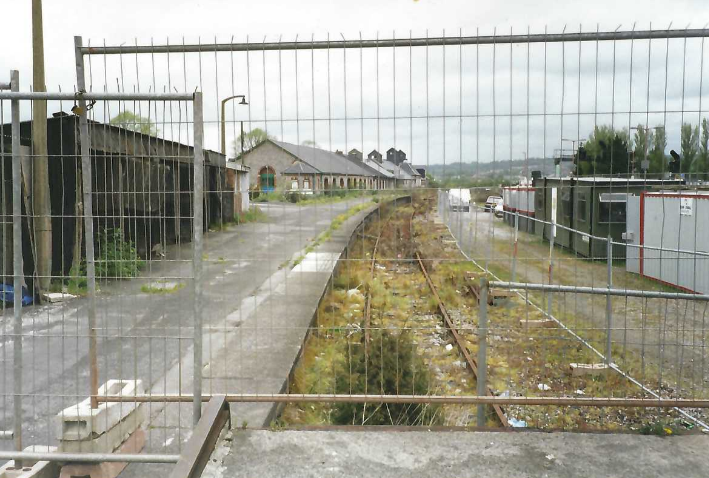
A water tower stood at the end of the building at centre, which was Edwin Tucker’s rail-served malthouse. When it closed in 2018, it was the last remaining in Devon.
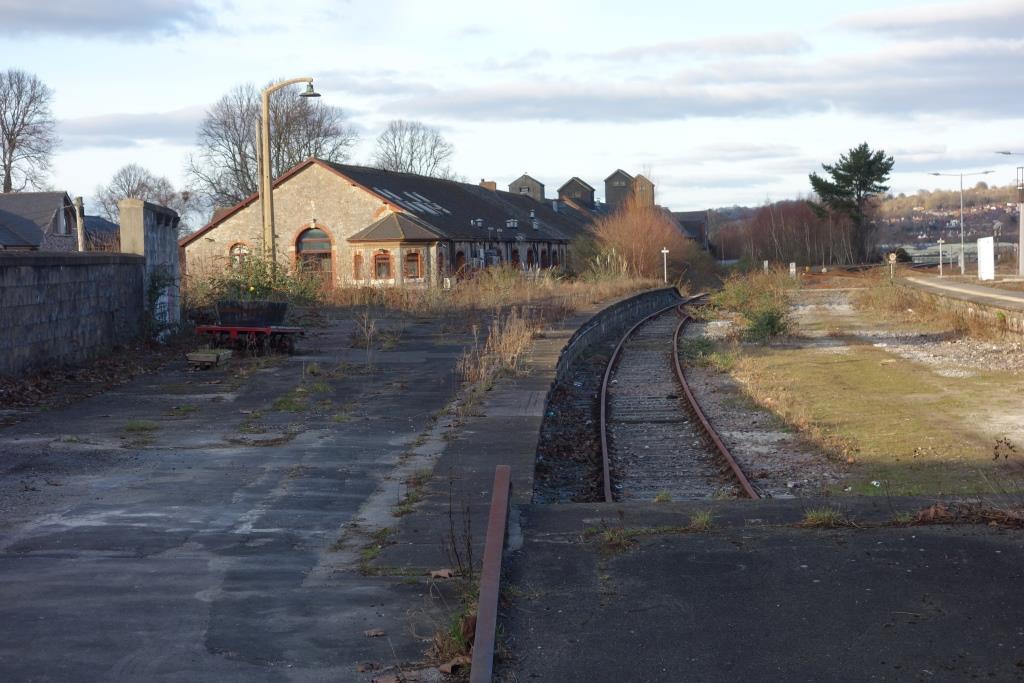
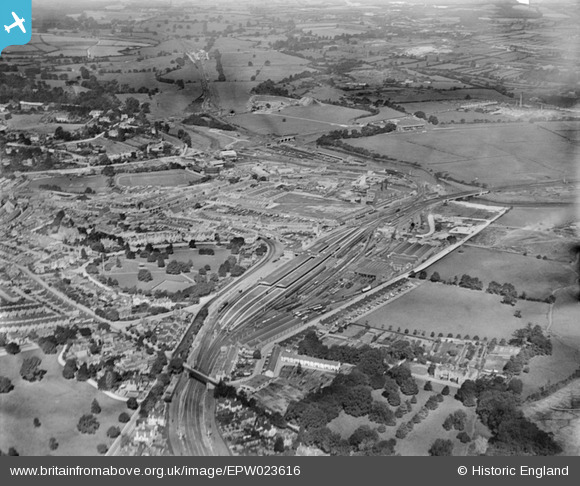
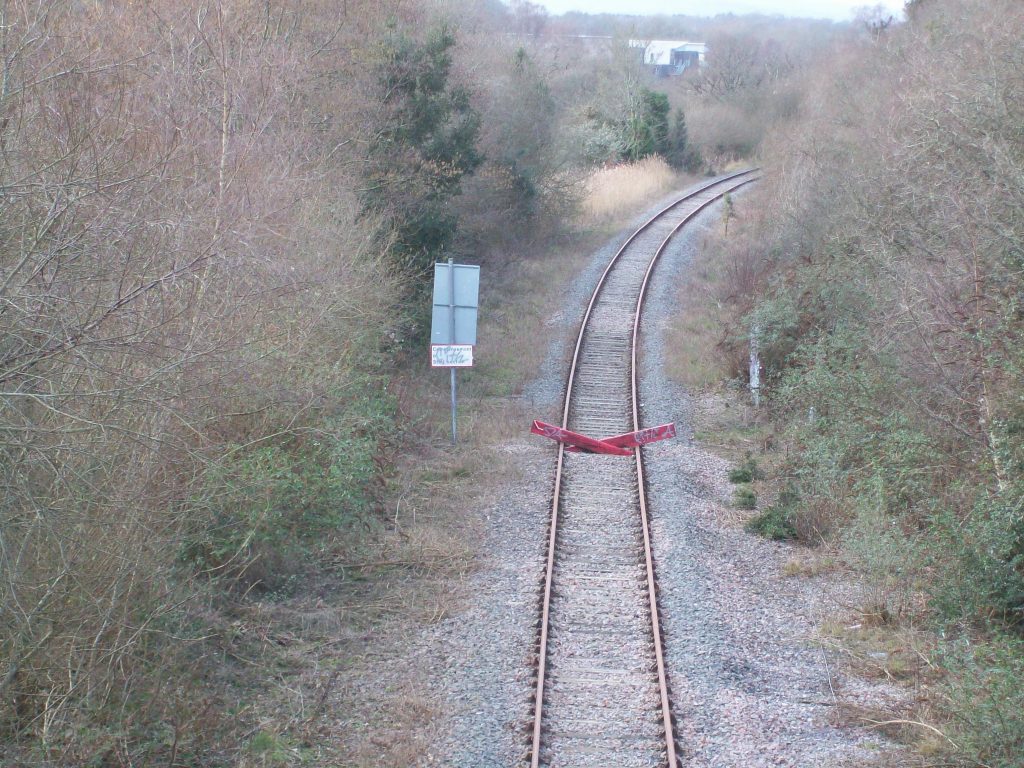
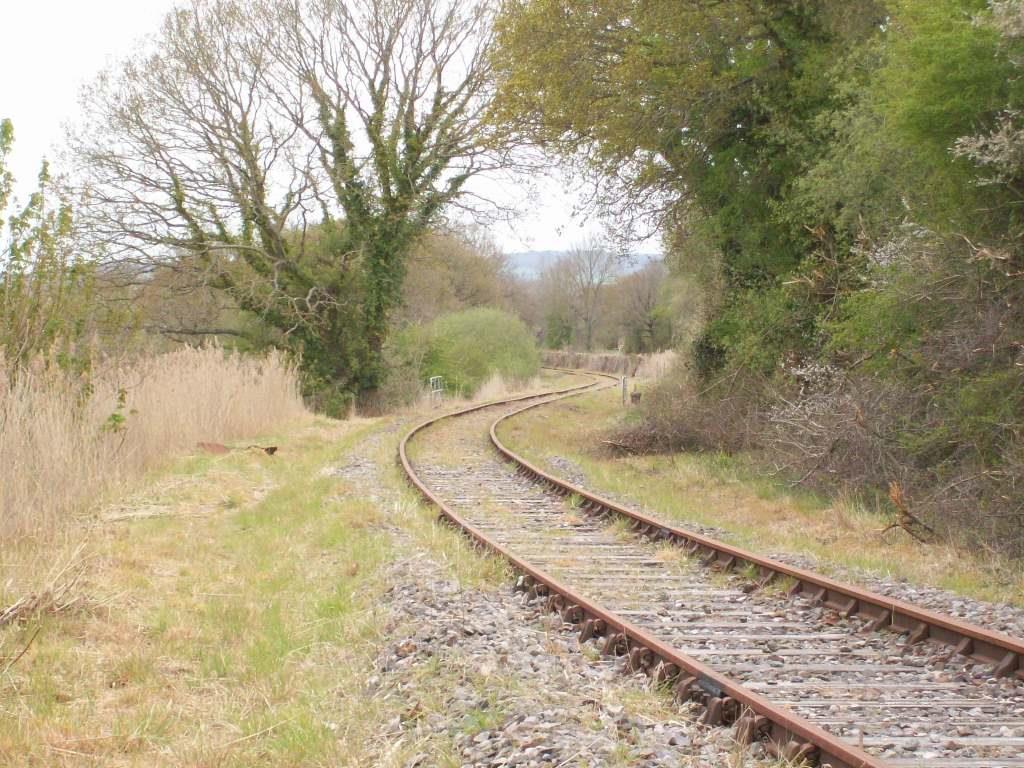
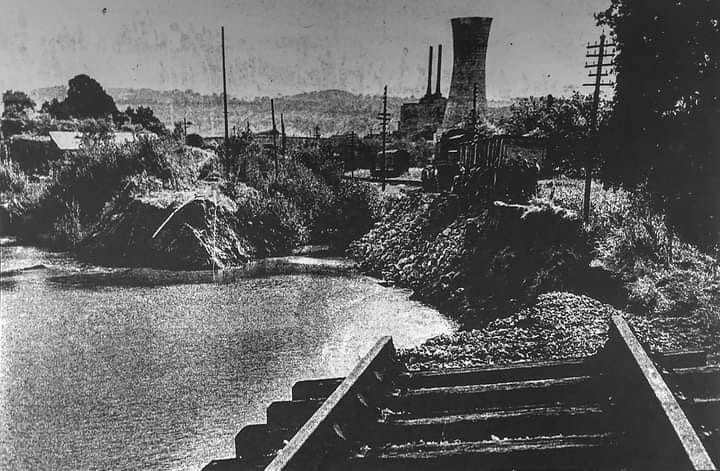
26th November, 2024: Heavy rain during a storm caused the old clay pit between the Teign and the Stover Canal to flood and overflow, breaching the canal and the railway.
It was mid-February before the scout got there to see the damage.
Whether the 2024 breaches of the three ways—water, rail and foot—will be repaired remains to be seen. It may be that Sibelco, the ball clay mining company, is liable for the damage, or would provide material for the repairs. A single embankment with Armco culverts could carry the railway with paths on either side.
Repeated washouts occur just south of Teignbridge when the neighbouring Stover Canal floods and water spills over the track. No attempt is made to defend the line and no lasting repair has been made.
The line is undoubtedly vulnerable here but a level of resilience could be achieved, using a variety of modern measures, sufficient to justify reinstating the former Teign Valley diversionary route.
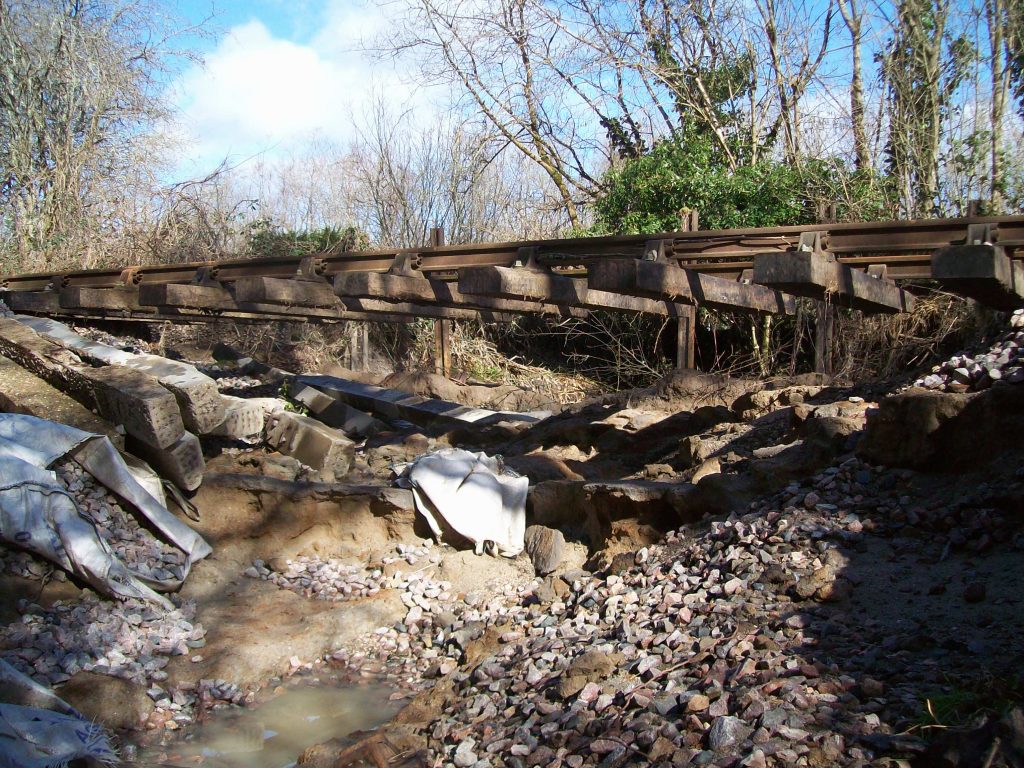
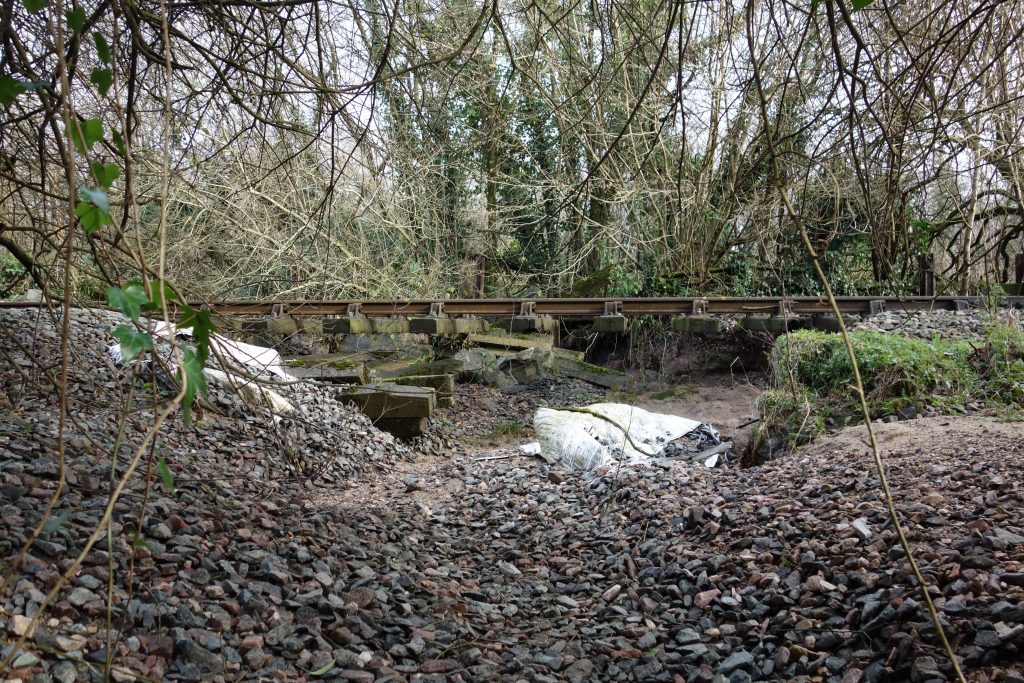
The gallery below contains scenes of washouts and repairs between Newton and Teignbridge.
Teignbridge Sidings
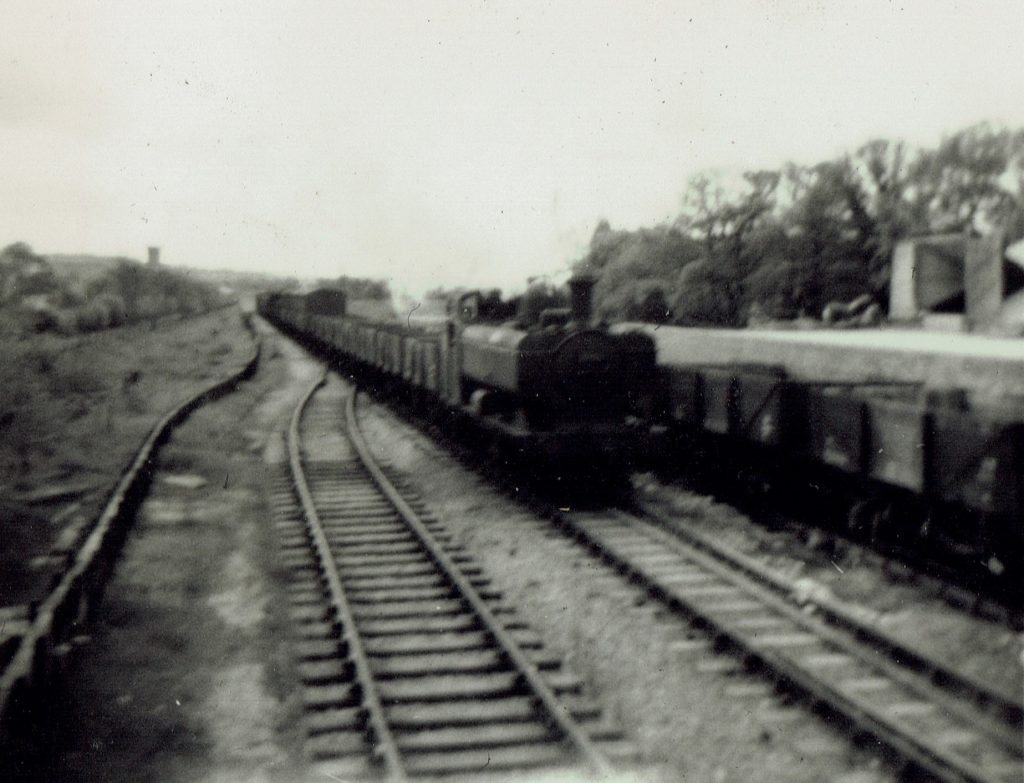
At left is the dry Stover Canal. The sleeper wall protecting the railway from flooding long ago fell into disrepair. (R. Holladay)
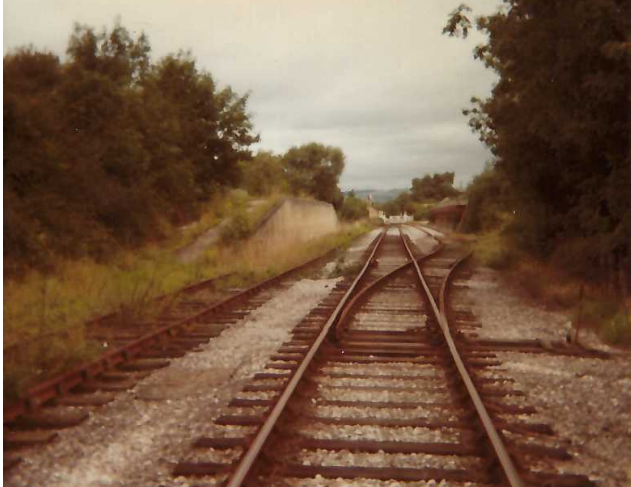
Between 2011 and 2015, the rump of the branch was brought back into use. Timber gathered from forests in Devon and Cornwall was roaded to Teignbridge, where it was stockpiled in the large area of land between the railway and canal, where the siding and loading bank had been. The story is told fully under “What’s New?“
Teignbridge Crossing
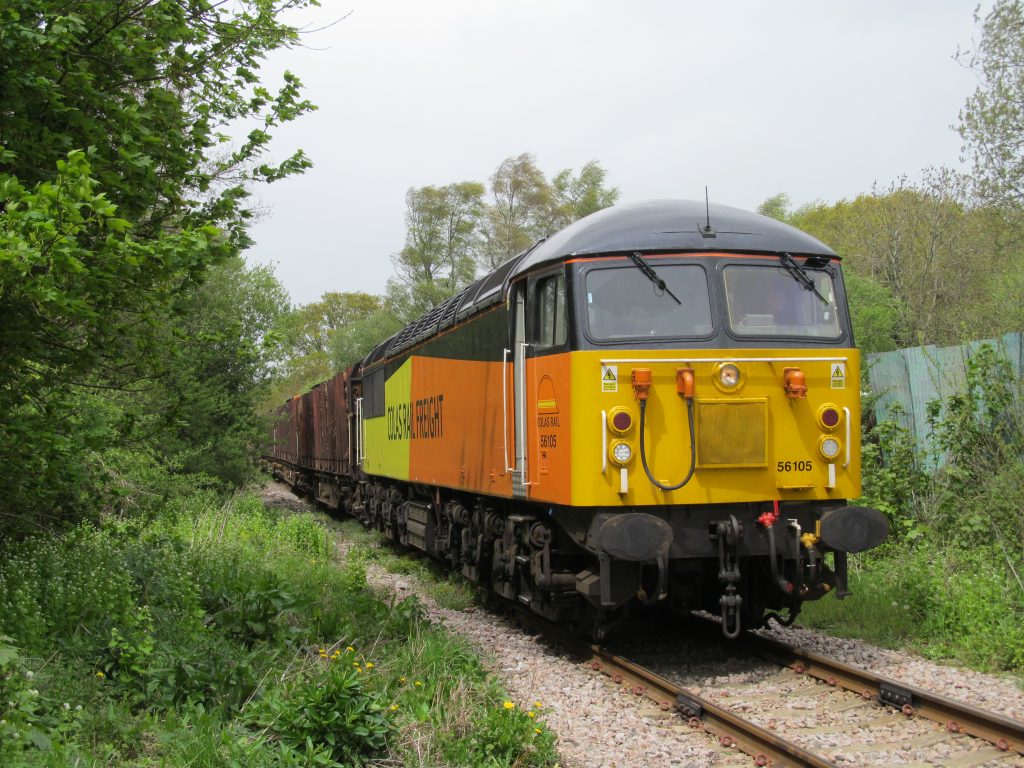
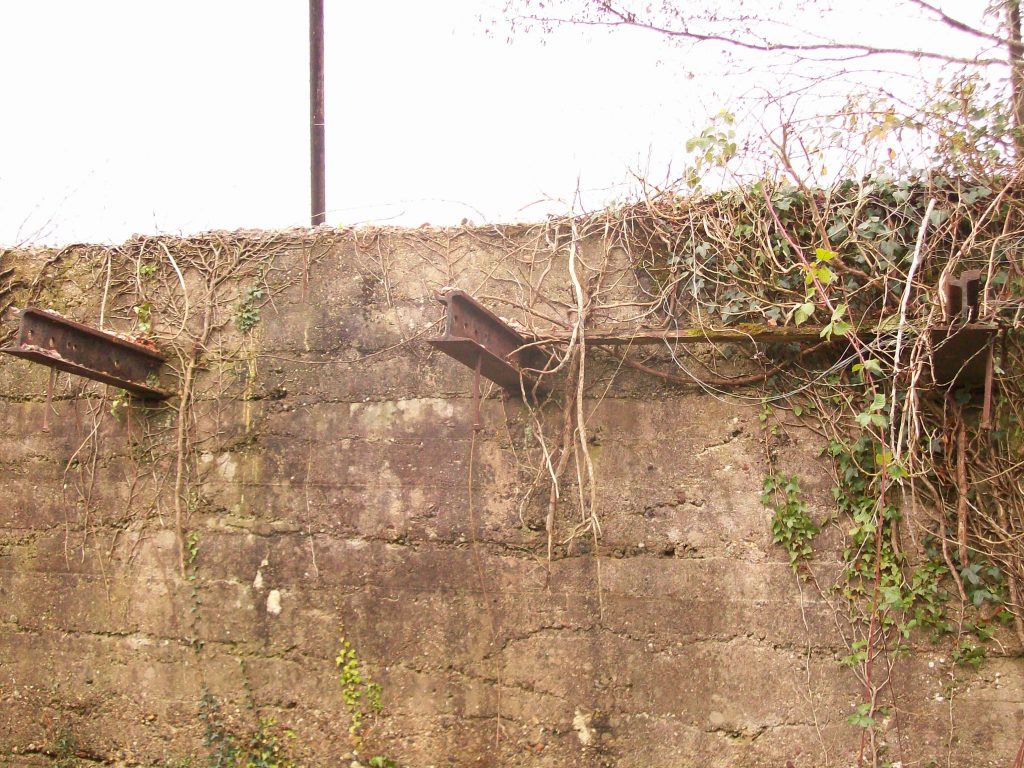
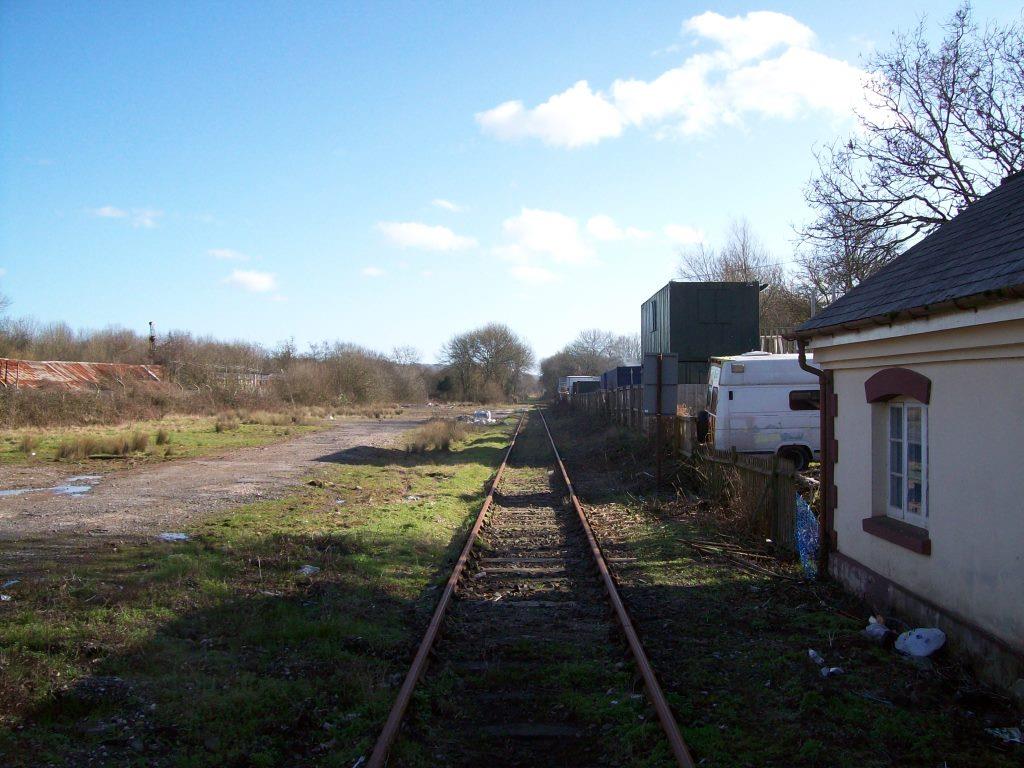
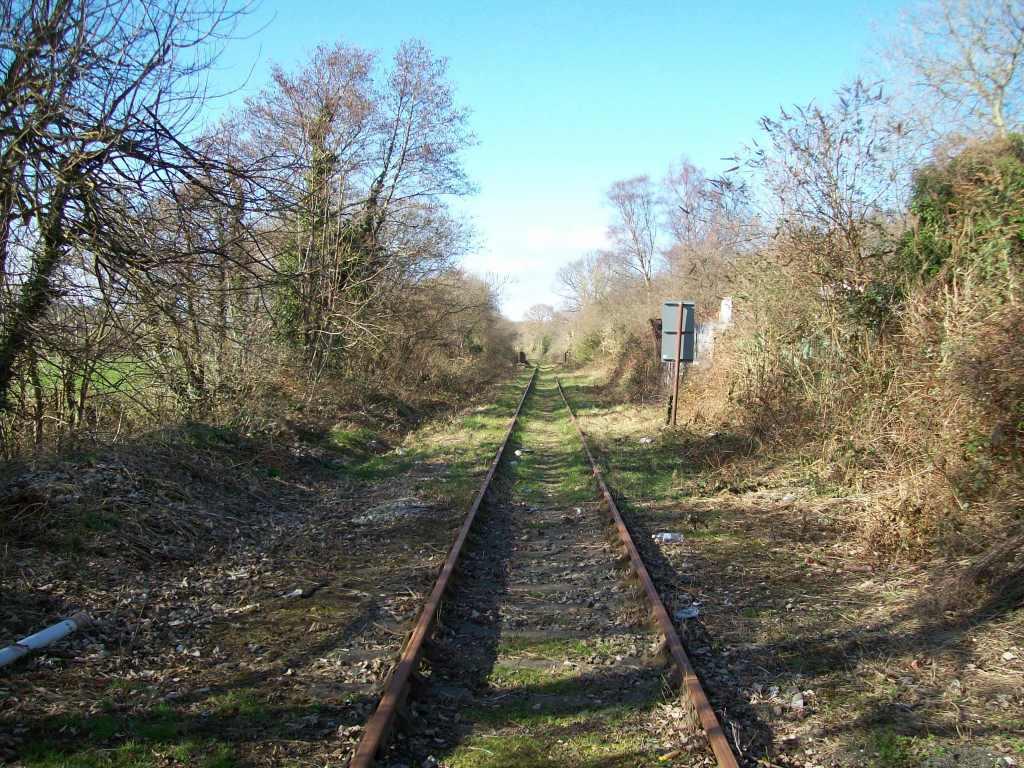
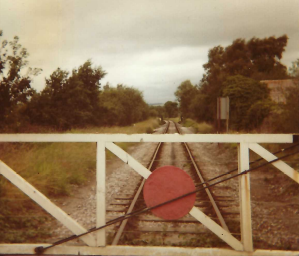
Teigngrace Halt
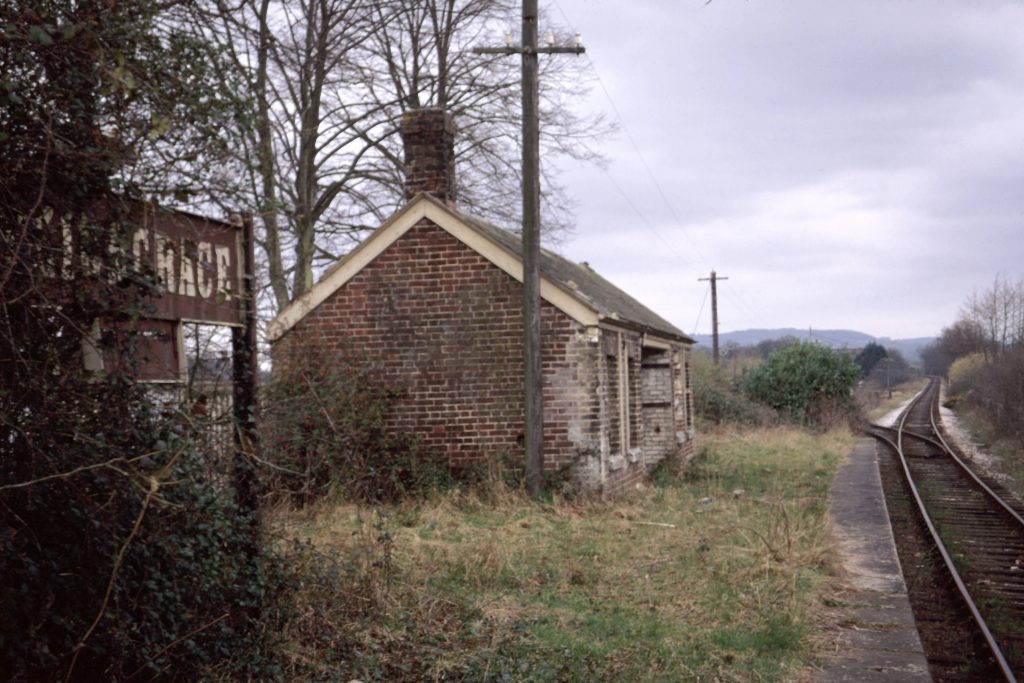
The building served as the headquarters of the fledgling South Devon Railway Society.
The siding serves a high clay-loading dock.
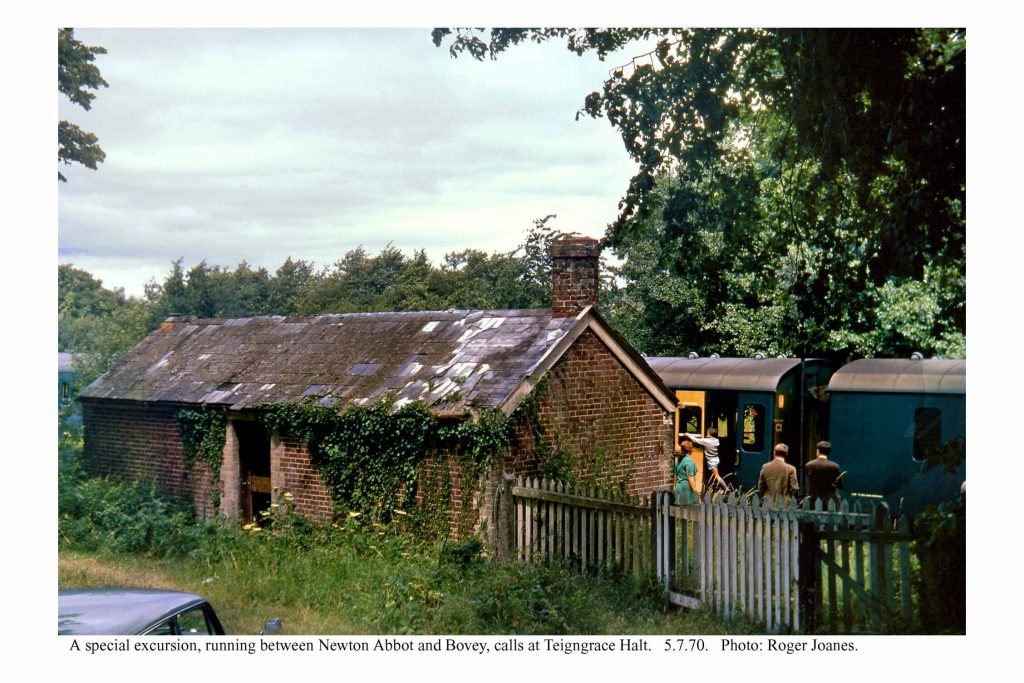
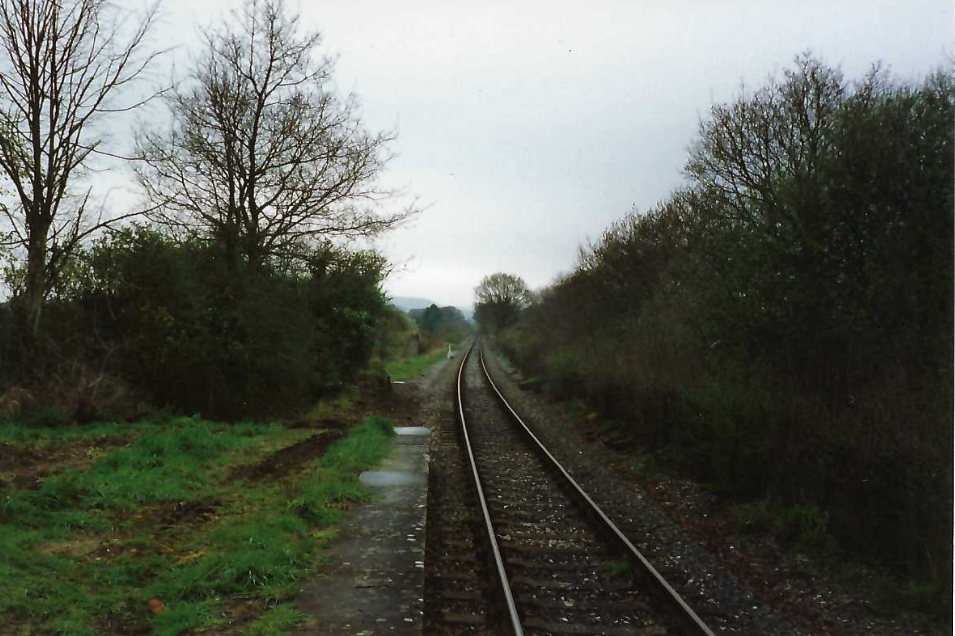
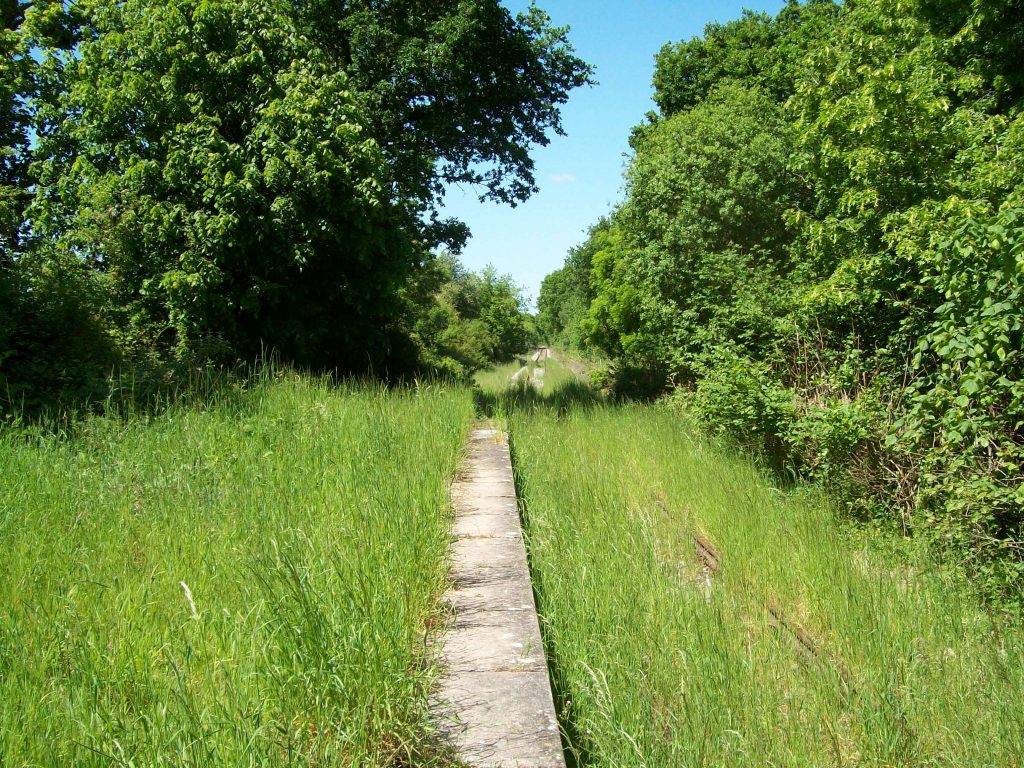
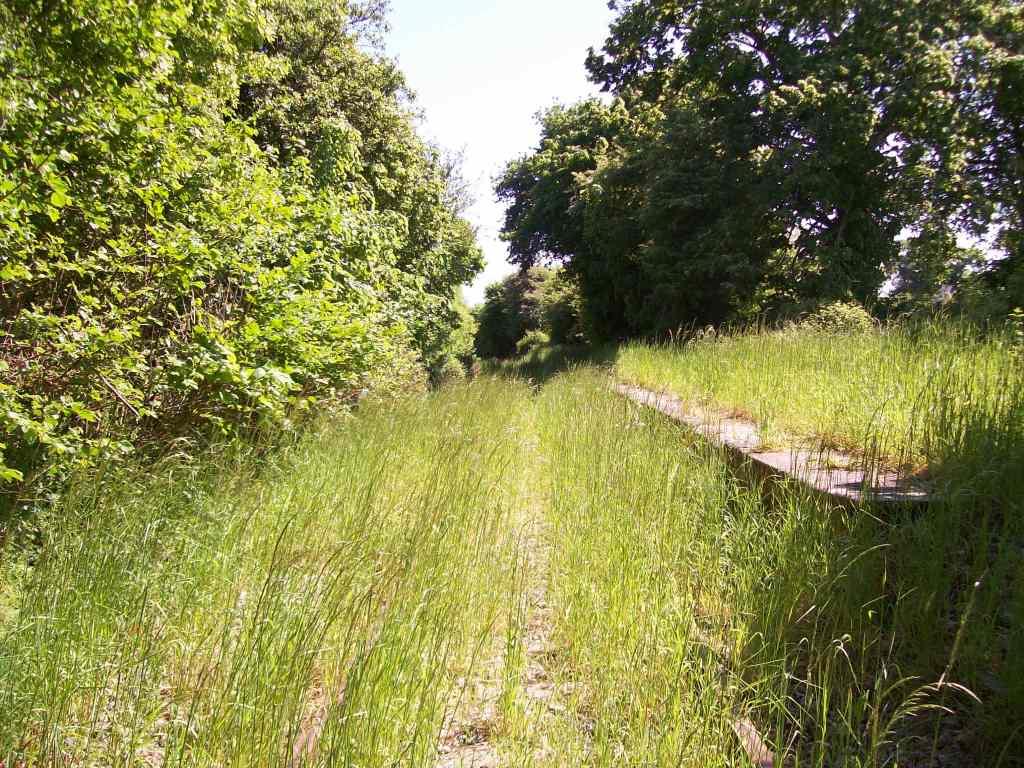
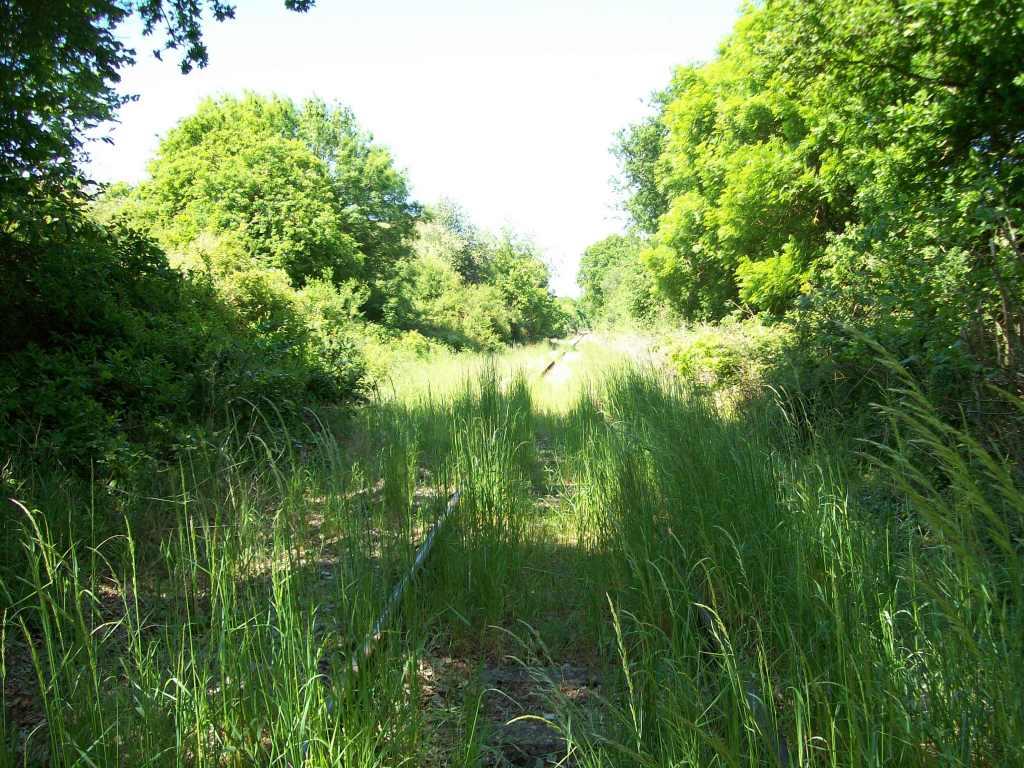
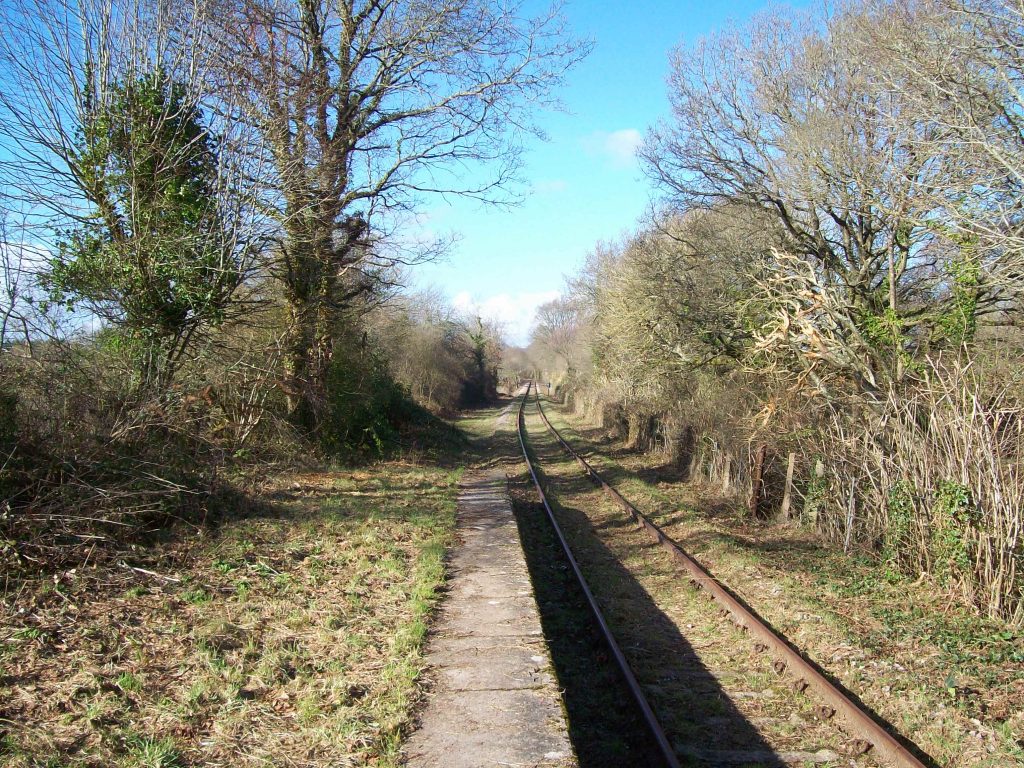
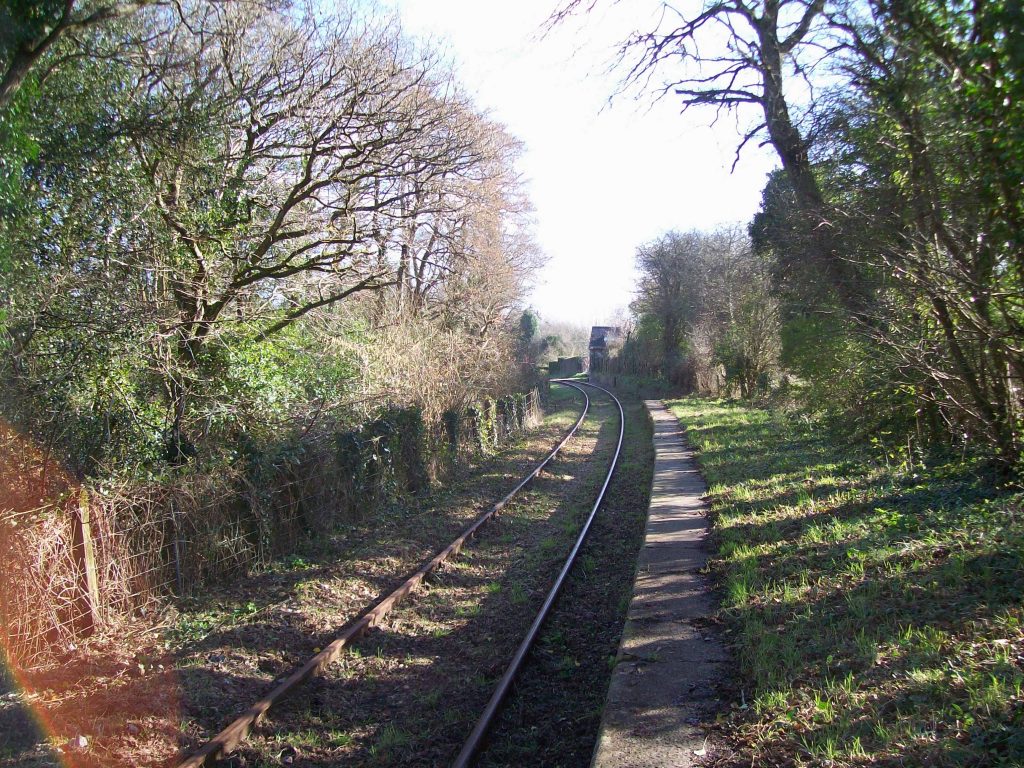
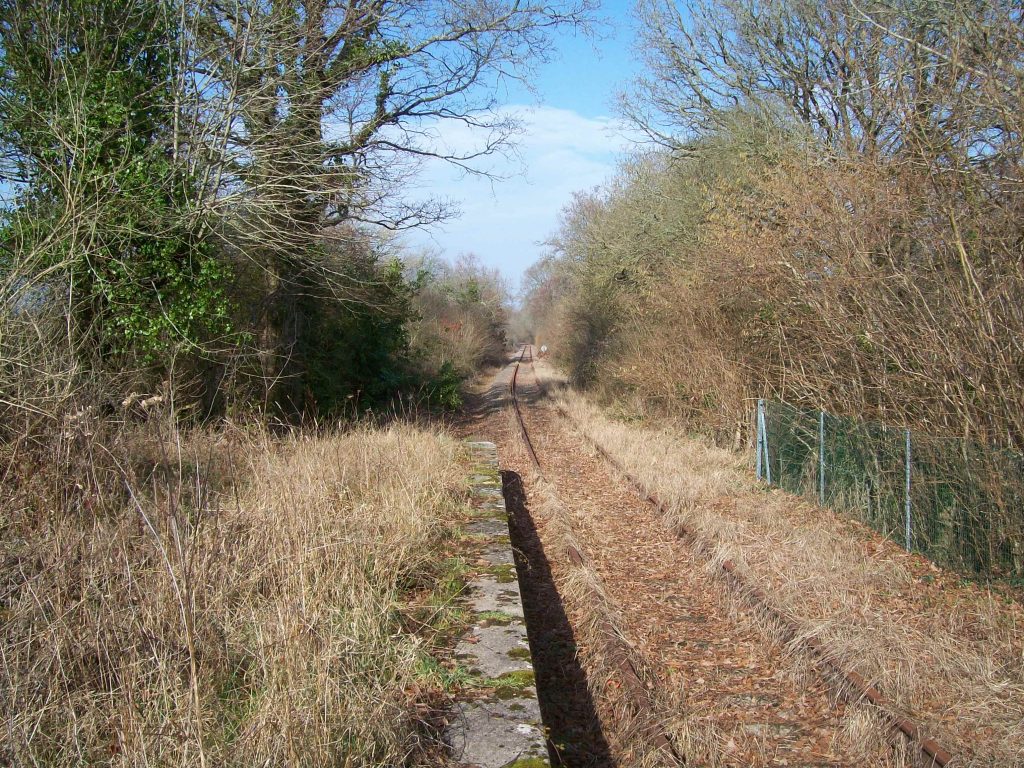
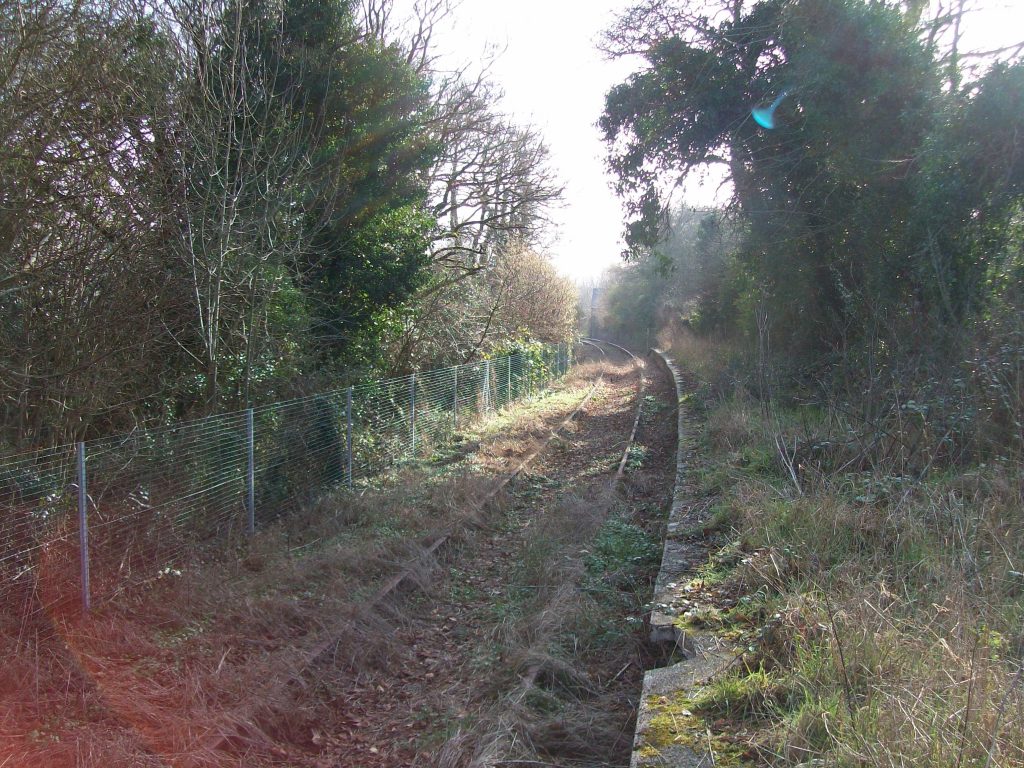
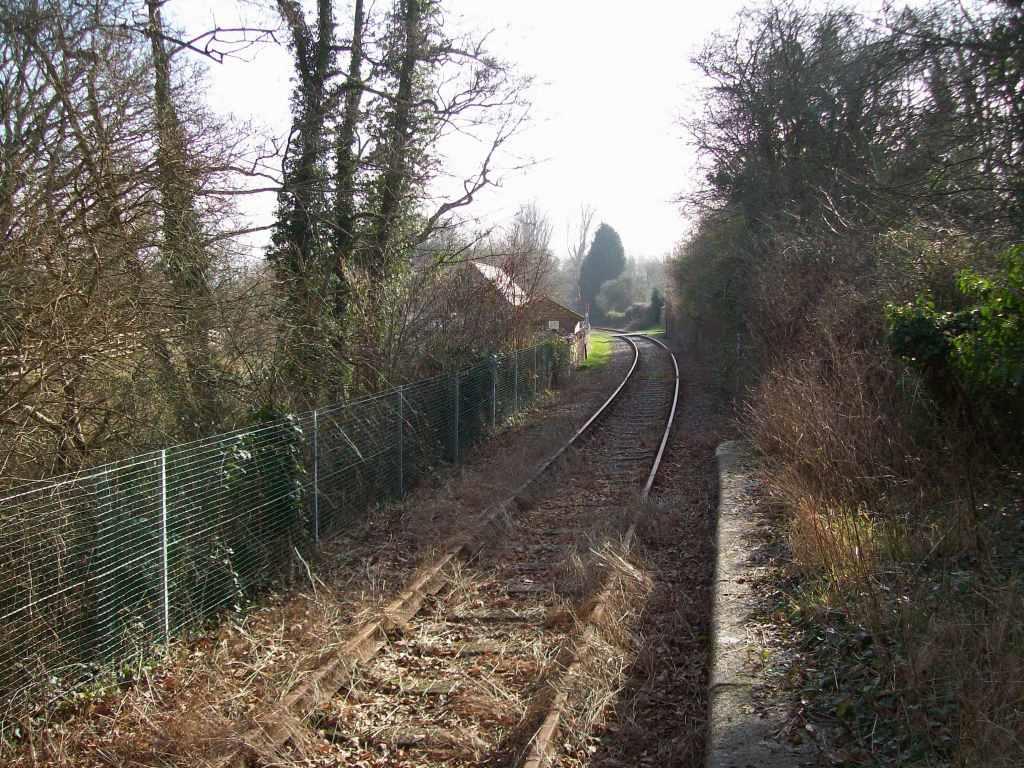
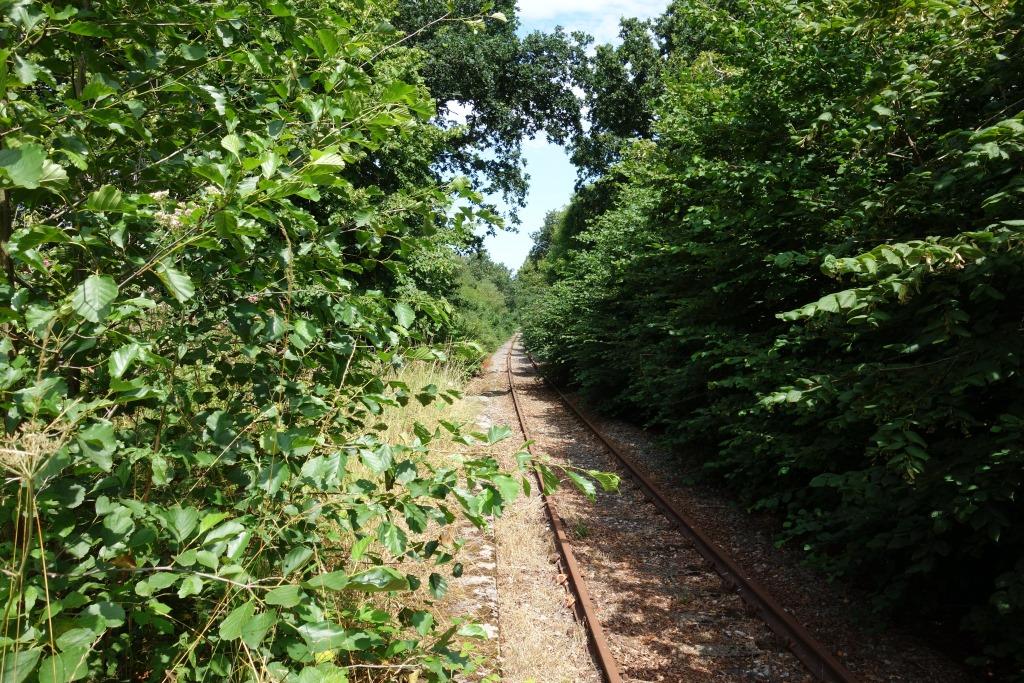
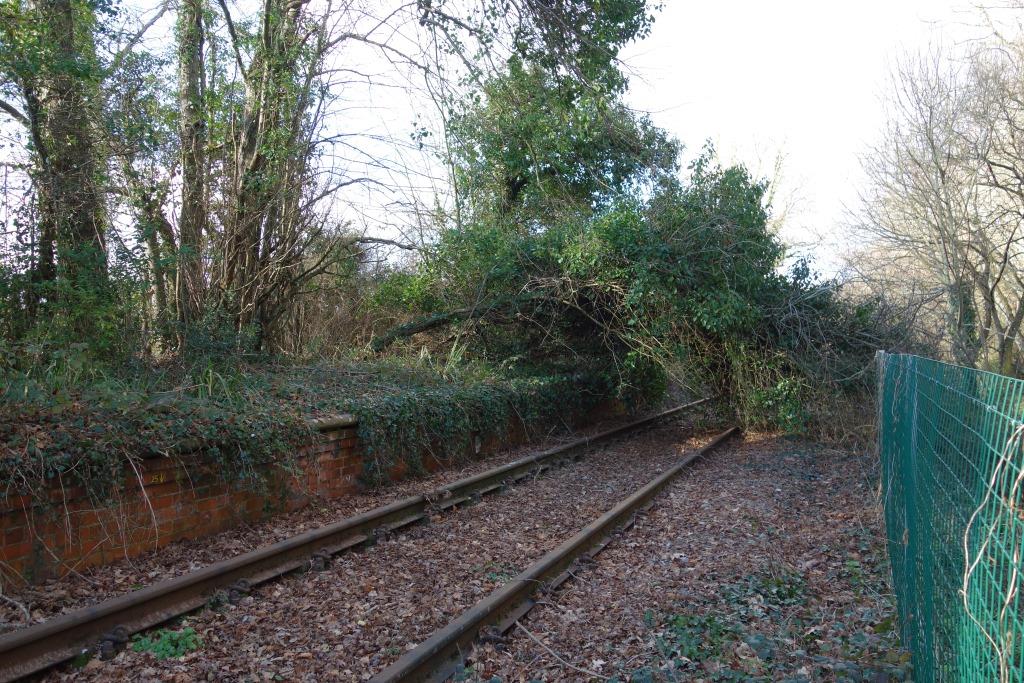
The station briefly comes to life in this 2015 video.
Heathfield
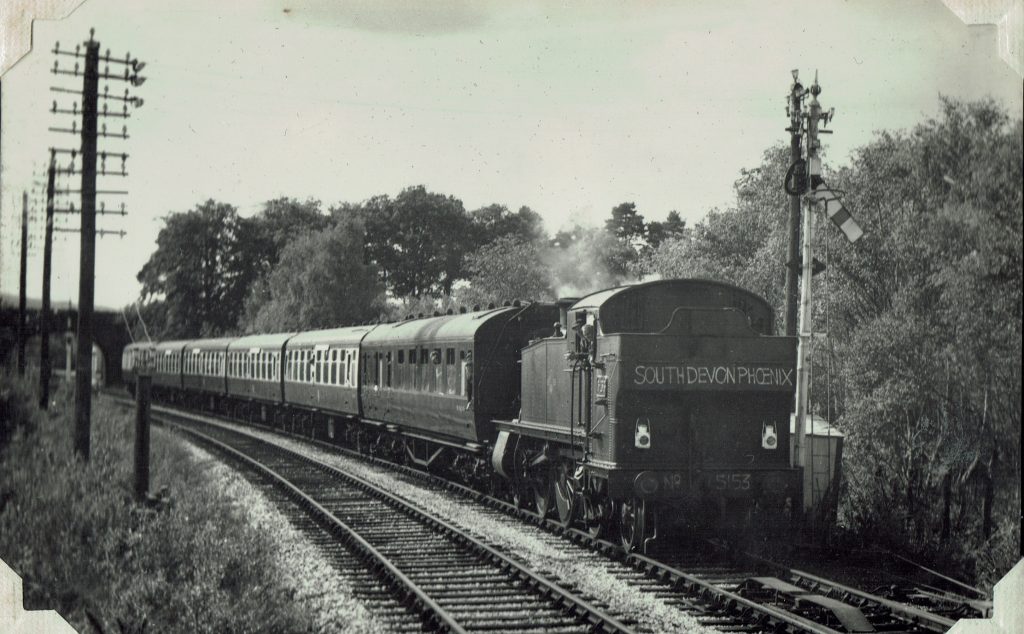
5153 on the “South Devon Phoenix” return excursion from Moretonhampstead to Paignton leaving Heathfield, the erstwhile junction for the Exe Valley line. The points in the foreground lead the train onto single line. 11-6-62
W. Underhay on the footplate.
Mr. Owen meant the Teign Valley line. The train is about to pass over the motor-worked trap points at the end of the loop, lengthened in 1943.
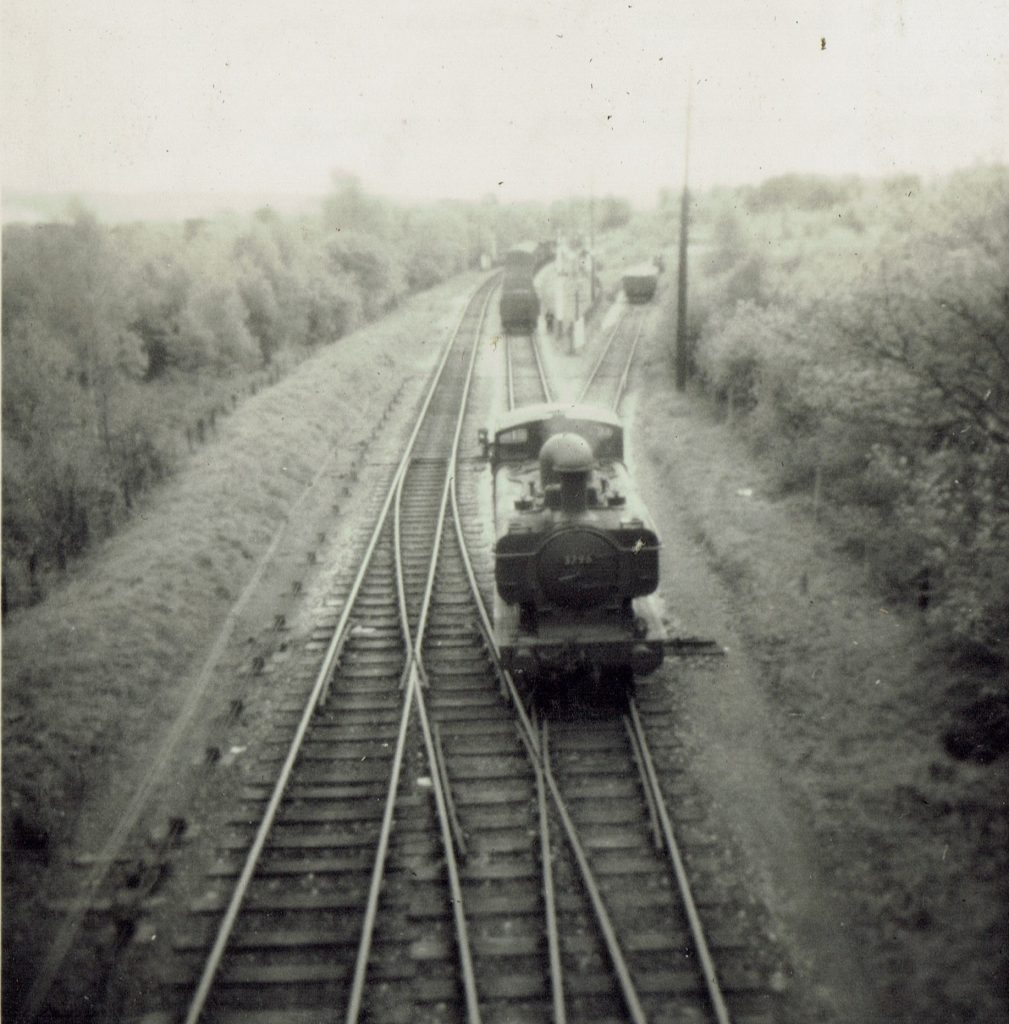
The Up Main at left is the 1943 extension of the passing loop. (R. Holladay)
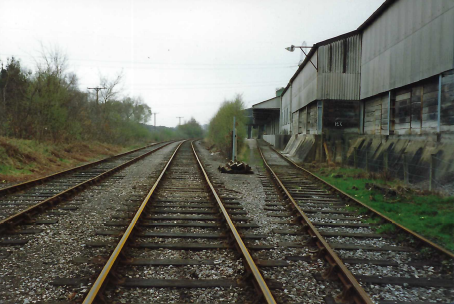
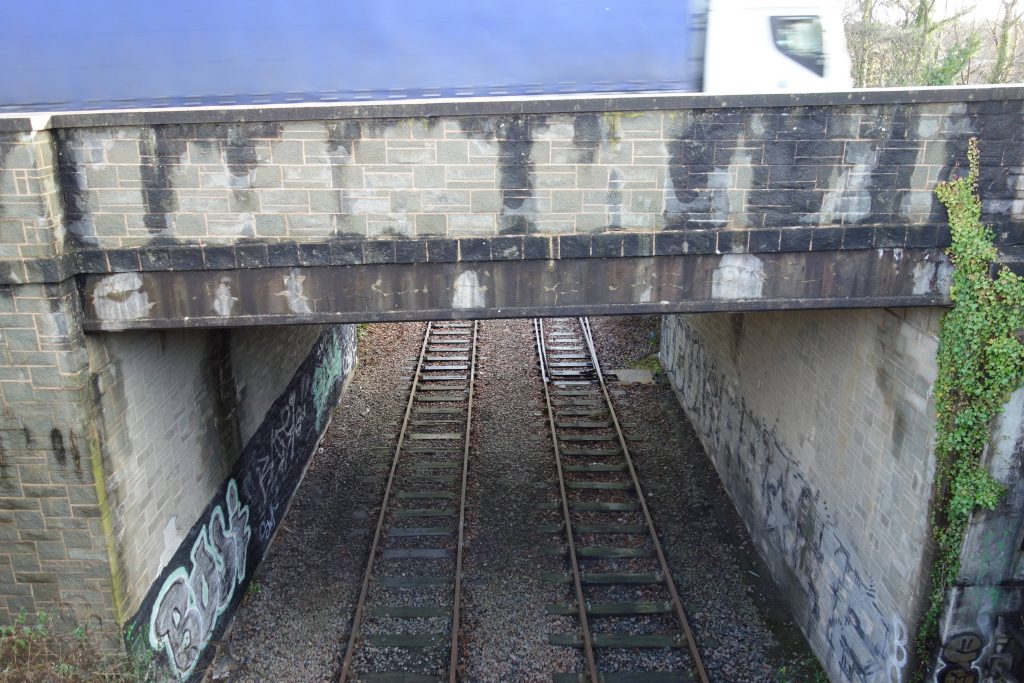
The crossover has gone but the siding points remain.
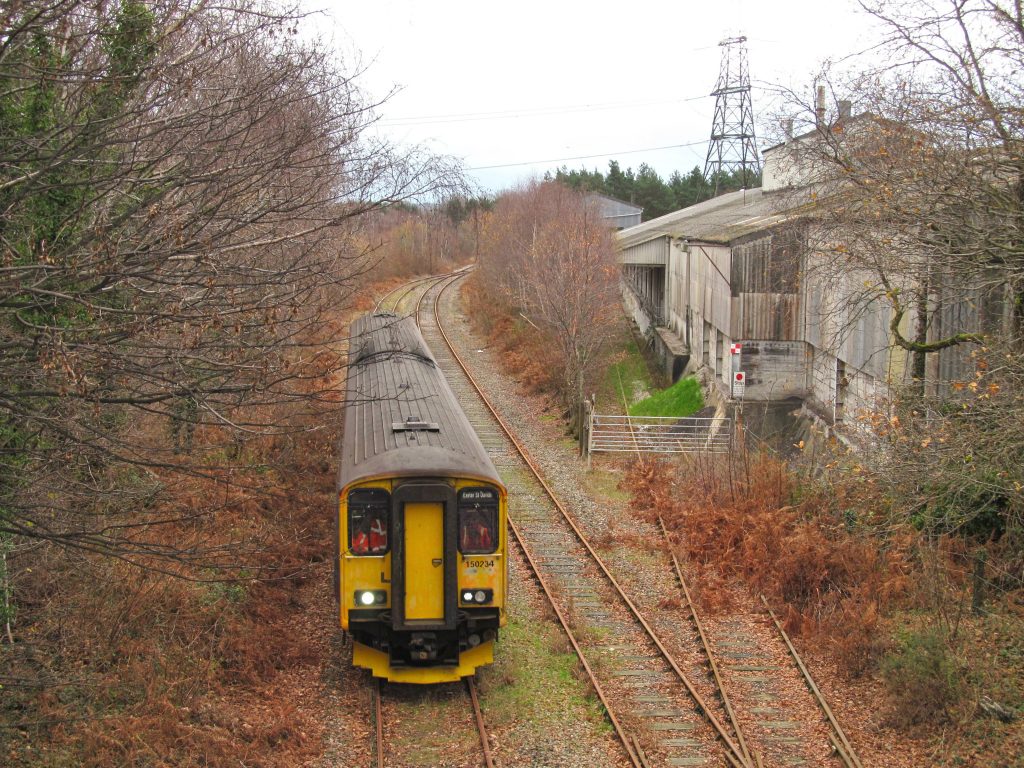
“Timber Siding,” at right, is obstructed beyond the gate.
“Timber Siding” was a loop, connected at the far end to the single main line, and was installed for Stover Estate traffic. Lignite from the Blue Waters pit was loaded for a while after the war but it was then turned over to clay. The R.C.H. Hand-Book of Stations lists the trader as English Clays, Lovering, Pochin & Co., Ltd and the facility as “Stover Siding.” E.C.L.P. was one of the constituents of the conglomerate English China Clays and it was E.C.C. (Ball Clays) that used the siding latterly.
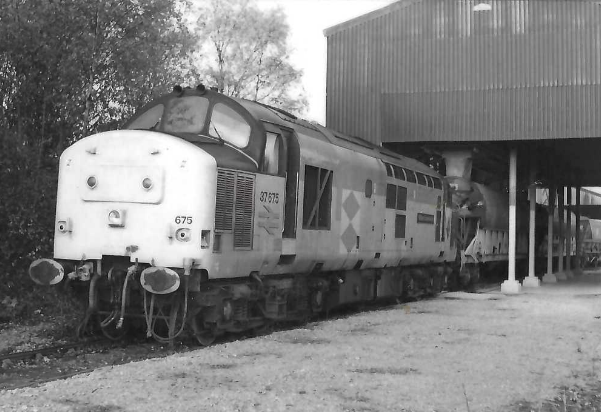
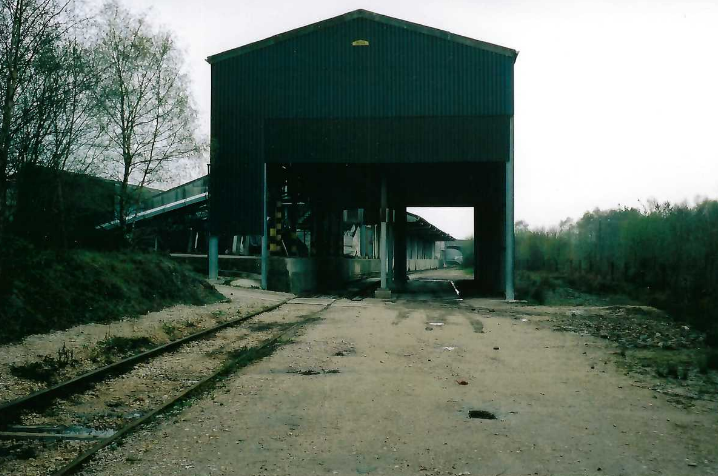

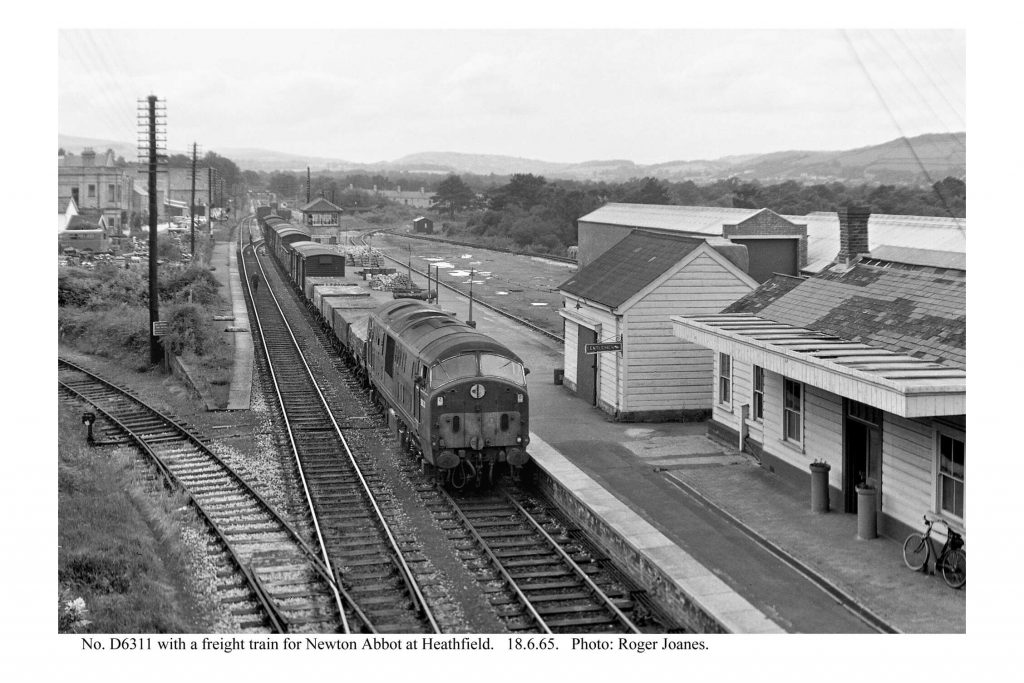
The following three photographs are taken from the Down platform at Heathfield in what is thought to be the early 1960s, when both branches had closed to passengers but were still open, at least in part, for goods.
In the third one, the huge quantity of track sections, both at right and in the “vee” of the junction, cannot be fully explained. It is likely that the chaired concrete-sleeper sections at right are for re-laying the line between here and Gulf Oil’s new terminal of 1966, half a mile towards Bovey. (B.R./O.P.C.)
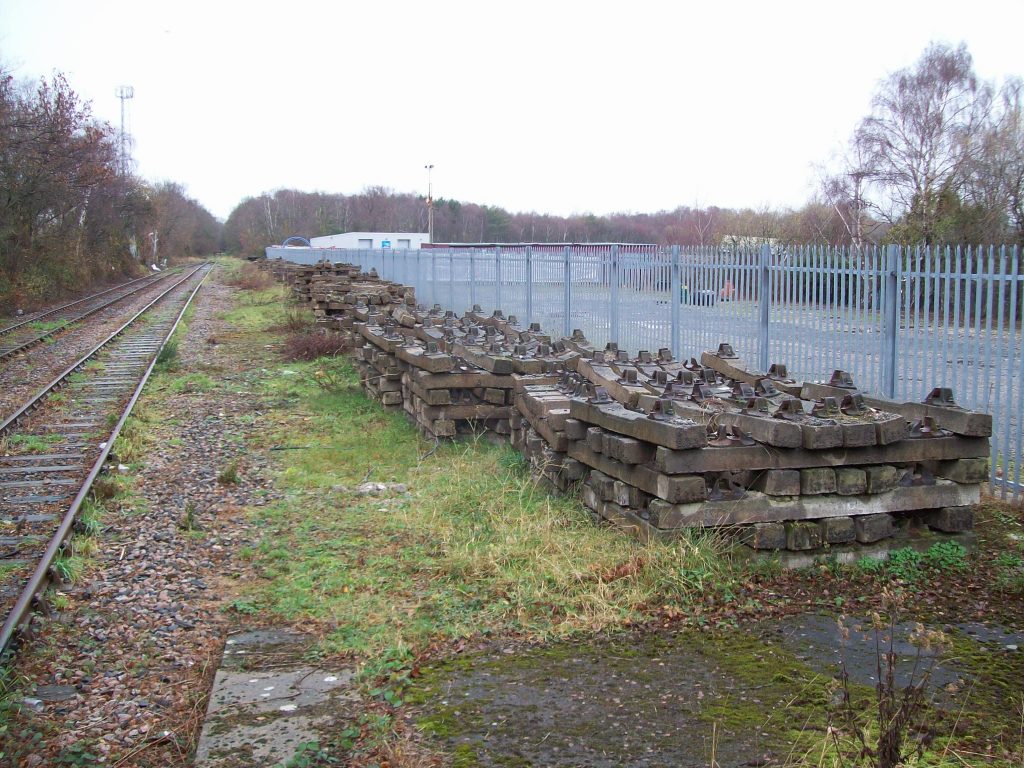
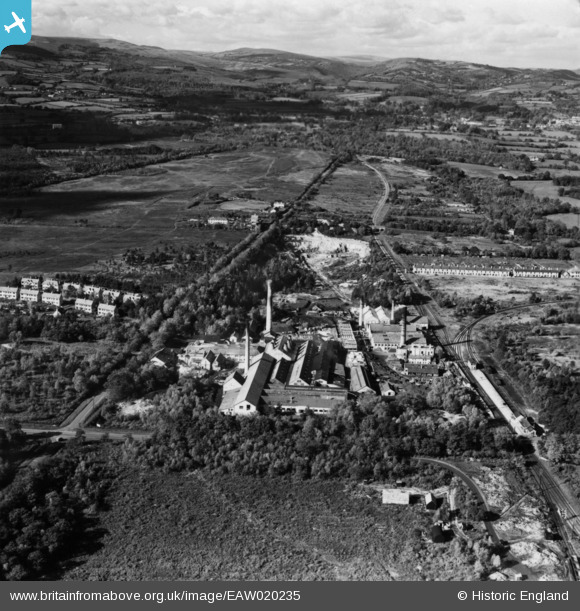
Heathfield Station is at right with the course of the Moretonhampstead Branch clear until it runs alongside OId Newton Road. The Teign Valley Branch curves to the right. Stover Siding is at bottom right.
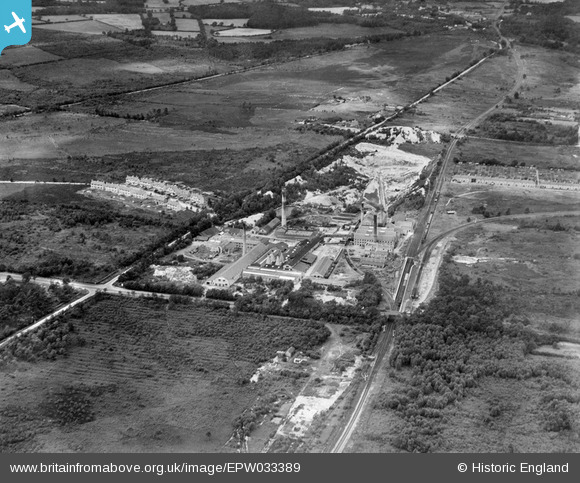
Most of the land bordered by Newton Road (top), the A38 and Old Newton Road is now covered in housing and a trading estate. Land to the right of the station, including the Teign Valley line, has also been swallowed by development.
Below is a collection of photos of the station taken at different times.
Special trains on the Moretonhampstead Branch.
Heathfield – Newton Abbot Community Rail Project.
The scout took the following six photographs in January, 2012, after the track beyond Heathfield had been needlessly lifted the previous year.
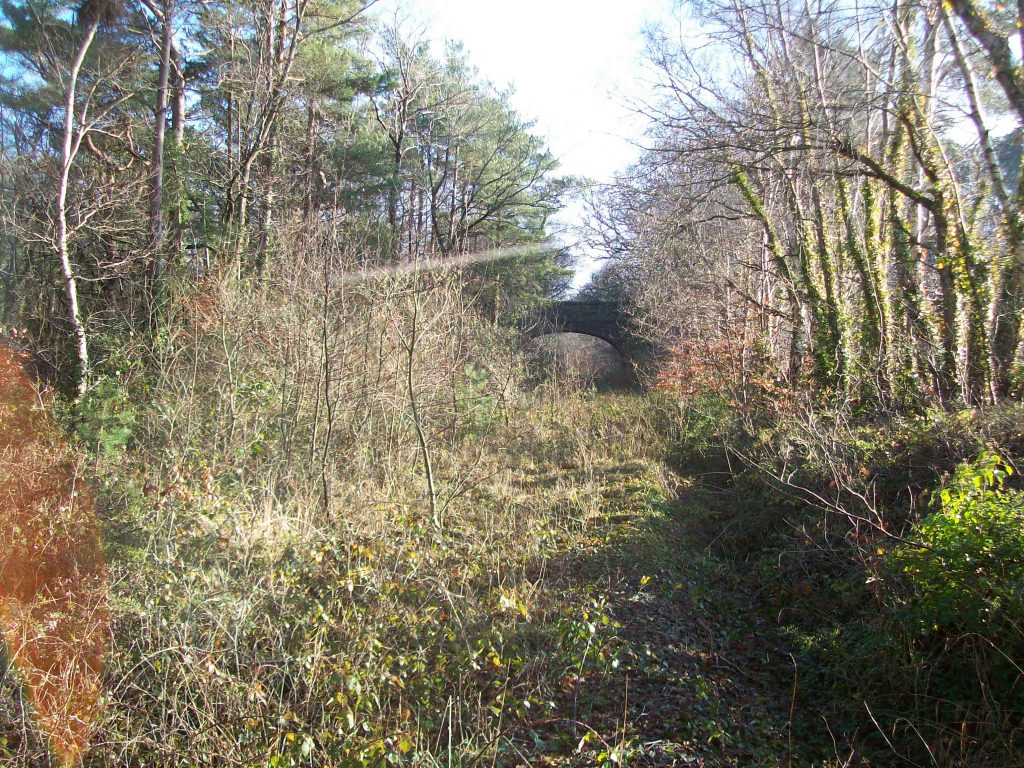
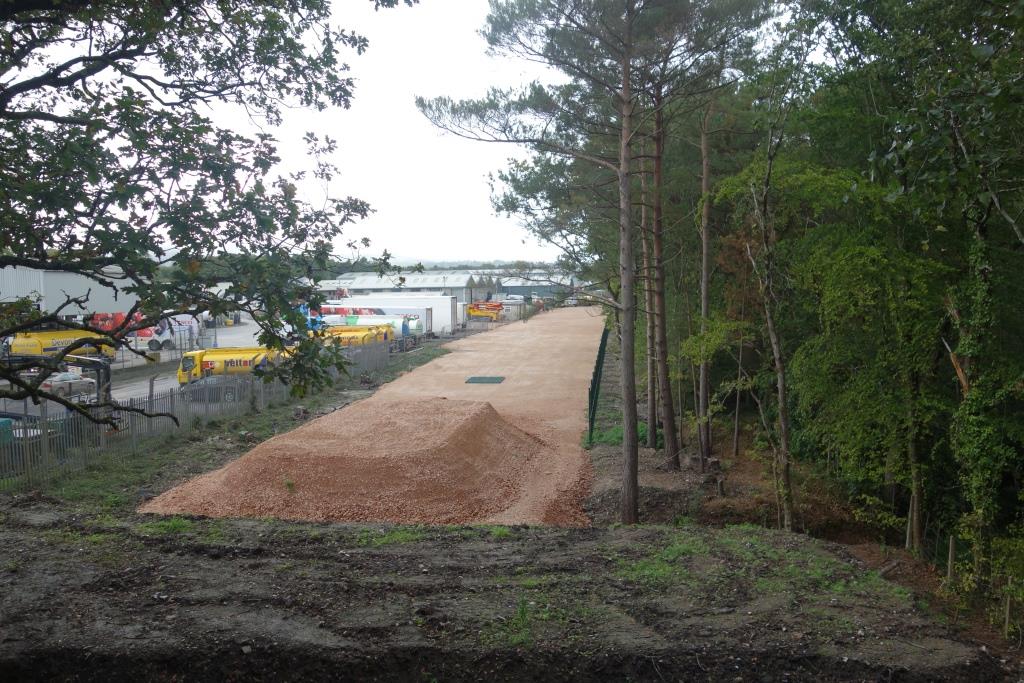
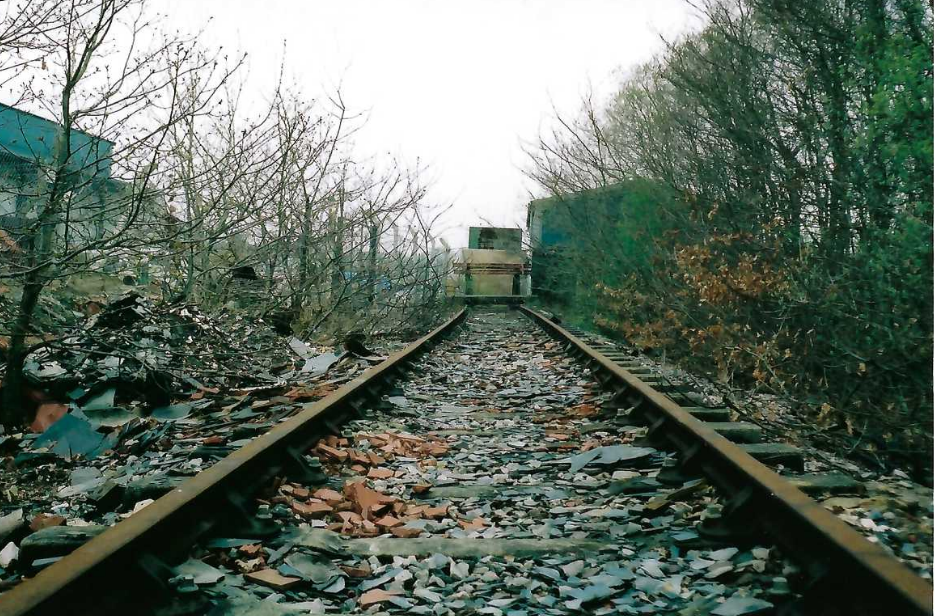
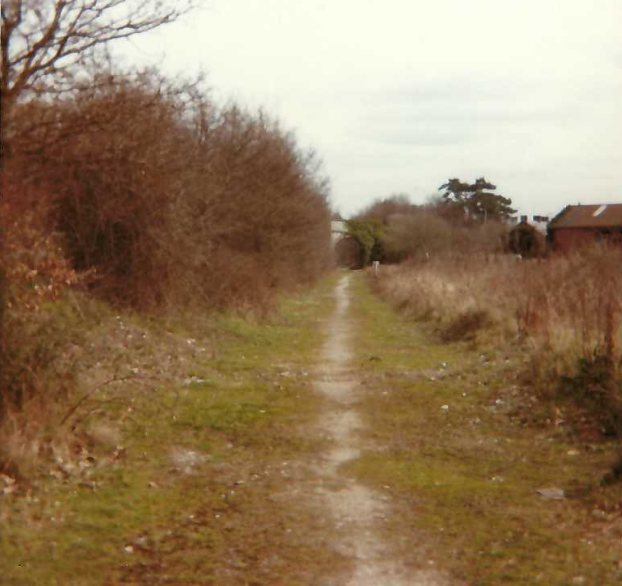
Here the scout looks back at the bridge, which would be obliterated by the new road. At right was the derelict Bovey Pottery, which had a private siding connected to the branch just this side of the bridge.
Brimley Halt
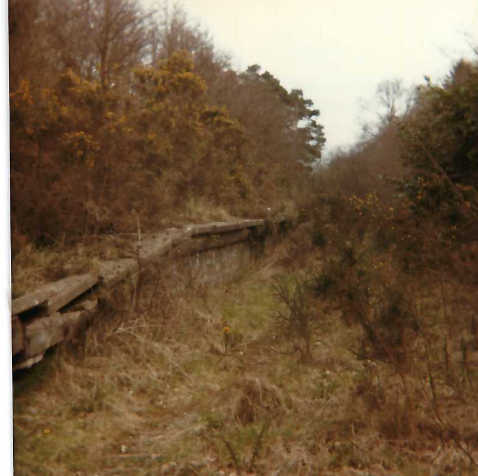
Bovey
In 1991, the scene that was so quintessentially English, of a country railway station going about its business of organized public transport, had gone. The system whose outpost had come to belong to the little town, the relatively benign means of transport which held the promise or potential to develop and modernize into part of a widespread sustainable national network open to all, and all things, had been given over to the self-centred car user and the self-interest of the haulier and vanman.
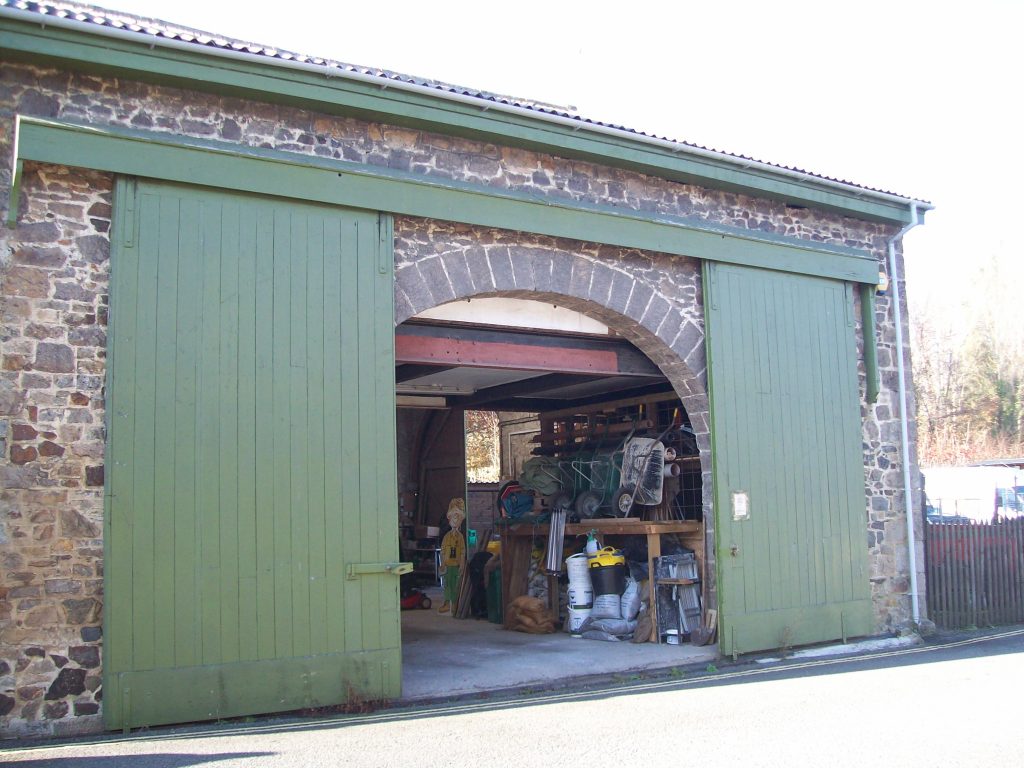
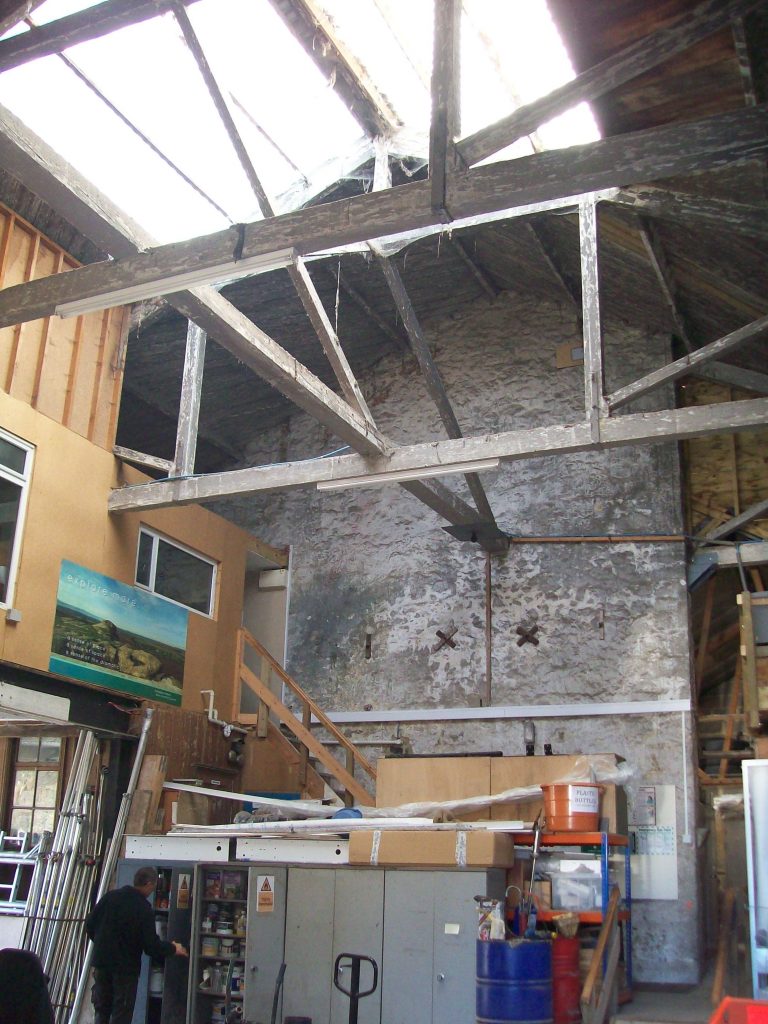
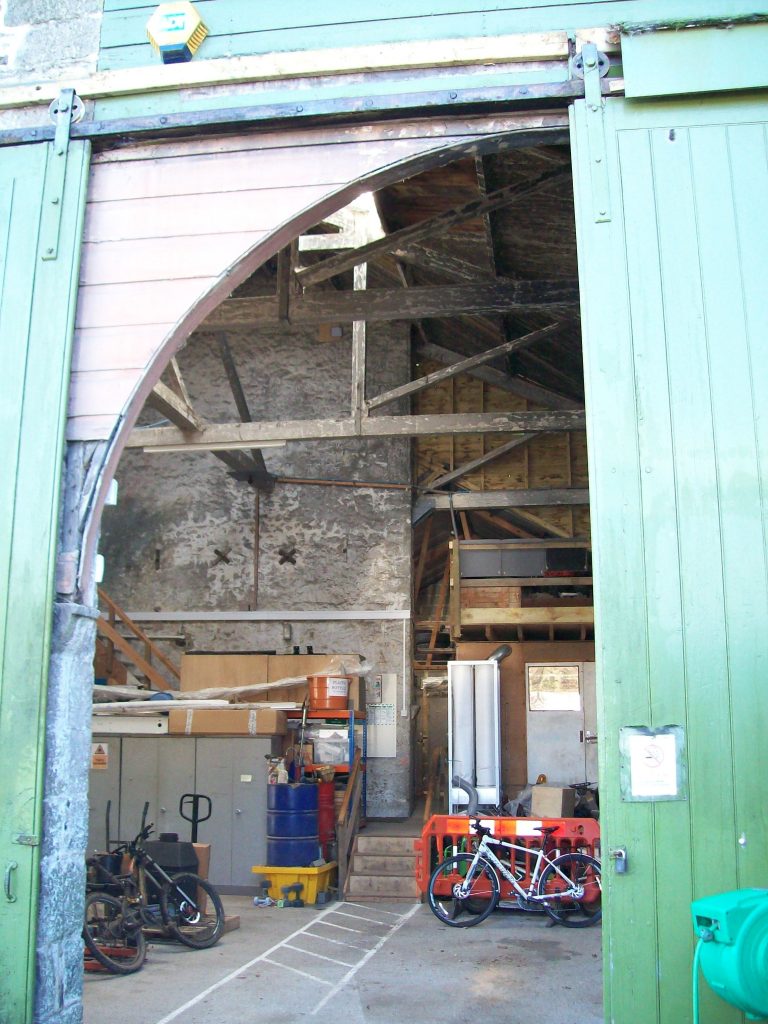
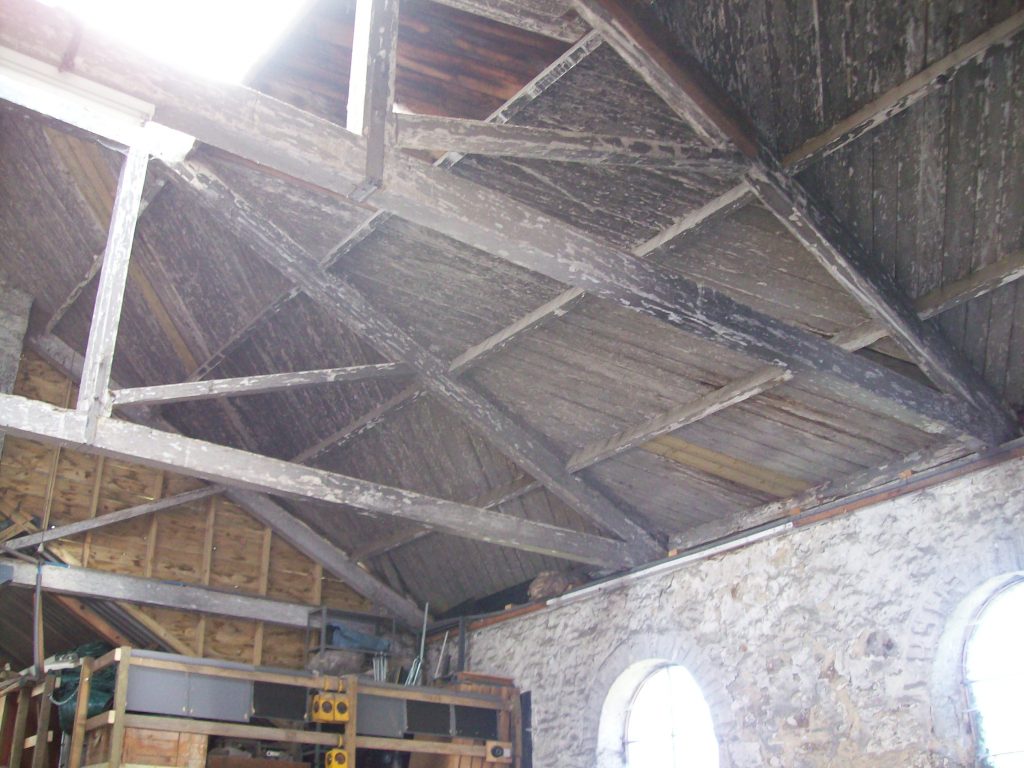
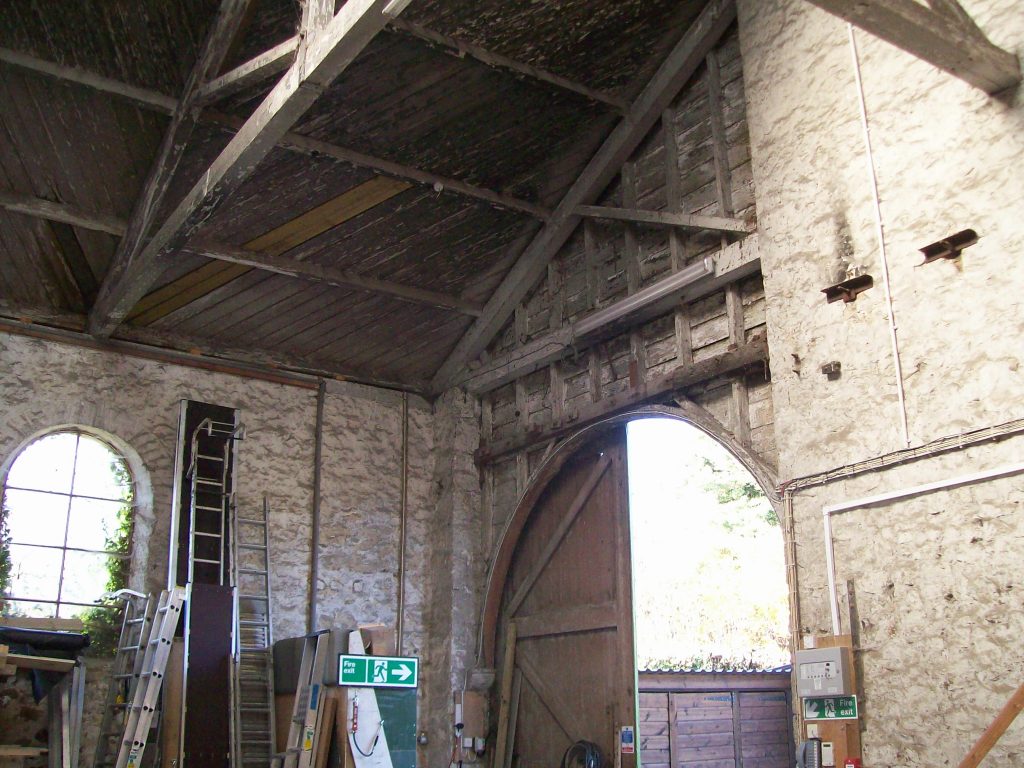
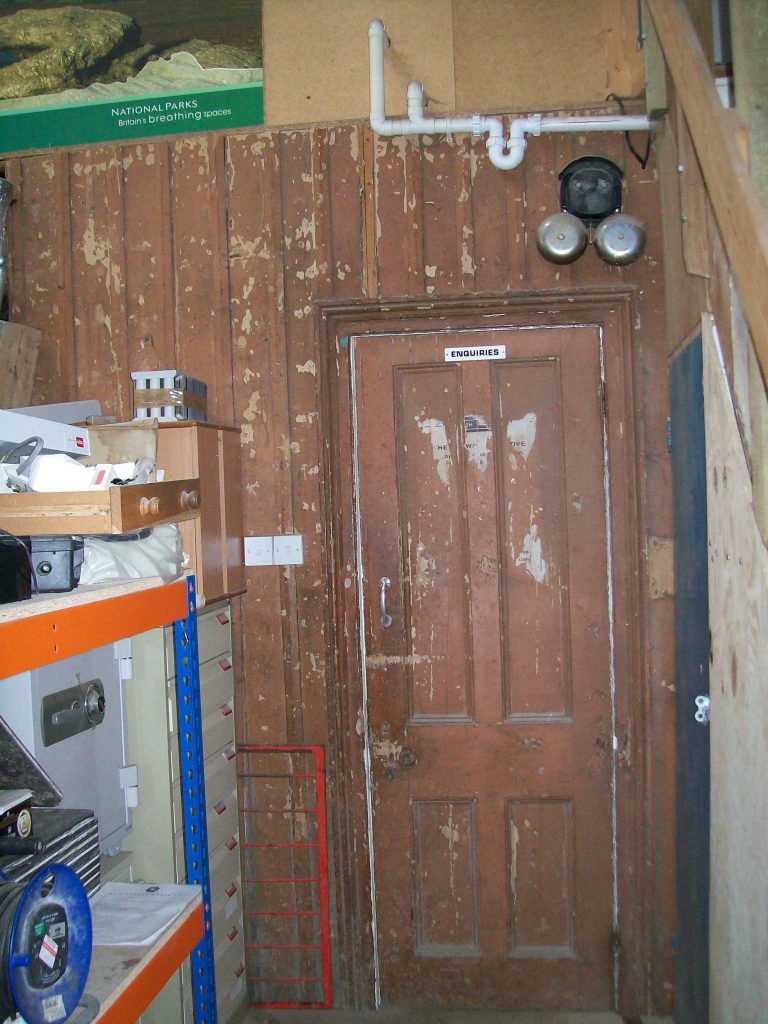
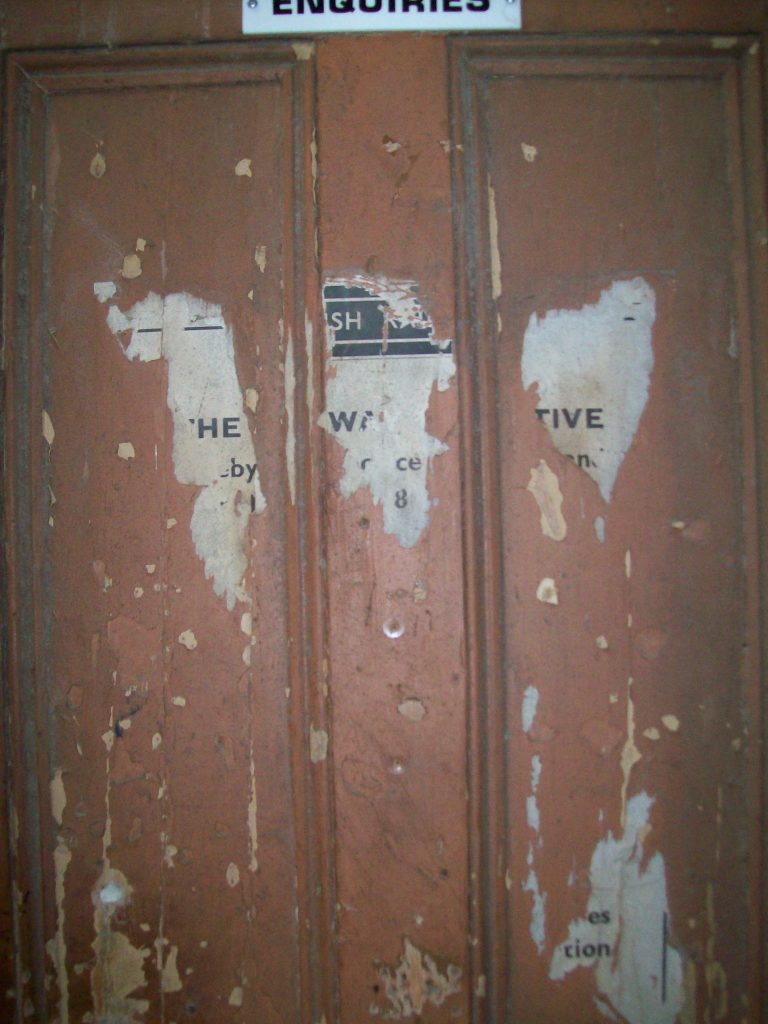
THE RAILWAY EXECUTIVE
” … hereby gives notice … “
Of what? Closure?
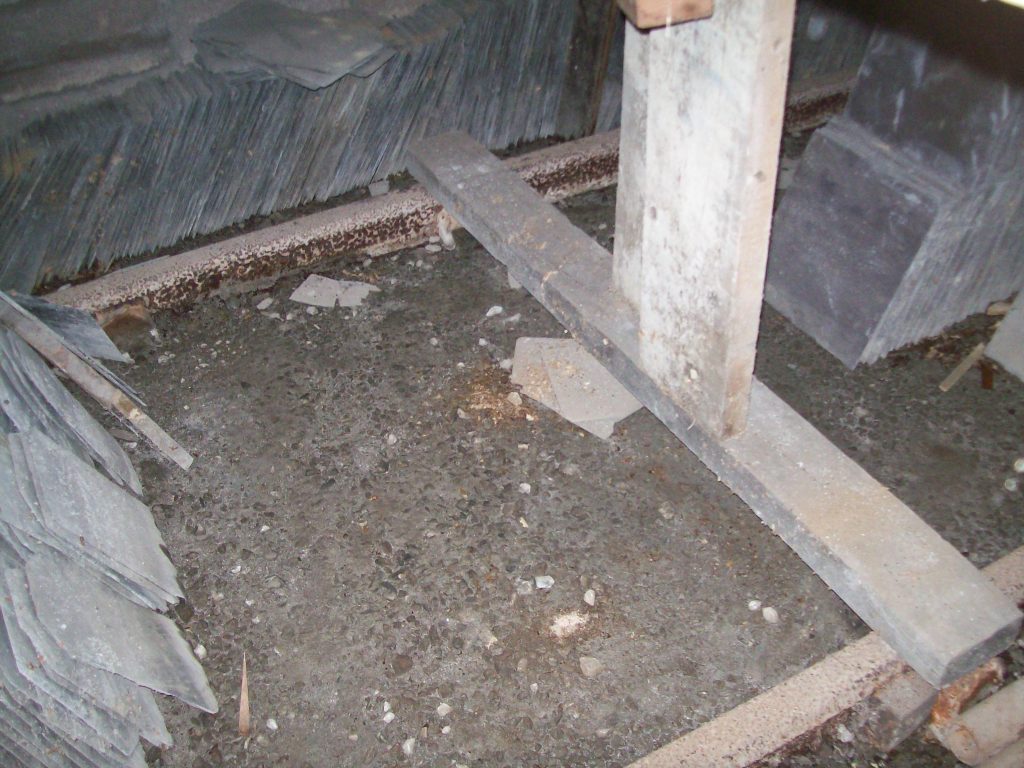
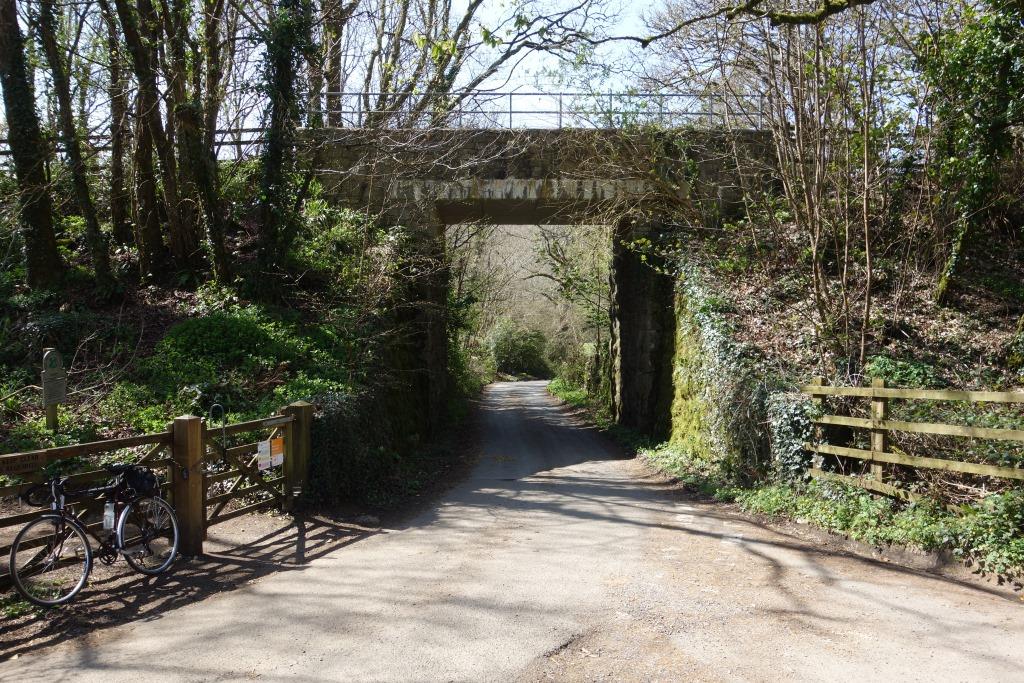
Wilford Bridge over the Bovey is just ahead.
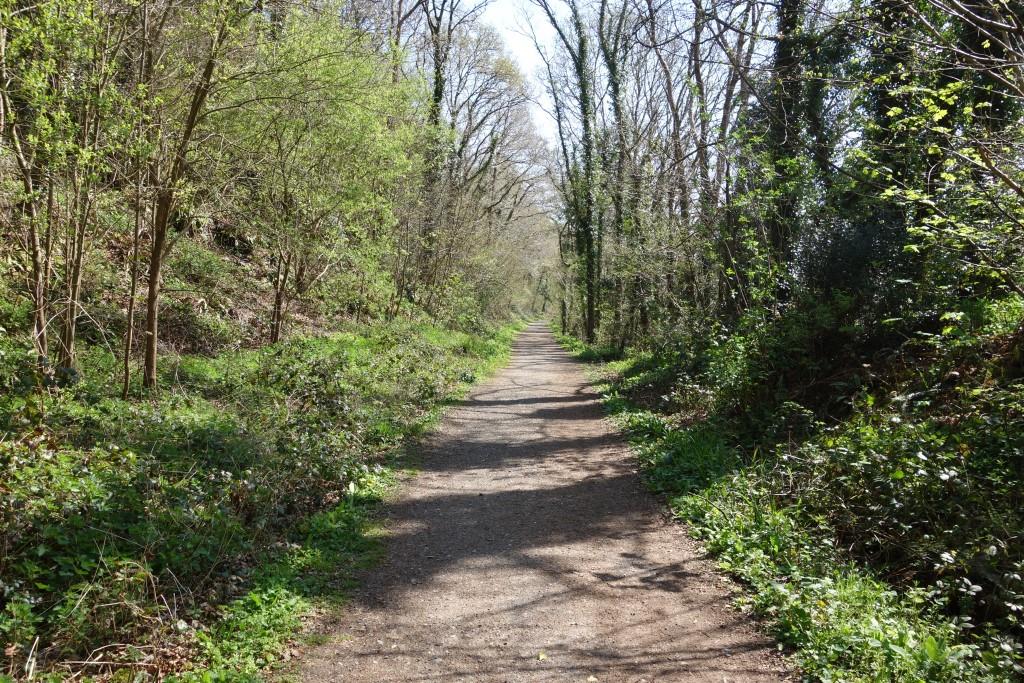
The name of the next bridge may be “Yeo Road” or “Knowles Road.”
The road climbs to where the photograph below was taken but nothing can be seen for the trees.
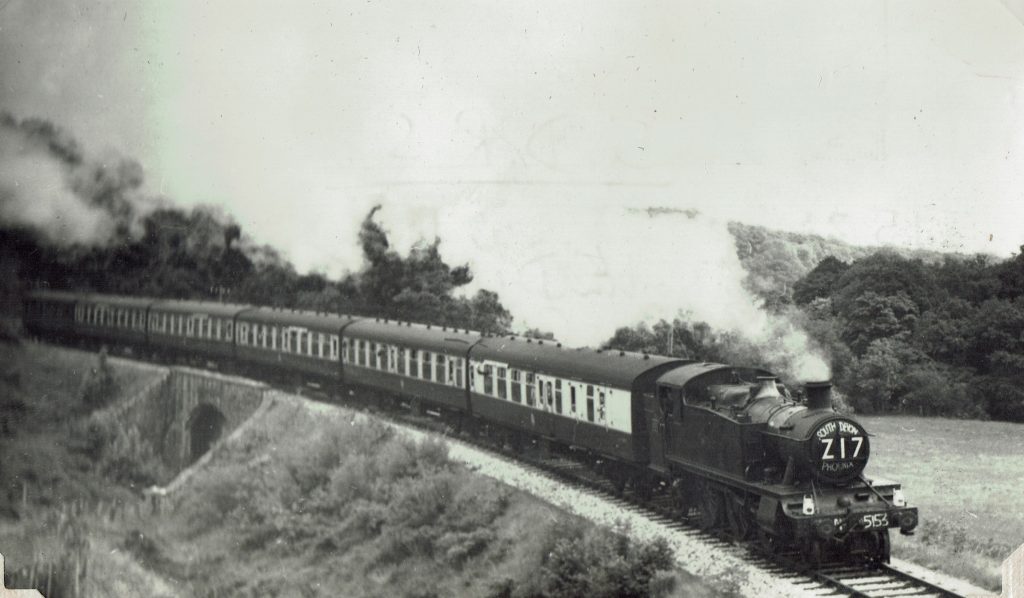
5153 on the “South Devon Phoenix” special excursion from Paignton to Moretonhampstead approaching Pullabrook Halt. 11-6-62
Pullabrook Halt, formerly Hawkmoor
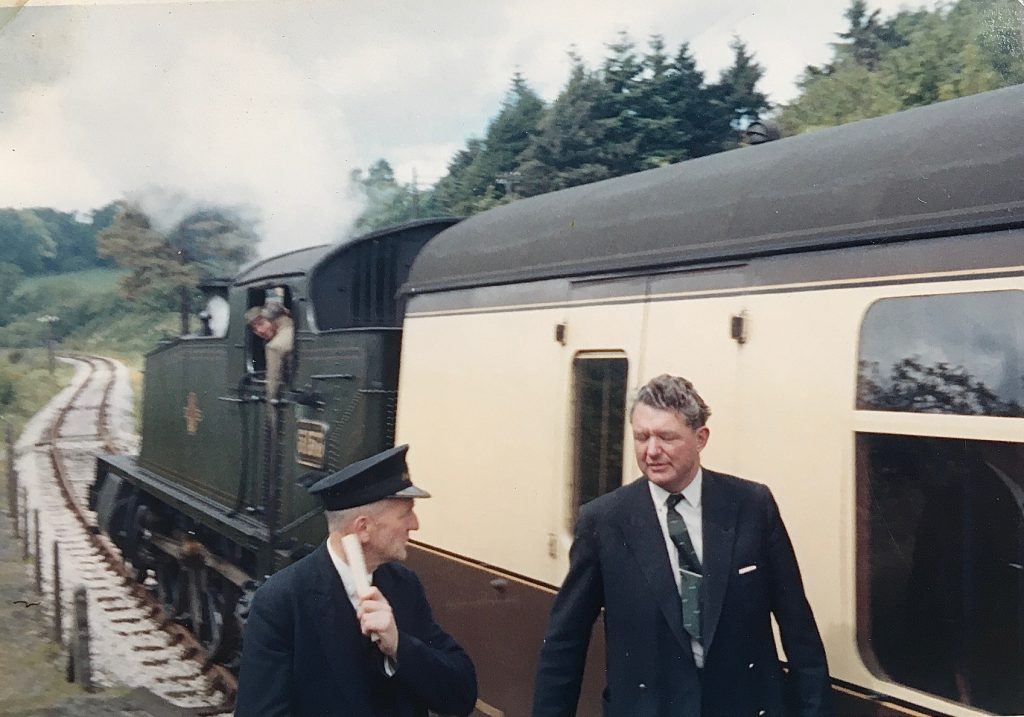
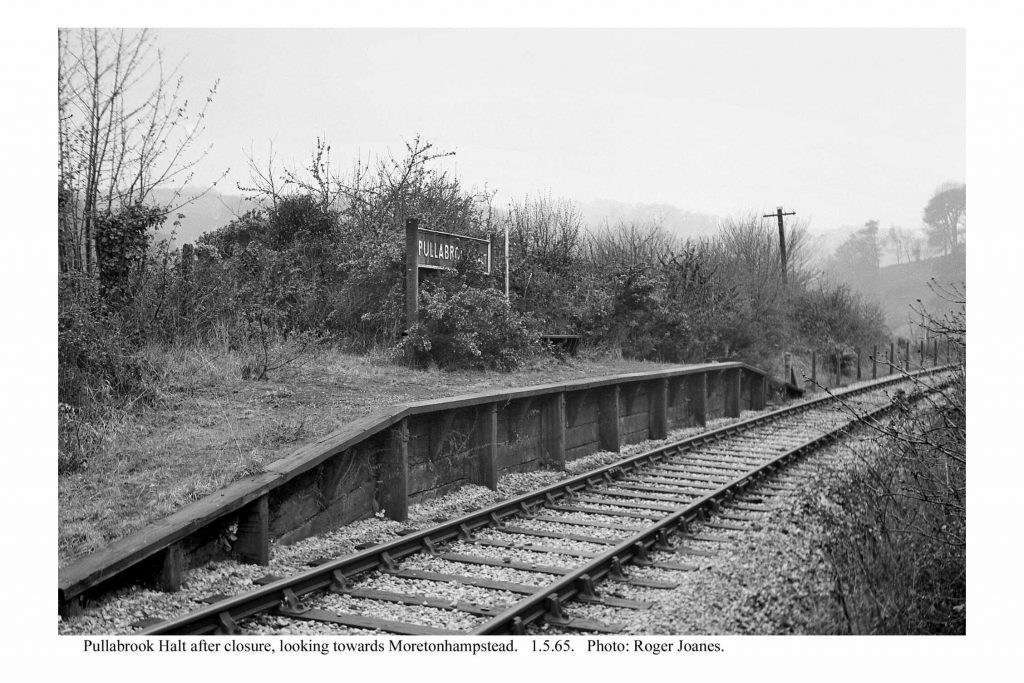
Lustleigh
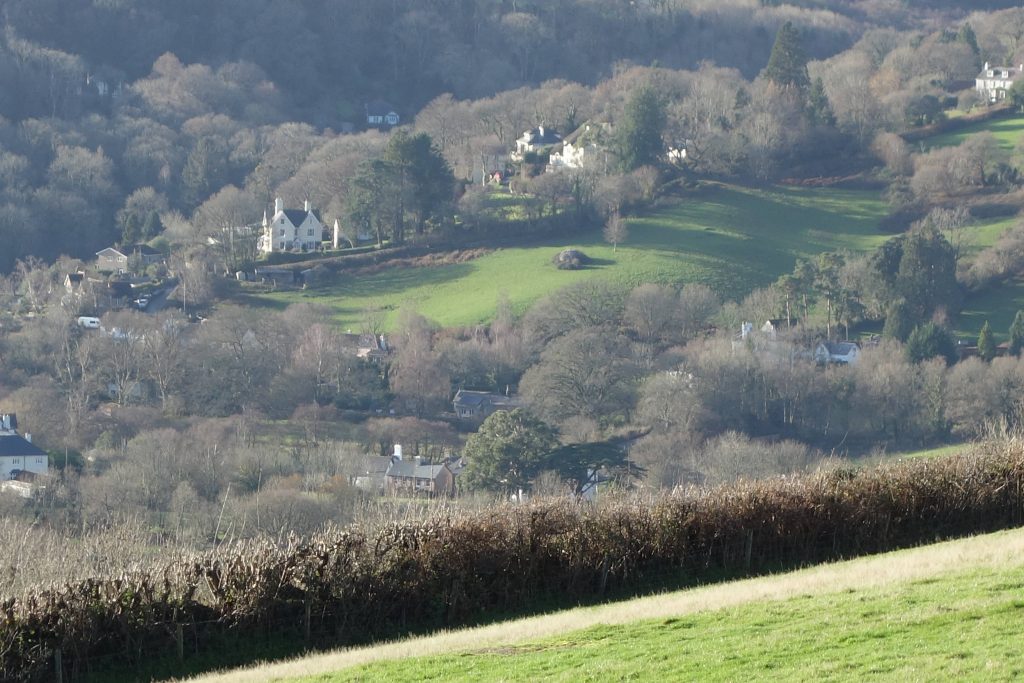
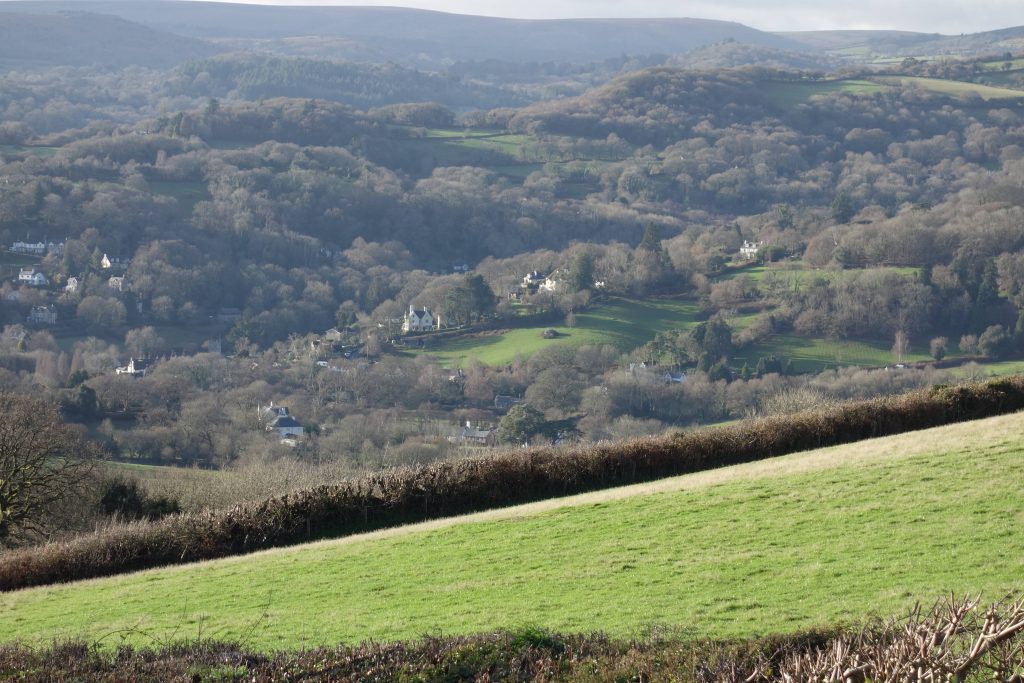
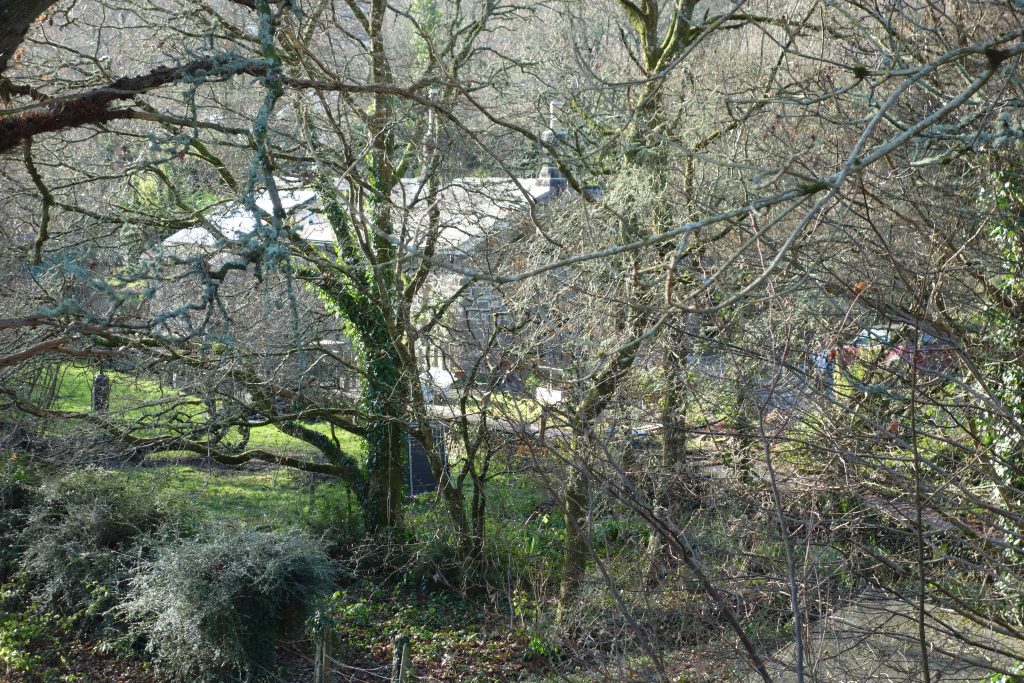

© Copyright David M Murray-Rust and licensed for reuse under this Creative Commons Licence.
https://www.geograph.org.uk/photo/6378677
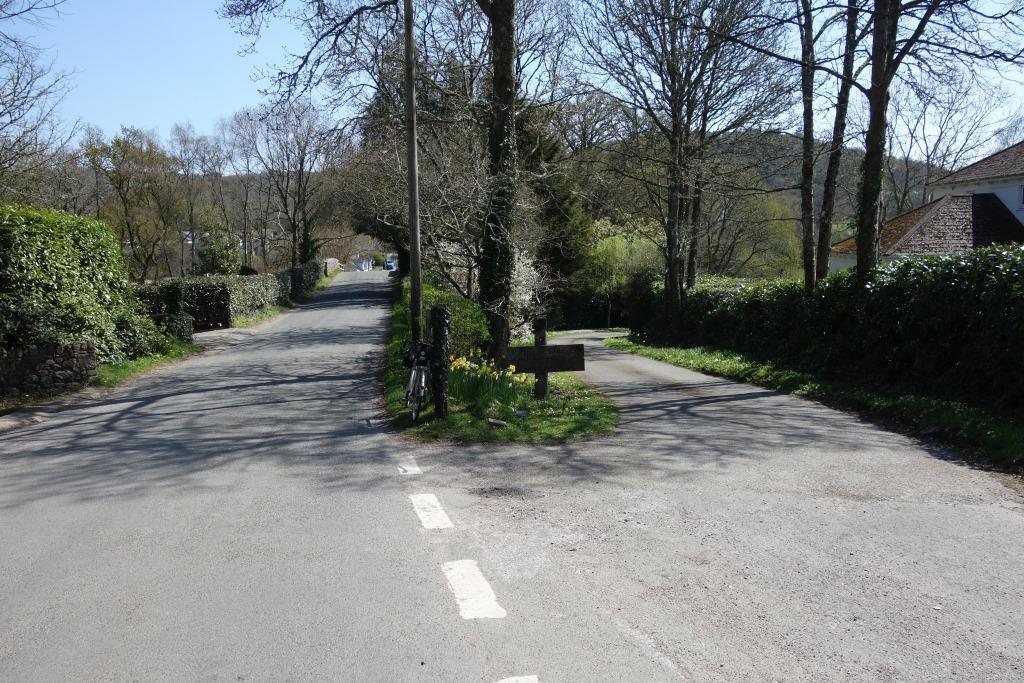
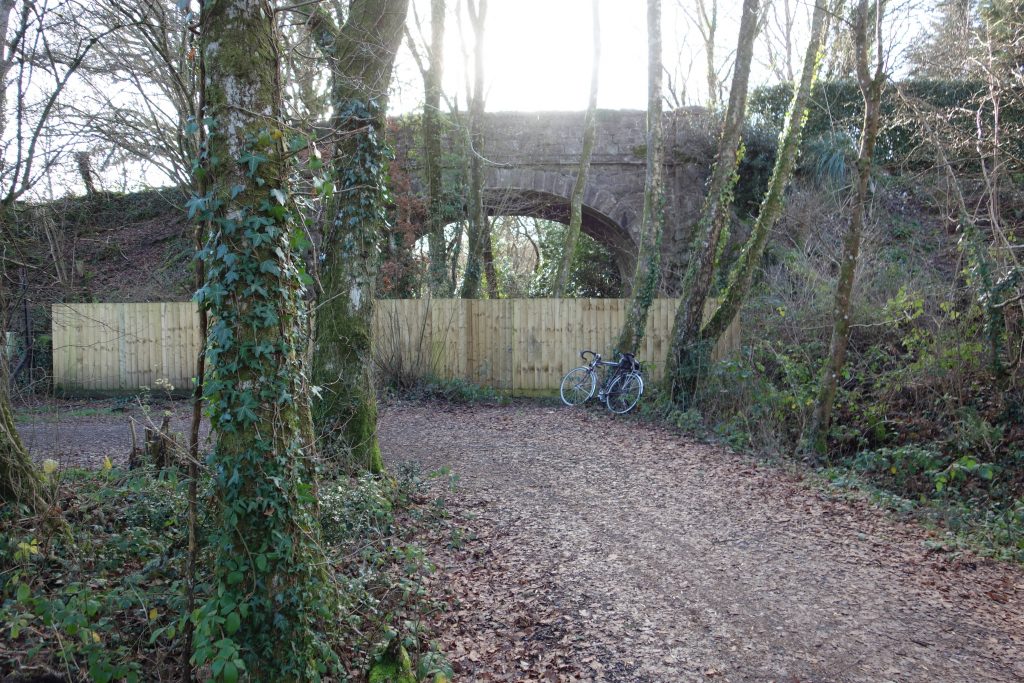
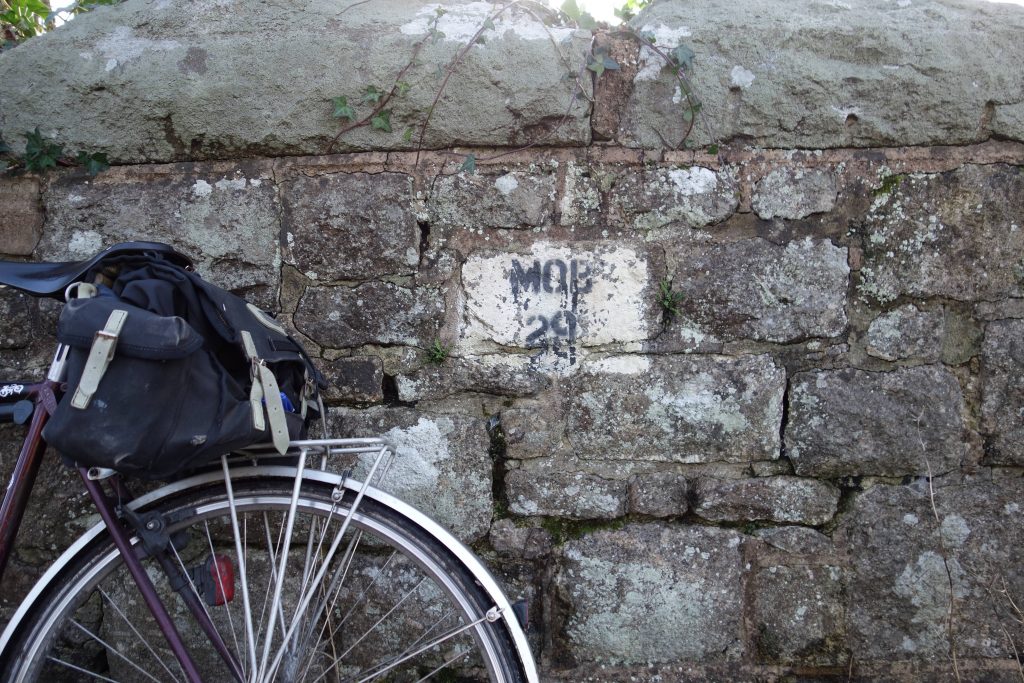
Moretonhampstead Branch, structure no. 29
Left: An unusual straining post and an undated Great Western Railway boundary marker. This one may have been repositioned as they are usually found away from the fences of operational land.
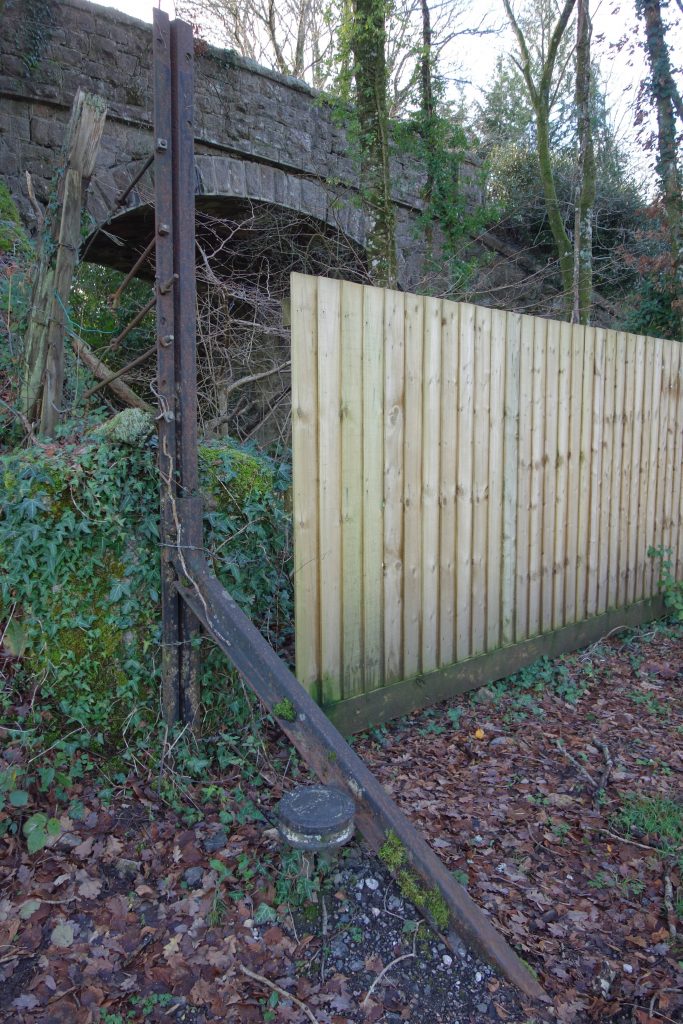
September, 2024: Along with many bridges the scout had seen in the last few years, including of course Station Bridge at Christow, National Highways had repaired the one at Lustleigh and cleared around it. The organization has certainly redeemed itself after the fiasco at Great Musgrave in Cumbria.
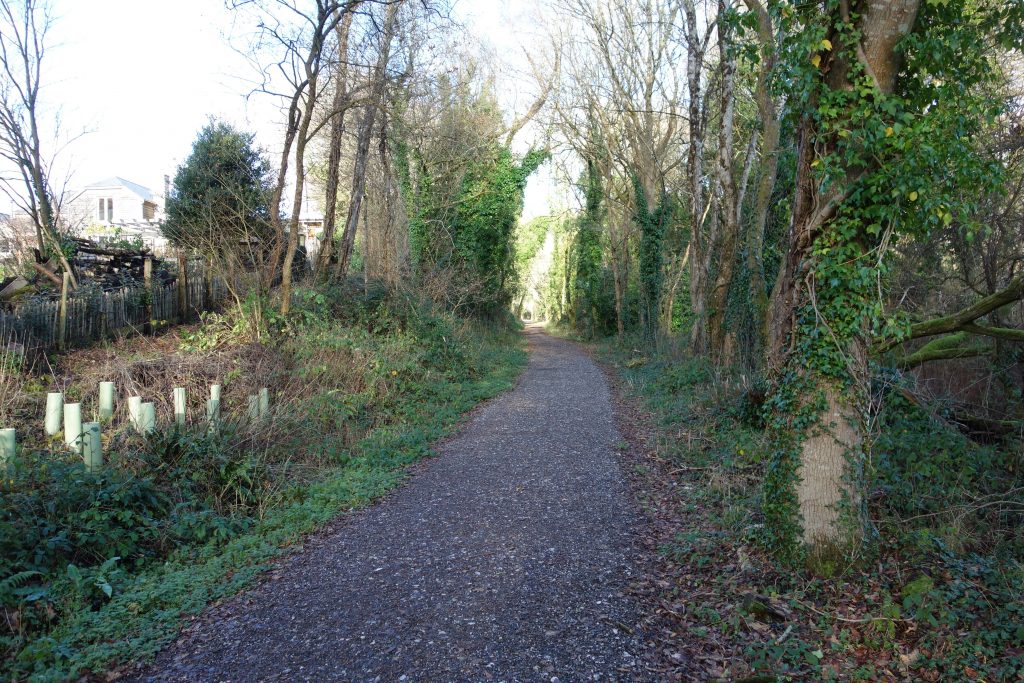
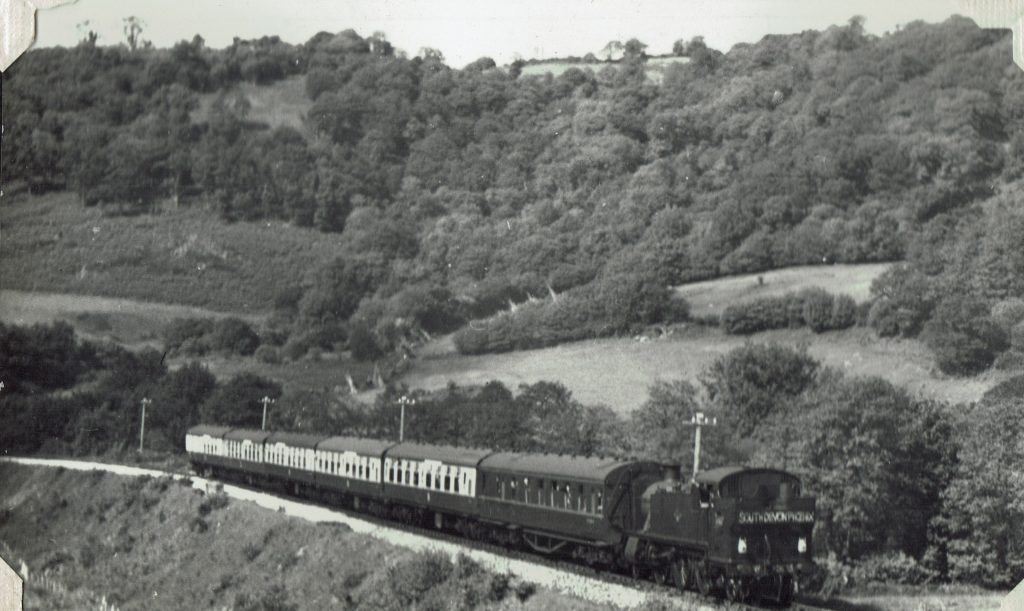
5153 on the “South Devon Phoenix” return excursion from Moretonhampstead to Paignton approaching Lustleigh. 11-6-62
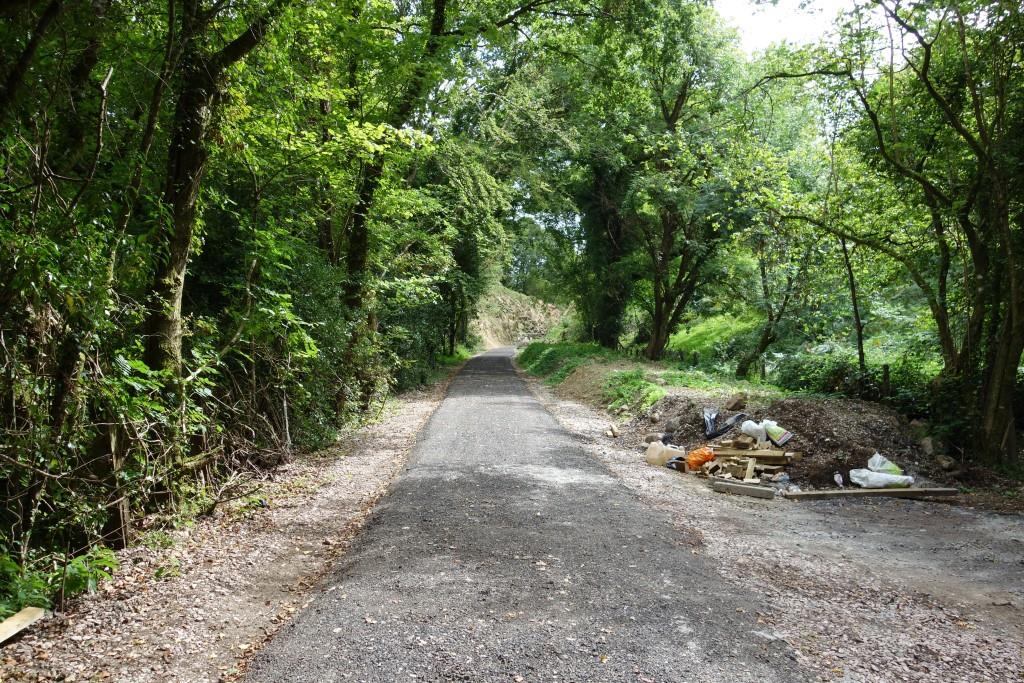
This was taken in 2019 before the path was opened. The works access at left from Caseley Lane has now been closed off. It is one of the many annoyances of these paths that they often cannot be joined intermediately.
Before work had started on the trail, the scout once parked the utilicon beside the road while on an inspection with young Roland. A farmer stopped his tractor to ask what was happening and the scout told him that they were intending to rebuild the railway. The farmer thought that this would be a good thing, adding: “It’d bring a bit of work. Better than they bliddy old cyclists.”
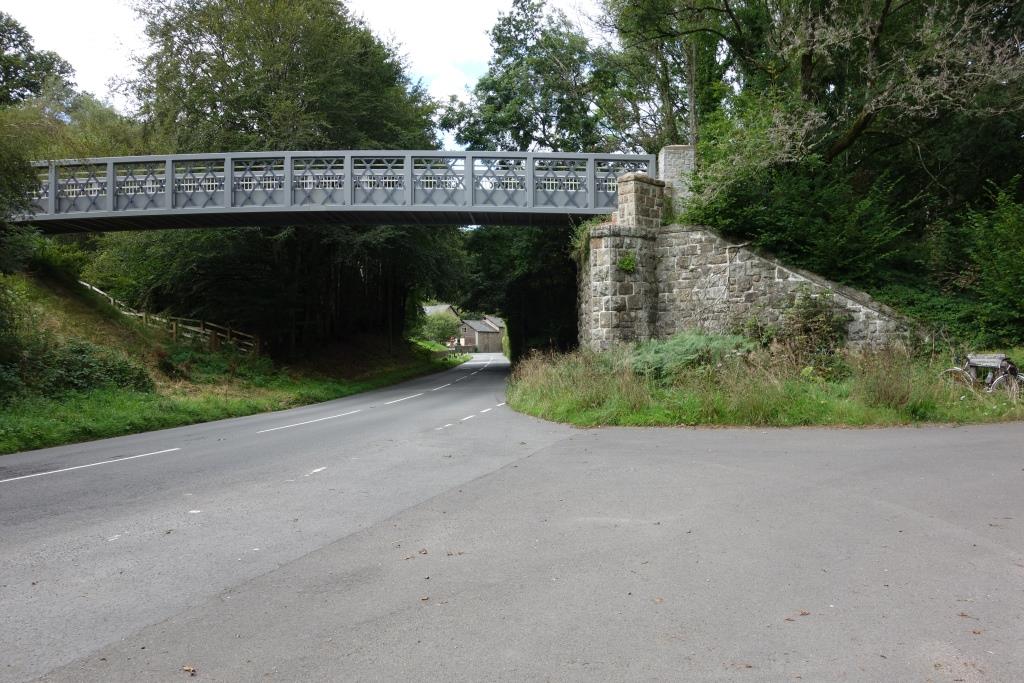
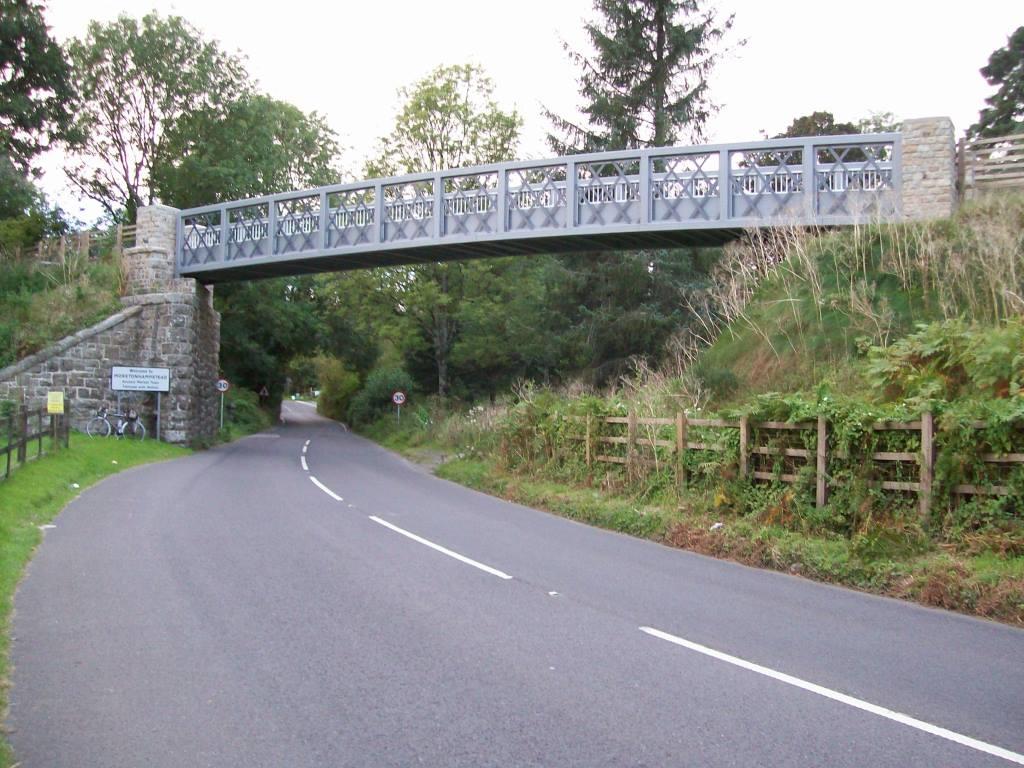
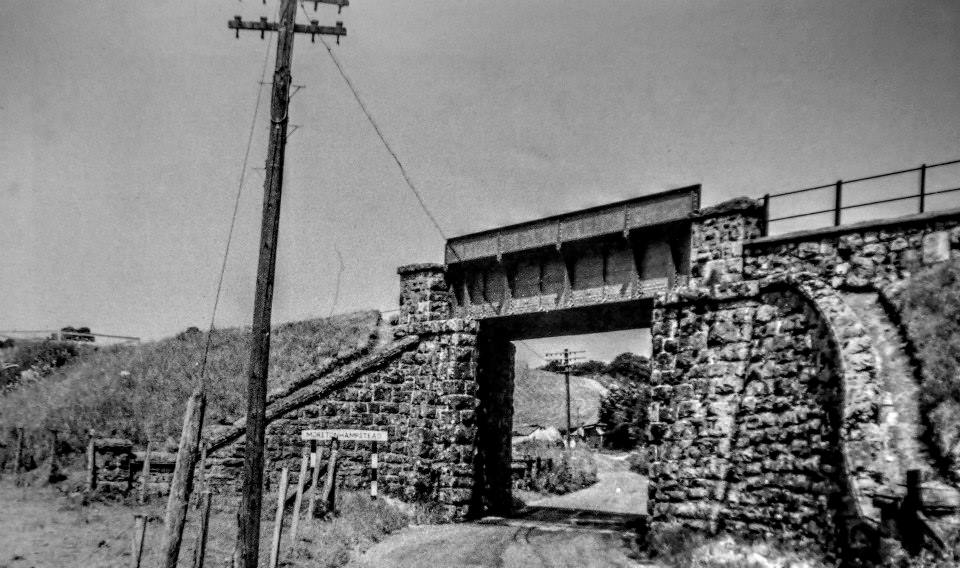
Moretonhampstead
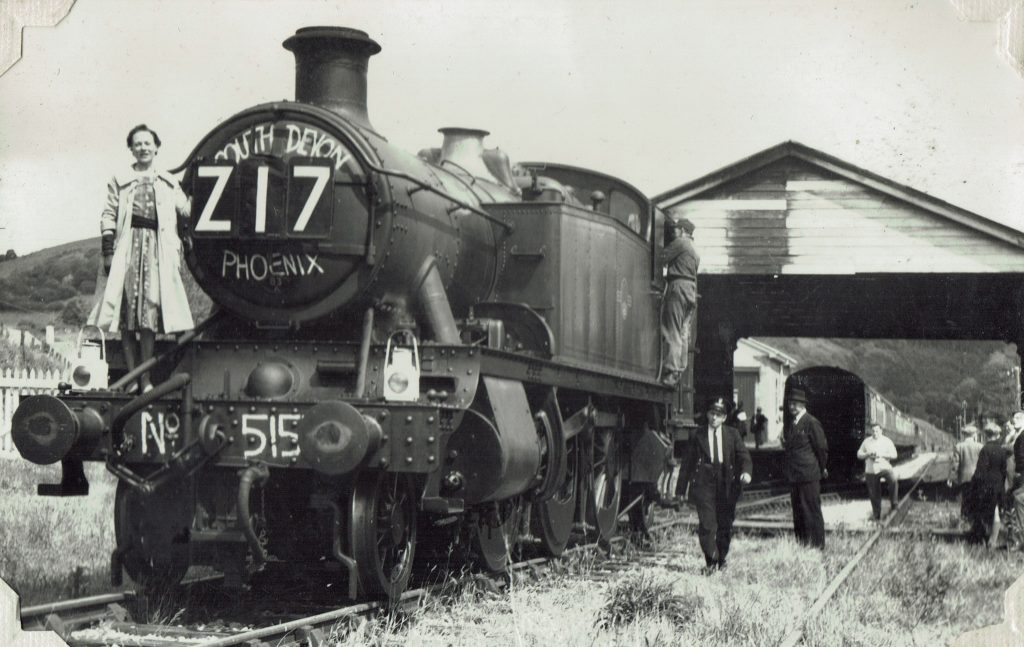
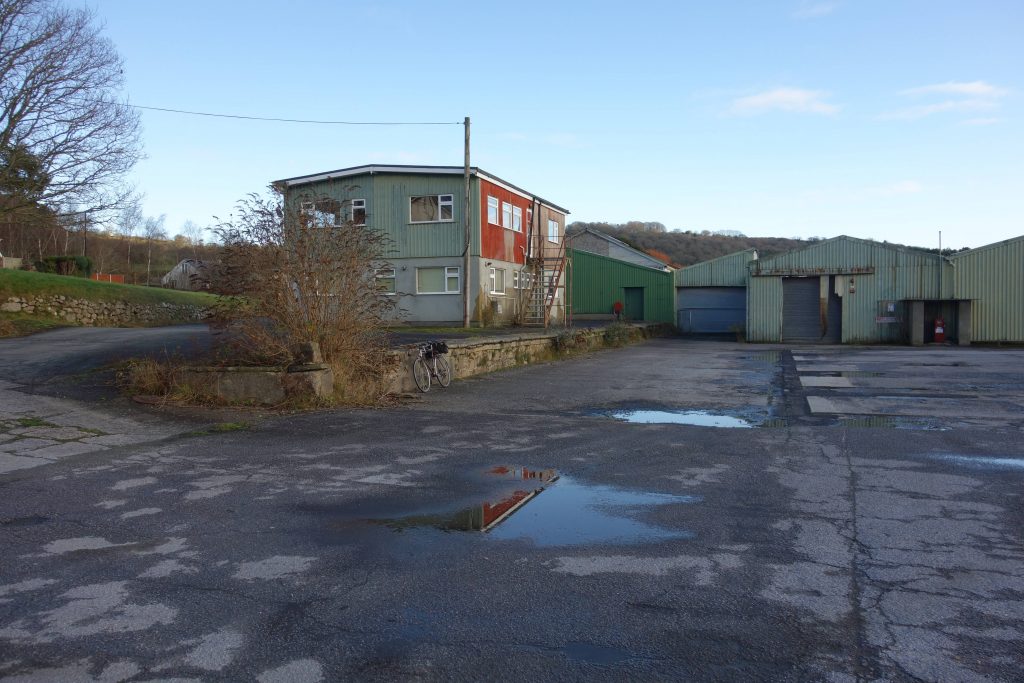
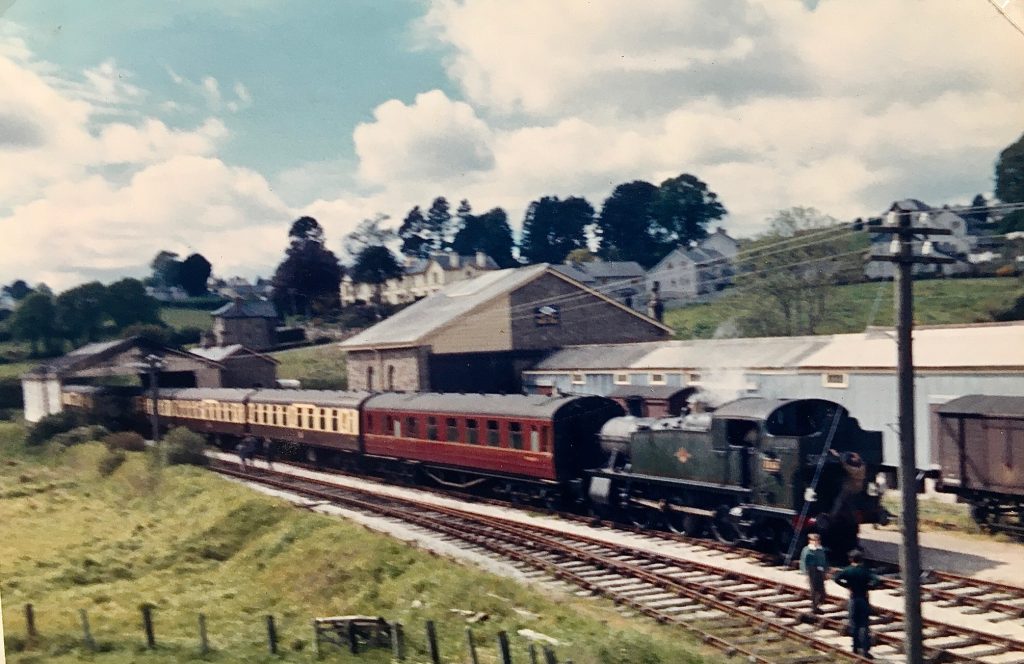
The following gallery contains photographs very similar to those already published. It can be assumed that they were taken within a year or so of the passenger service being withdrawn. (B.R./O.P.C.)
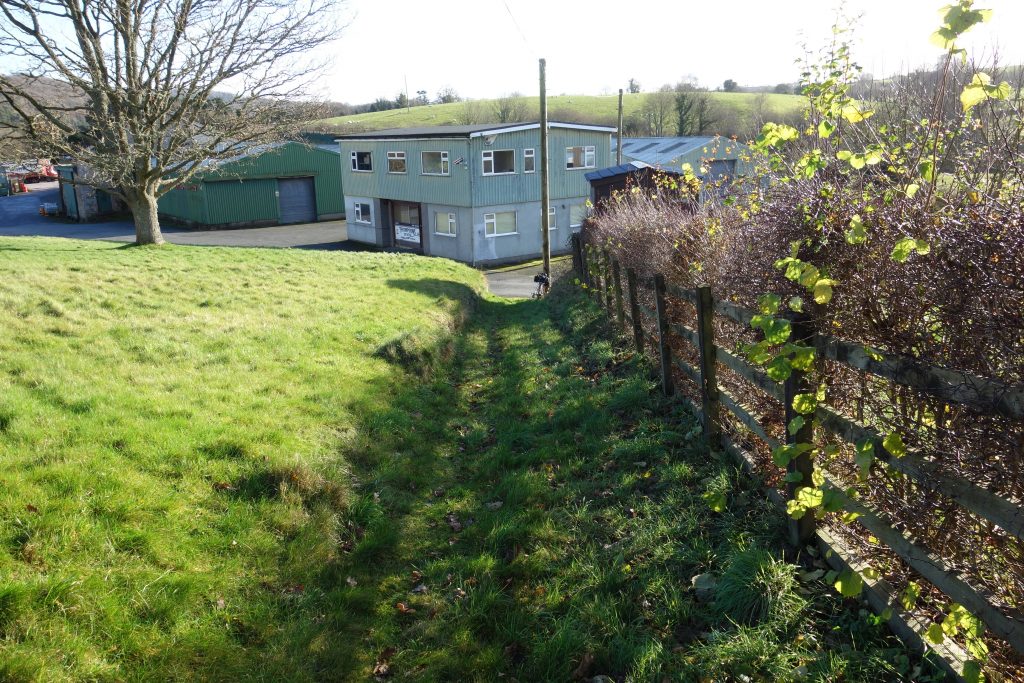
The railway’s objection to the development can be read in this entry under “Campaigning.”
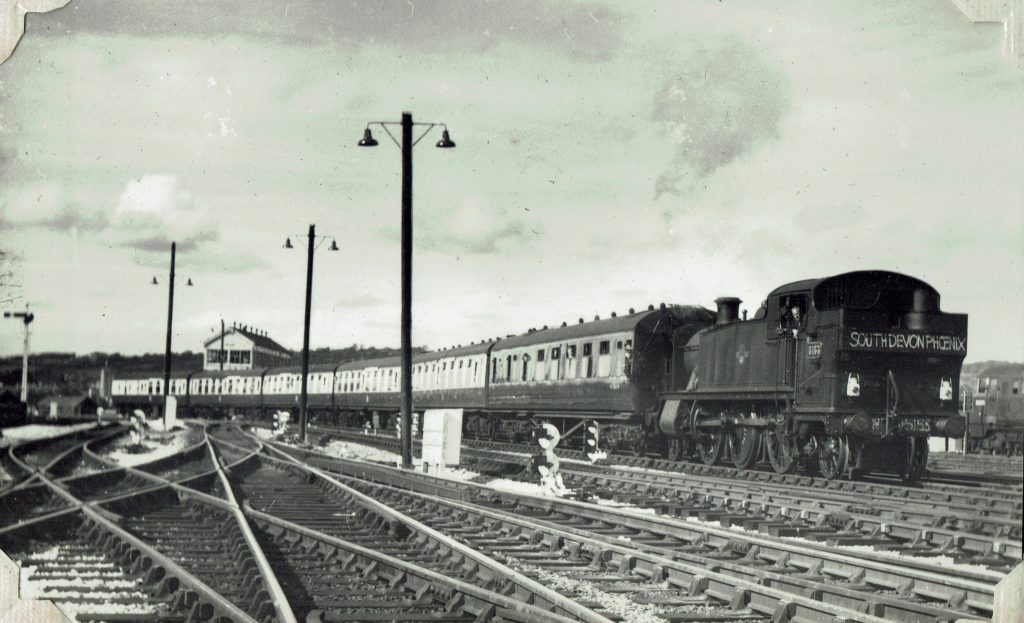
5153 on the “South Devon Phoenix” entering Newton Abbot Station from Moretonhampstead on its return run to Paignton. W. Underhay on the footplate. 11-6-62
At centre is the Up Through. The train is running onto the Down Main. Between are the Up Main and Up Relief. The Moretonhampstead Branch was directly connected with all six running lines through the station, serving eight platform faces, as well as the branch bay.
This was to be the second to last passenger train from Moretonhampstead.
Special Trains on the Moretonhampstead Branch
Charity HST Special, 10th October, 2015
The scout rode through Moretonhampstead twice in July, 2022. Returning from Torquay, he photographed the station from the “Wray Valley Trail” and on his way back from Chagford, he looked in horror at the frontage.
April, 2025: This was the scout’s first sight of the completed development.
In a triumph for misguidedness, the place which held the potential to become a sustainable transport hub was turned into a heavy lorry depot, with goods being trunked in and out via the often narrow A382.
Now much of the old station has become another dreary housing enclave whose driftwood residents will more than likely drive everywhere, even into town if they ever deign to venture there.
Standing opposite the former main gate and recently exposed is the post, still bearing flecks of Devon General red paint, which once would have carried the bus timetable case.
How often does the twice a day “178” from Newton Abbot stop here now, the scout wondered?
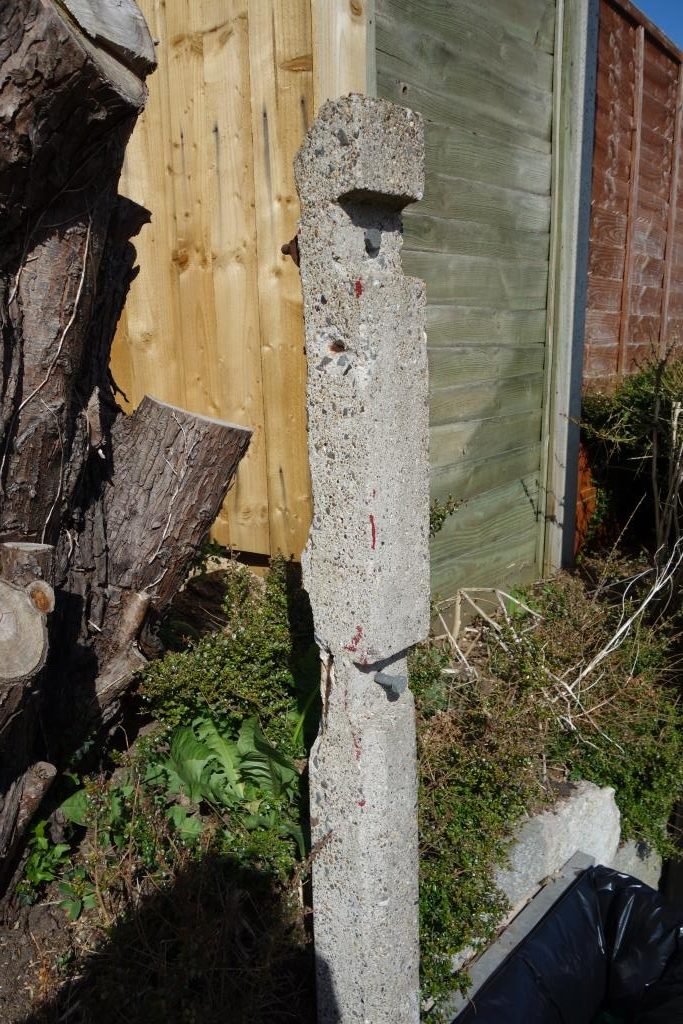
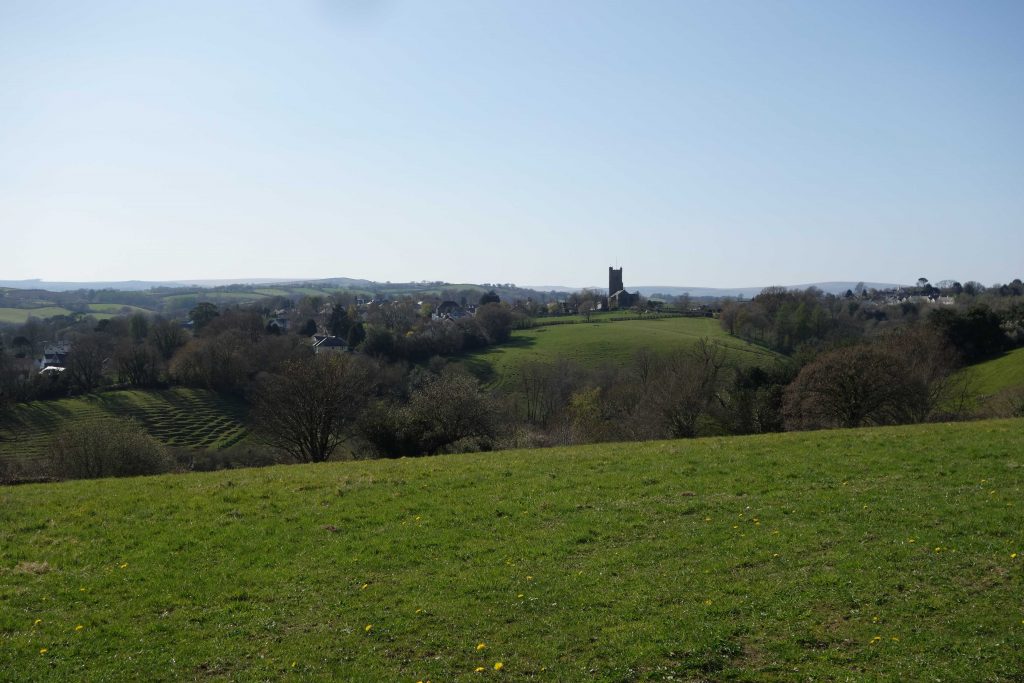
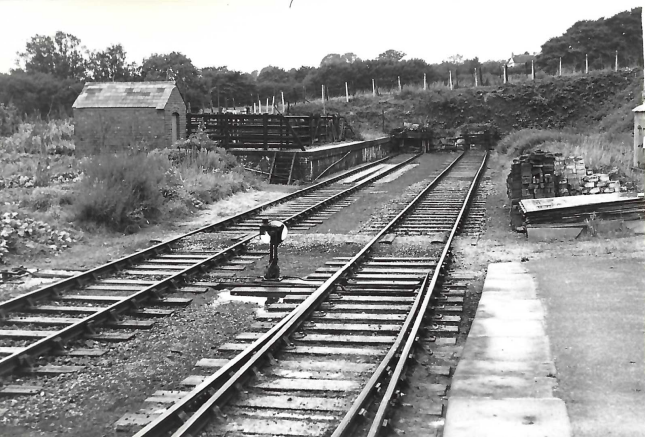

Tony was brought up on a farm on the edge of Dartmoor, near Chagford, and remembers going to Moreton with his Father a couple of times to collect a Kerry Hill ram which had been sent from Welshpool as passenger train traffic.

